HUMANS of IMPACT


FREE WINTER 2023
EXPLORING LIFE, LAND AND CULTURE FROM THE HEART OF THE YELLOWSTONE REGION
SPECIAL EDITION
When science, innovation, technology and creativity collide with a common goal of creating something unlike anything else, you get Peak Skis by Bode Miller. Not just a new ski. A radically better ski. For every part of the mountain. But only available at PeakSkis.com




GENERAL CONTRACTING FOR LUXURY REMODELING & NEW CONSTRUCTION pjourney@jandsmt.com | 406.209.0991 | www.jandsmt.com WE CARE ABOUT EVERYTHING WE DO


REDEFINING

PARADISE
We’re not sure a more perfect combination exists – adventures by day across Paradise Valley, followed by the comforts of Sage Lodge by night. With Sage Lodge as your basecamp, you can enjoy fly fishing on the Yellowstone River, private spring creeks, or in nearby Yellowstone National Park. And while Paradise Valley is known for its abundant, blue-ribbon waters, there’s also more to enjoy at Sage Lodge. Grab a hearty Montana-inspired meal in the Fireside Room or The Grill, pamper yourself at The Spa, and kick back with a cocktail on the patio while taking in breathtaking views of Emigrant Peak.
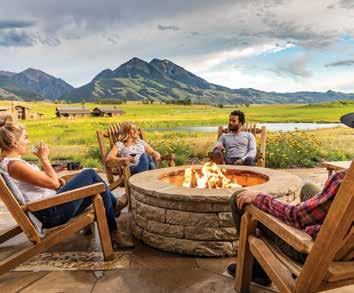
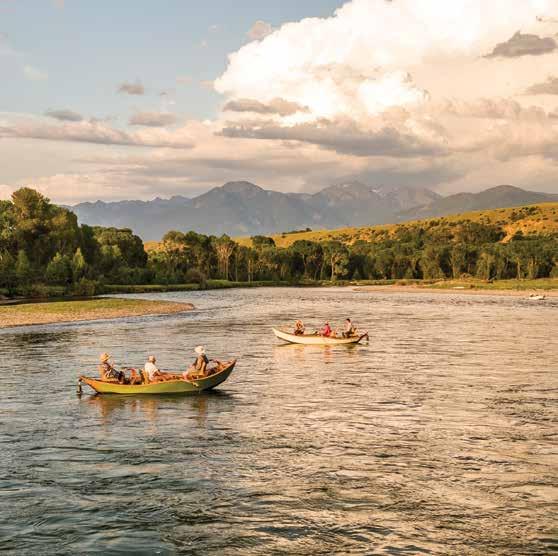

VISIT SAGELODGE.COM OR CALL 855.400.0505.

59065
55 Sage Lodge Drive, Pray, MT
Svalinn breeds, raises and trains world class protection dogs. Choose a Svalinn dog and you’ll be getting real peace of mind in the package of a loyal, loving companion for you and your family.
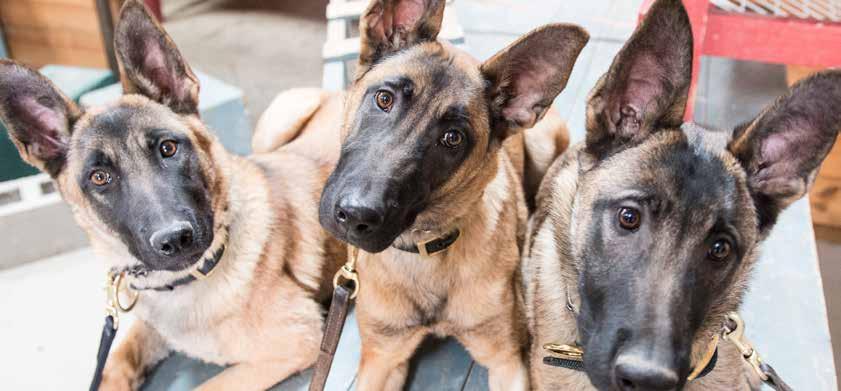
svalinn.com 406.539.9029 Livingston, MT

Are you ready to Svalinn love?

TABLE OF CONTENTS THE ACTION
19 Swift
20 Fluid
21 Graceful
OUTBOUND
26 Our
ENVIRONMENT 36 Kaitlyn
42 Charlie
45 Matt
54 Steven
60
67
INDUSTRY 74 Chris
80
84 David
94
102
112
CULTURE 118
128
134
140
148
FEATURED
156
8 MOUNTAIN MTOUTLAW.COM
ISSUE UPDATES
Water: Protecting Montana’s treasured rivers
Landscape: Creating passageways for Montana wildlife
Passage: Preventing salmon extinction
GALLERY
Neighbor, Warren Miller
Farrington: Protecting our winters
Gaillard: Prioritizing sustainability in cannabis growth
Skoglund: Ranching for a new land ethic
Amstrup and Daniel J. Cox: Connecting Bozeman’s conservation community with the Arctic
Jonathan Marquis: A mission to visit and draw all of Montana’s glaciers
Brett Jenks: Q&A with Rare CEO on initiating change for a healthier earth
Walch: Sparking a DEI movement in the ski industry
Kris Inman: A quest to empower women in STEM
and Connor Wallace: Tech to save water and simplify farming
Bode Miller and Andy Wirth: Shaking up the ski industry
Waded Cruzado and Leon Costello: ‘Year of the Bobcat’
Yarrow Kraner: Everyone’s inner superhero
Gov. Doug Burgum: Preserving Theodore Roosevelt’s legacy
Hilaree Nelson: Honoring the life of one of the greatest mountaineers
Kqyn Kuka: Montana’s first FWP tribal liaison
Scott Carney: Crafting stories as a tool of impact
Kadie Neuharth: The impact of one heart on another
OUTLAW
Tom Skerritt: A lifetime relationship with free-flowing waters
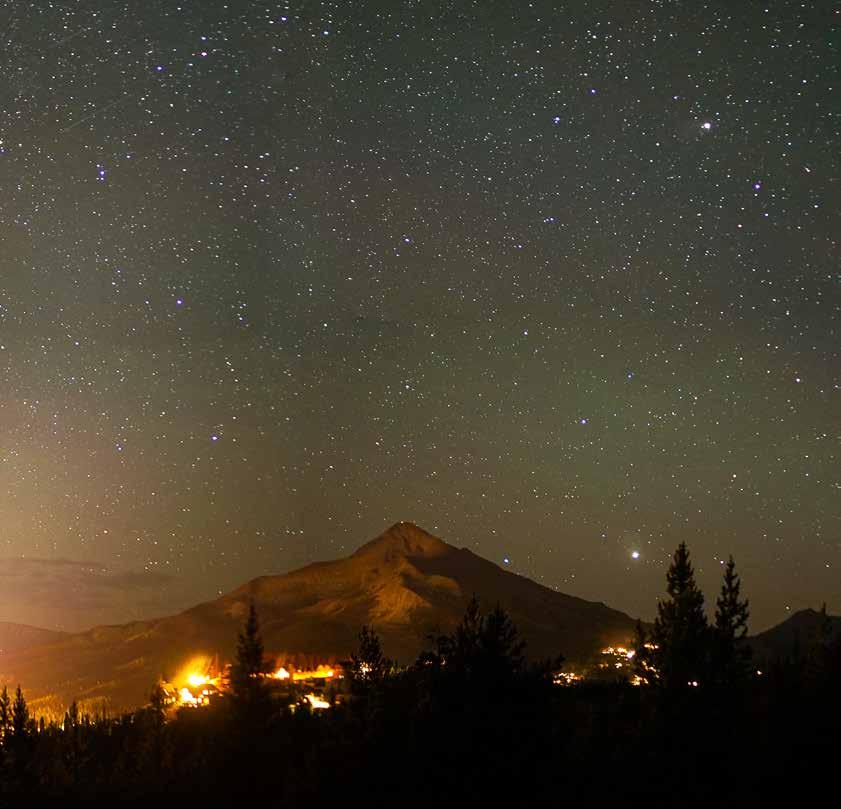 The Milky Way shines over Big Sky’s Lone Mountain.
The Milky Way shines over Big Sky’s Lone Mountain.
9
PHOTO BY ETHAN SCHUMACHER
MOUNTAIN MTOUTLAW.COM
OUTBOUND GALLERY
WARREN MILLER

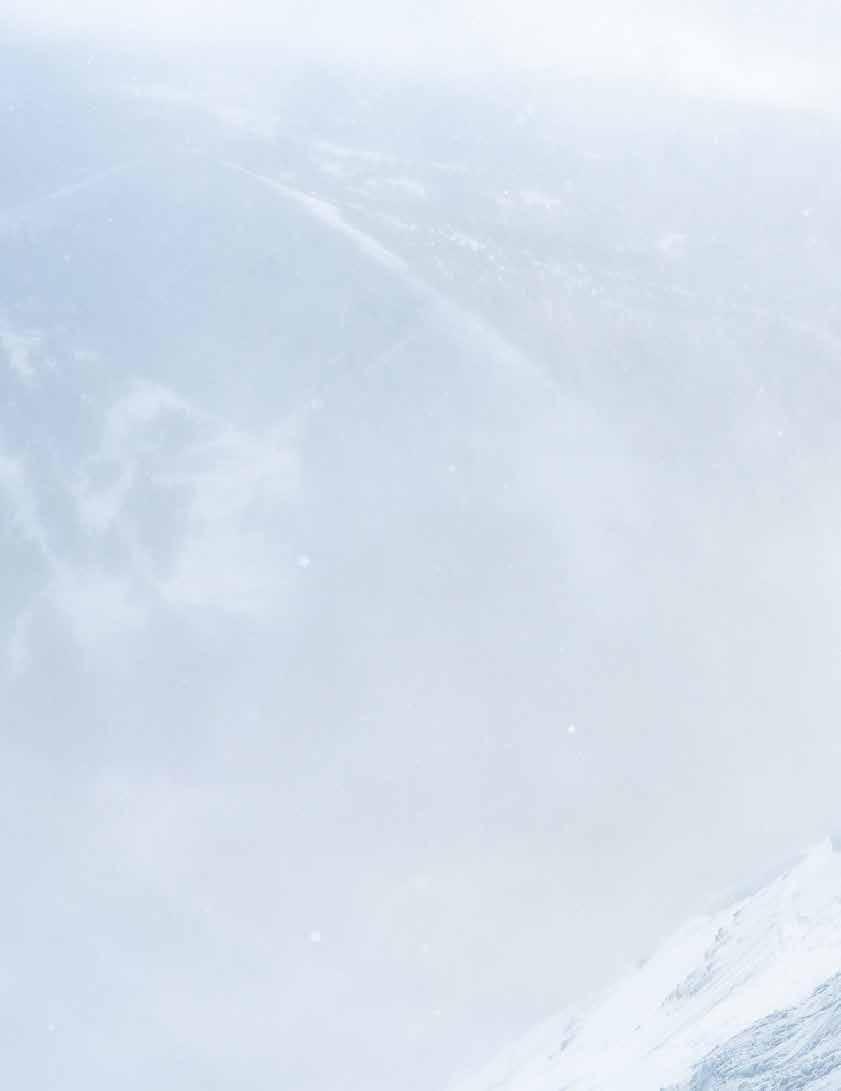
Wise advice from the world's original ski bum p.26
ENVIRONMENT
KAITLYN FARRINGTON
Protecting our winters p. 36
CHARLIE GAILLARD

Prioritizing sustainability in cannabis growth p. 42
MATT SKOGLUND

Ranching for a new land ethic p. 45

STEVEN AMSTRUP AND DANIEL J. COX
Connecting Bozeman’s conservation community with the Arctic p. 54
JONATHAN MARQUIS
A mission to visit and draw all of Montana’s glaciers p. 60
BRETT JENKS
Q&A with Rare CEO on initiating change for a healthier earth p. 67








INDUSTRY
CHRIS WALCH

Sparking a DEI movement in the ski industry p. 74
KRIS INMAN
A quest to empower women in STEM p. 80
DAVID AND CONNOR WALLACE
Tech to save water and simplify farming p. 84
BODE MILLER AND ANDY WIRTH Shaking up the ski industry p. 94




WADED CRUZADO AND LEON COSTELLO
‘Year of the Bobcat’ p. 102
YARROW KRANER
Everyone’s inner superhero p. 112
10 MOUNTAIN MTOUTLAW.COM
CULTURE FEATURED OUTLAW
GOV. DOUG BURGUM

Preserving Theodore Roosevelt’s legacy p. 118
HILAREE NELSON

Honoring the life of one of the greatest mountaineers p. 128


KQYN KUKA
Montana’s first FWP tribal liaison p. 134
SCOTT CARNEY
Crafting stories as a tool of impact p. 140

KADIE
NEUHARTH
The impact of one heart on another p. 148
TOM SKERRITT

A lifetime relationship with free-flowing waters p. 156
 Big Sky local Holden Samuels flies over the cornice on Dictator Chutes at Big Sky Resort. PHOTO BY ETHAN SCHUMACHER
Big Sky local Holden Samuels flies over the cornice on Dictator Chutes at Big Sky Resort. PHOTO BY ETHAN SCHUMACHER
11 MOUNTAIN MTOUTLAW.COM
FEATURED CONTRIBUTORS
Owned and published in Big Sky, Montana.
PUBLISHER
 Eric Ladd
Eric Ladd
MANAGING EDITOR
WEB & DIGITAL
Hiller Higman
Julia Barton
Butler PRODUCER
Bella
Mira Brody
ASSISTANT EDITORS
Tucker Harris
Leslie Kilgore
Jason Bacaj
Jack Reaney
Carter Walker

GRAPHIC DESIGN & ART
PRODUCTION
Travis LaRiviere
ME Brown
Trista Hillman
Brooke Benson
Corey Ellbogen Beans
Michael Ruebusch
SALES & ADVERTISING
E.J. Daws
Ersin Ozer
Patrick Mahoney
Sophia Breyfogle
ACCOUNTING
Sara Sipe Taylor Erickson
CEO Megan Paulson

COO, VP FINANCE Treston Wold
DISTRIBUTION MANAGER Ennion Williams

Visit outlaw.partners to meet the entire Outlaw team.
BRIAN LADD
RICHARD FORBES
CONTRIBUTING WRITERS
Sierra Cistone, Matt Crossman, Richard Forbes, Gabrielle Gasser, Brian Ladd, Clarise Larson, Alex Miller, Joseph O’Connor, Bay Stephens, Sophie Tsairis
CONTRIBUTING PHOTOGRAPHERS/ARTISTS
Tom Attwater, Perry Brown, Sierra Cistone, Daniel J. Cox, Hazel Cramer, Seth Dahl, Chris Douglas, Kelsey Dzintars, Richard Forbes, Gabrielle Gasser, Joshua R. Gatley, Ben Girardi, Adrian Sanchez-Gonzalez, Kelly Gorham, Jackie Jensen, Nick Kalisz, John Kelly, Steve Korn, Ken Lund, Fredrik Marmsater, Micheli Oliver, Dave Pecunies, Colter Peterson, Holly Pippel, Kathy Quigley, Micah Robin, Ethan Schumacher, Kim Spectre, Kene Sperry, Chris Wellhausen
Subscribe now at mtoutlaw.com/subscriptions.
Mountain Outlaw magazine is distributed to subscribers in all 50 states, including contracted placement in resorts and hotels across the West. Core distribution in the Northern Rockies includes Big Sky and Bozeman, Montana, as well as Jackson, Wyoming, and the four corners ofYellowstone National Park.
To advertise, contact Ersin Ozer at ersin@theoutlawpartners.com.
OUTLAW PARTNERS & Mountain Outlaw P.O. Box 160250, Big Sky, MT 59716 (406) 995-2055 • media@outlaw.partners
ON THE COVER: Actor Tom Skerritt is famous for many timeless roles, among them the Rev. Maclean in Robert Redford’s ARiverRunsThroughIt But now at 89 years old, he’s turning toward a new role—that of a conservationist. Read about Skerritt’s lifelong love for rivers and why he believes they deserve our engagement on p. 156. PHOTO BY STEVE KORN
While balancing the demands of raising his three children and running a team of real estate agents in Oregon, Brian Ladd is always looking to refuel with outside adventures. At Ladd's wedding, Eric showed a clip of A River Runs Through It, and the circle was completed when Ladd had the opportunity to sit down with Tom Skerritt for this issue’s feature article. The Rhythm of the River: Tom Skerritt reflects on a lifetime relationship with free-flowing waters, p. 156
Richard Forbes is a Montana-based outdoor guide and environmental journalist telling stories about the intersection between identity, the outdoors, mental health and climate change. He's currently working on a long-term project about the relationship between humans and the glaciers of Glacier National Park. When he remembers to slow down, he writes poetry and sits next to rivers. Witness: Jonathan Marquis draws connection between Montana’s glacial and human communities, p. 60

SOPHIE TSAIRIS
Sophie Tsairis is a freelance writer with a master’s in Environmental Science Journalism. Storytelling is her way of sharing the human experience and keeping curiosity alive. Nearly always in motion, writing and reading have always been an anchor for her hungry and restless spirit. Matt Skoglund’s Bison Ranch Pipe Dream: First-generation Montana ranchers write a new land ethic, p. 45
STEVE KORN
Steve Korn is a Seattle-based photographer who specializes in photographing interesting people from all walks of life. He is fascinated by what drives each of us and tries to convey those emotions and ideals in his work. Korn met Tom Skerritt in 2019 and photographed the portraits featured in this edition of Mountain Outlaw in spring of 2022. The Rhythm of the River: Tom Skerritt reflects on a lifetime relationship with free-flowing waters, p. 156
CHECK OUT THESE OTHER OUTLAW PUBLICATIONS: explorebigsky.com
© 2023 Mountain Outlaw Unauthorized reproduction prohibited
12 MOUNTAIN MTOUTLAW.COM
DESTINY IS A RIVER
This past summer I had the privilege of joining a Boundary Expeditions trip down the Middle Fork of the Salmon River for a story I wrote about New York Times bestselling author Scott Carney (p. 142). At our third night’s camp, I sat on the bank of the wild, free-flowing river and let the water rush over my feet. I considered the river as a metaphor for the journey we each take in life.
“We sit on the edge of the river and watch it carry all the things our lives can be,” I wrote in my journal. “As it tumbles over rocks and spills into channels, our potential fates will dwindle down to one destiny that waits for us at the end.”
Months later, Mountain Outlaw contributor Brian Ladd interviewed actor and conservationist Tom Skerritt, most famous for his role as the Reverand Maclean in the 1992 film A River Runs Through It (p. 156). Skerritt told Ladd when you dangle your feet in the river and let the water rush by, you feel the past, present and future. He said at age 89, he finally feels like he truly understands the famous line from A River Runs Through It: “Eventually all things merge into one and the river runs through it.” In the end, he suggests, everything that our lives are and everything they’ve been come together, and we all feed into the ocean.
In this special edition of Mountain Outlaw, we’re celebrating Humans of Impact by telling stories of individuals that have used their lives and their work to influence environment, industry and culture. These stories are a chance to roll up your pants and dangle your feet in the river; to experience the pasts,
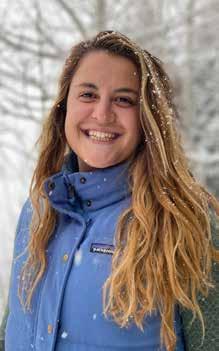
presents and futures of these profound people and to feel how they’re connected. Eventually all things merge into one, and our fates bleed together for a collective impact on our communities and our world as a whole.
This magazine will take you from a ranch in the North Bridger Mountains in Montana, where a former Chicago lawyer is committing his life to promoting natural symbiosis on a bison ranch, to the depths of the Arctic, where a photographer and scientist are applying Bozeman, Montana’s conservation values to endangered polar bears. You’ll meet Montana Fish, Wildlife and Parks’ first tribal liaison, who is rewriting a centuries-old story of tension and wildlife mismanagement. You’ll journey back in time with North Dakota Gov. Doug Burgum to Theodore Roosevelt’s Western rebirth. Just to name a few.
These stories are how we’ve chosen to fill the 25th edition of Mountain Outlaw. In every edition we’ve written, designed and printed, the common thread is connection, and people have always been at the heart of that. We live in a time of jarring divisiveness. I’m writing this letter on the heels of another election year, where candidates spent millions of dollars demonizing one another. We spend more time fighting each other than understanding each other.
Our hope is that by celebrating these Humans of Impact, we can be inspired by our neighbors. Let these stories cast ripples in your own river. Our lives can create impact for the whole system, because “eventually all things merge into one.”
Bella Butler Managing Editor
13 MOUNTAIN MTOUTLAW.COM

Fay Ranches has over 30 years of experience brokering the finest land assets from coast to coast. Through our dedication to family, investment value, sporting pursuits, and conservation, we have built a network of relationships that offer unparalleled reach and direct contact with the most qualified landowners and investors. If you are thinking of selling, buying, or just want to get our thoughts on the current real estate market, contact a member from our Bozeman office at your convenience.
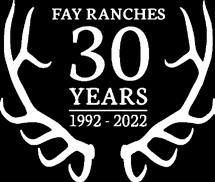

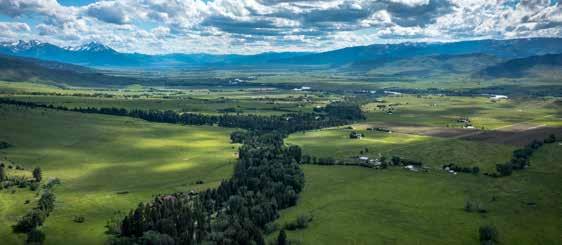
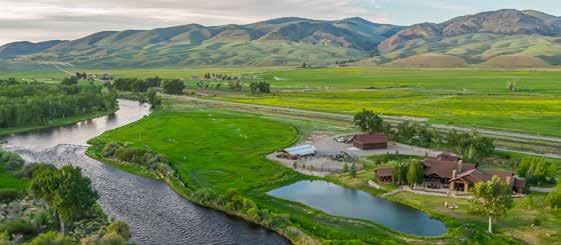

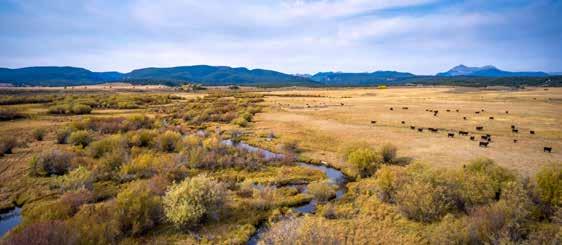
WWW.FAYRANCHES.COM | 800.238.8616 | INFO@FAYRANCHES.COM DEEP CREEK RANCH | Livingston, MT $5,900,000 | 238 ± acres RIVERS EDGE RANCH | Melrose, MT $7,845,000 | 32 ± acres DEEP CREEK WILDLIFE SANCTUARY | Townsend, MT $7,995,000 | 968 ± acres ARROW RANCH | Wisdom, MT $38,514,500 | 14,982 ± acres
With views of all six surrounding mountain ranges, Six Range is a modern housing community that brings a Scandinavian design aesthetic to Bozeman.




Own your own home within Montana’s newest design-forward, outdoors-oriented neighborhood.

THE MOUNTAIN LIFESTYLE, REDESIGNED SIXRANGE.COM 406.577.8301 A PAINE GROUP DEVELOPMENT UNITS AVAILABLE NOW MOVE-IN-READY 2024
Teton Valley Rewards the Curious
There is so much to explore and enjoy in Teton Valley this winter.


Our remote, rural valley may take a little extra effort to navigate, but the rewards are great.
Winter is a celebrated and popular time of year in Teton Valley. Here are a few tips for navigating the snowy season,while being a great visitor:

• Be early, for everything. Whether it’s hitting the slopes at the resort or going out to eat, get there early and you’ll be amply rewarded.
• Be self-sufficient. Carry water, snacks, extra warm clothing, and first aid supplies on your adventures.
• Be prepared. Start at the Geo Center, Forest Service office, and local outdoor shops and load up on local intel for your winter adventure.
• Be patient, kind, and respectful of the people, animals, and ecosystem.
• Drive slowly. As we like to say, you didn’t come here to be in a hurry.
• Seek out local goods and be generous to the hardworking staff.
Enjoy your
visit.
Book your stay now!
CAMRIN DENGEL
Taking ACTION

Updates on issues facing the Greater Yellowstone Ecosystem

In the summer of 2022, Mountain Outlaw published its first special edition, The Action Issue. In 172 pages, our troupe of writers and photographers told stories of adversity, action and actors from across the West, ending each piece with a call to action for our readers to engage with the issues and solutions of our region. Several months later, we’re bringing you updates from three of the stories as a reminder to stay engaged. The challenges our communities and environment face don’t disappear when the news cycle turns over. Stay active.
-The Editors
Sun sets over the upper Gallatin River near Big Sky, Montana. PHOTO BY MICAH ROBIN
18 MOUNTAIN MTOUTLAW.COM
Above: The cover of The Action Issue Mountain Outlaw summer 2022 edition featured a monarch butterfly. Like the “butterfly effect,” even the smallest action can have a massive impact. ILLUSTRATION BY KELSEY DZINTARS
SWIFT WATER
FIGHTING TO PROTECT MONTANA’S TREASURED RIVERS
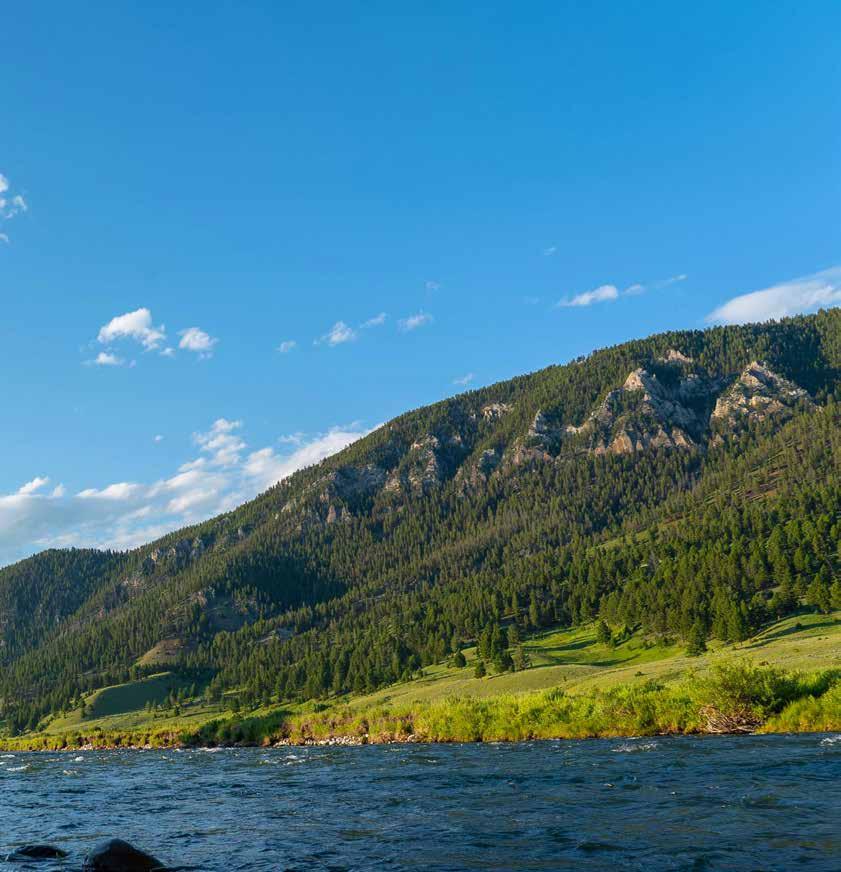
Last summer, Mountain Outlaw contributor and Northern Rockies Director for American Rivers Scott Bosse personified the Gallatin River—first known by native tribes as the Cut-tuh-o'gwa, meaning “swift water”—in a piece by the same name, with a call to action to preserve the iconic Missouri River tributary.
Bosse asked readers to help protect the Gallatin and 19 other Montana rivers by reaching out to Montana Sen. Steve Daines and Rep. Matt Rosendale and requesting they support the Montana Headwaters Legacy Act. The proposed bill would protect 385 stream miles of 20 rivers by adding them to the National Wild and Scenic Rivers register. The proposed legislation is “truly made in Montana,” according to Bosse.
On June 7, 2022, one day before the The Action Issue hit stands, Daines spoke against the bill at a U.S. Senate hearing, citing letters of opposition from 170 residents and other Montana groups.
Bosse said he never heard Daines oppose the bill before that moment. Despite public support from 80 percent of Montanans, according to Bosse, the bill failed to reach a Senate Energy and National Resources Committee vote.
Bosse and Kristin Gardner,
chief executive and science officer of the Gallatin River Task Force, have held weekly strategy meetings since June with a group called Montanans for Healthy Rivers. The group has spoken with many stakeholders opposed to the bill, engaging in productive dialogue to reduce misinformation. Gardner told Mountain Outlaw that she sees broad, bipartisan support and it's hard to believe it won’t pass in the next congressional session. But without Daines’ support for the bill, it cannot reach a committee vote.
“A small handful of special interest groups have Sen. Daines’ ear on this issue, and that’s very disconcerting for us,” Bosse said. “We’ve done everything we can to build tremendous public support. The fate of this bill is in Sen. Daines' hands.”
As the 2022 election season will likely push the bill into 2023, Bosse stresses his original call to action: contact the office of Sen. Steve Daines at contact@stevedaines.com.
“When a senator can’t hear what Montanans are saying, Montanans need to speak up a little louder,” Bosse said.
-Jack Reaney
19 MOUNTAIN MTOUTLAW.COM
FLUID LANDSCAPE
CREATING SAFE PASSAGEWAYS FOR SOUTHWEST MONTANA WILDLIFE
Wildlife cannot and does not live exclusively within national parks, wrote Mountain Outlaw contributor Brigid Mander in her Action Issue story “Fluid Landscape,” but many visitors don’t understand just how much land wild animals need. Different herds of different species each need summer range, winter range and a navigable migration corridor between them. Yet in a time of sprawling regional development, human infrastructure such as roads, railroads and fences often pose as deathly barriers to these corridors.
Twenty-four percent of reported accidents on the Montana section of U.S. Highway 191 between Bozeman and West Yellowstone involve wildlife and many more animal collisions go unreported, according to a 2020 Montana Department of Transportation study. In her story, Mander wrote that migrationoriented solutions including overpasses and underpasses can lower roadkill events by 90 percent.
The Center for Large Landscape Conservation is working to plan for safer passageways. In her piece, Mander asked readers to become citizen scientists by
recording observations of wildlife, both alive and roadkill. With enough data points, the CLLC has more information it can use to affect change.
In a recent reflection with Mountain Outlaw, Mander said that upgrading migration-friendly roadway infrastructure is a slow-moving, “glacial” process. She sees more urgency for human needs such as bike lanes. That being said, she’s seeing change near Jackson, Wyoming.
“There's more awareness, and highway departments are slowly but surely responding,” she said.
As this awareness spreads, Mander hopes more realtors and developers will sell the importance of minimizing human impact on wildlife, steering buyers away from private fences and encouraging native sagebrush instead of turf landscaping.
“We have proven solutions. It’s just about putting them in play,” Mander said.
The very citizen science Mander asked readers to engage in is also helping protect wildlife crossing the highly dangerous Montana Highway 64 and U.S. Highway 191 near Big Sky. The CLLC launched a wildlife reporting app
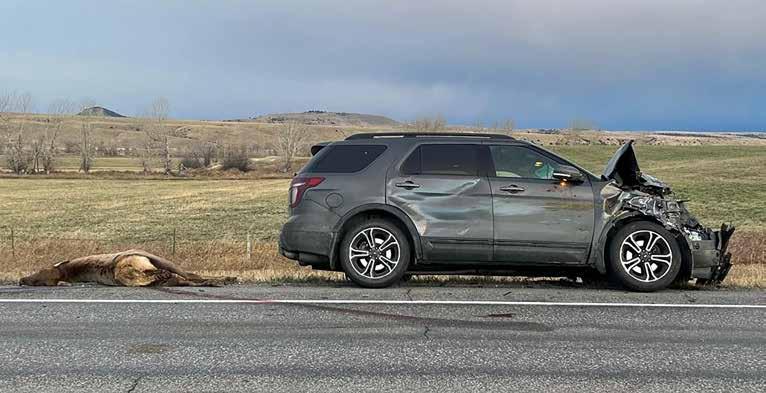
in spring 2021.
“It was slow to start,” said CLLC road ecologist Elizabeth Fairbank. “But it’s getting more traction. We are super thankful for all the citizens that contributed to that dataset.”
In October of 2022, Fairbank and the CLLC formed a committee including Montana State University’s Western Transportation Institute; a biologist; a Montana Department of Transportation engineer; a transportation liaison with Montana Fish, Wildlife and Parks; the U.S. Forest Service; and the National Park Service.
With hundreds of citizen reports and other animal data including aquatic life, the committee is creating recommendations for this pair of Montana highways, which intersect the fluid landscape of Yellowstone migration corridors.
The full report will be available in early 2023, and Fairbank said it might be the first time such a holistic dataset has been used to inform a traffic study the Greater Yellowstone Ecosystem. To learn more and get involved, visit largelandscapes.org.
Reaney
-Jack
In November of 2022, a series of elk and deer collisions on U.S. Highway 191 prompted public outcry. The stretch of road sees a high volume of commuters between Bozeman and Big Sky and is a major migratory corridor for wildlife.
20 MOUNTAIN MTOUTLAW.COM
PHOTO BY HOLLY PIPPEL
In the Action Issue story “Graceful Endurance,” Mountain Outlaw
Steven Hawley wrote that wild Chinook salmon are circling the extinction drain. A salmon’s natural pilgrimage to the ocean used to take two weeks, but now due to barriers including a 500-mile-long series of dams and reservoirs, their migration takes two months as they navigate the Columbia River Basin across Idaho, Washington and Oregon where the Salmon River meets the Snake River. During that extended time, fish are vulnerable to predators and expend more energy without natural river flow.
“There is no economic activity that involves a dammed river that cannot be accomplished another way,” Hawley wrote. “Wild Chinook salmon in the Middle Fork, by contrast, have only one way.” He called for readers to send an email with comments to the White House Council on Environmental Quality. Since March 2022, the council has held a dedicated inbox for comments on the Columbia River Basin.
Kyle Smith, Snake River director with American Rivers, spoke with Mountain Outlaw about an August 2022 report

released by Washington Gov. Jay Inslee and Washington Sen. Patty Murray.
The Murray-Inslee Report laid out an estimated cost between $10.7 billion and $33 billion to remove dams from the lower Snake River and replace the services they provide. The report does in fact recommend removing dams including Ice Harbor, Lower Monumental, Little Goose and Lower Granite, but only if the benefits of those dams—including hydroelectric energy and irrigation supply—can be replaced.
“[$10.7 to $33 billion] is a lot, but there’s also a lot of money spent maintaining the dams,” Smith said, pointing to nearly $20 billion spent on a 40-year salmon recovery program which has not made significant progress on recovering Snake River Basin populations.
Hawley spoke with Mountain Outlaw in November of 2022 and commented on the Murray-Inslee Report.
“That report can’t really be characterized by anything other than a disappointment,” Hawley said. “It did what politicians in the region have been doing for 40 years, by saying, ‘we have to figure this out—but not right now.’”
Hawley believes the report is shy for
political reasons; the only way to motivate action, he suggests, is for voters in Washington, Idaho and Oregon to demonstrate overwhelming support for dam removal, which “provides cover” for politicians against the risk of taking action that could hurt their favorability, according to Hawley.
The Snake River makes up roughly one-third of the total water of the Columbia River Basin but represents about half of the fish due to “incredible habitat quality,” Smith said. He added the Snake River provides the best chance for salmon recovery in the lower 48.
If the dams are not removed, though, Smith expects to see only two more generations of wild salmon, lasting five years each. To recover population, four young salmon need to return from their migration to the ocean for every spawning adult. The current smolt-to-adult ratio is less than one, a stat that points to a predicted salmon extinction around 2030.
To get involved, contact the Idaho State Legislature at legislature.idaho.gov/ senate.
-Jack Reaney
GRACEFUL ENDURANCE POLITICAL HESITATION BEHIND FIGHTING SALMON EXTINCTION The Middle Fork of the Salmon River sits in the remote and rugged mountains and rivers of Central Idaho. The river’s Chinook salmon population is one of only a few remaining populations in the United States that have not been genetically altered by hatchery fish. OUTLAW PARTNERS PHOTO 21 MOUNTAIN MTOUTLAW.COM



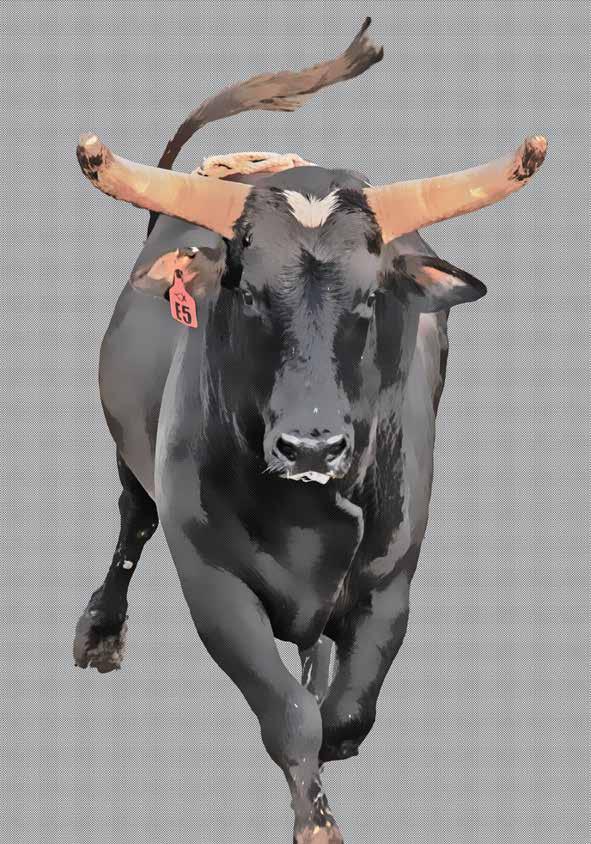
JOIN US THIS SUMM ER FOR BIG SKY’S BIGGEST WEEK, JULY 14 - 22 RODEO | STREET DANCE | MUTTON BUSTIN’ | BINGO | PBR GOLF TOURNAMENT T I C K E T S O N S A L E MARCH 1 BIGSKYPBR.COM july 20-22 2023
Building and supporting communities
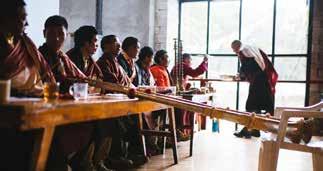
SCANTOLEARN M OREANDDONAT E
Donating to the Khumbu Climbing Center supports the local community and trains sherpas in first aid, rescue, and modern mountaineering.

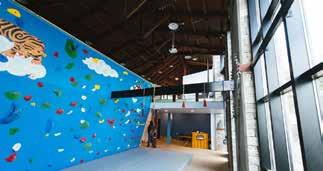
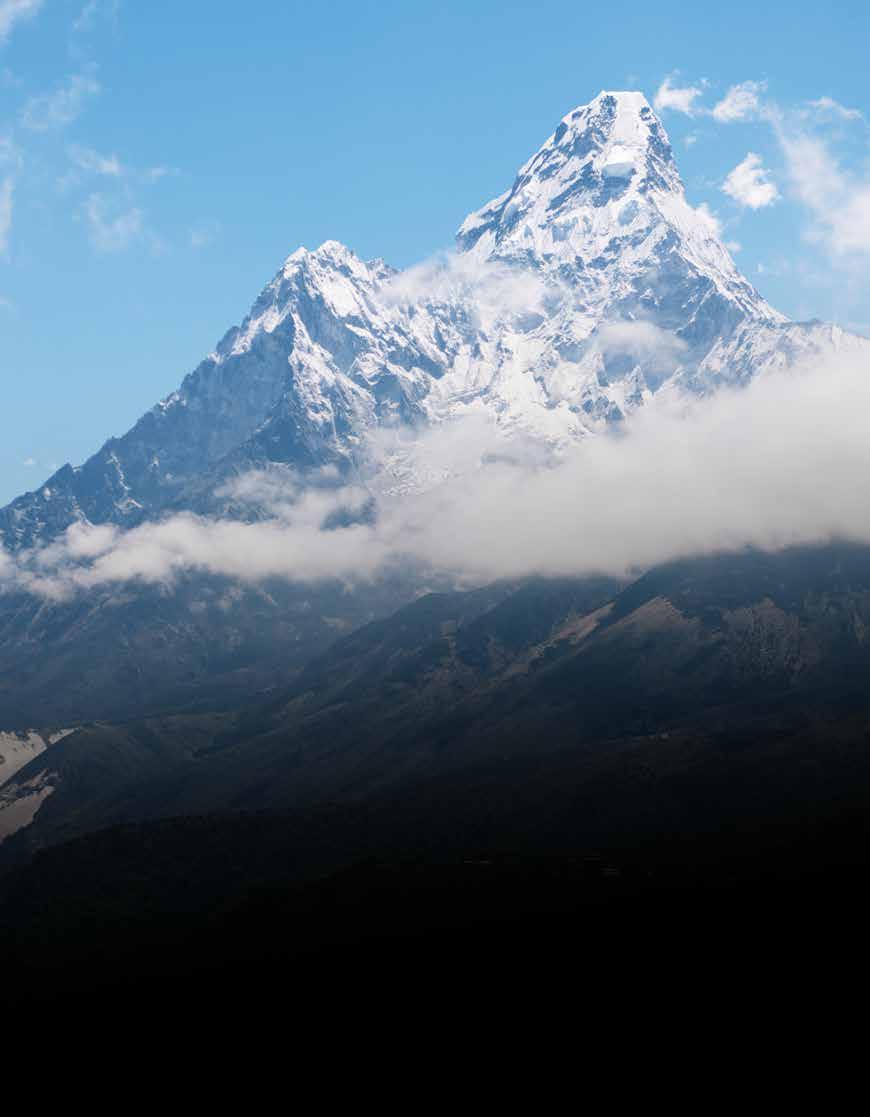
“We are proud of our involvement in building the KCC in the mountains of Nepal, below Mount Everest. It was a monumental, multi year effort by many people to bring the school to fruition. Its remote location, 100 miles from the nearest road, in the village of Phortse at 12,500’ in elevation, made for some unique challenges. Its quite the school!”
- Chris Lohss FOUNDER AND CEO OF LOHSS CONSTRUCTION
we care about.


HEYBEAR.COM IS YOUR RESOURCE • Access Bear Education Safety Tips • Give Back to Support Bear Habitat • Shop Apparel & Gear

406-599-1990 CortneyAndersen.com

26 MOUNTAIN / MTOUTLAW.COM
MTOUTLAW.COM
Photos Courtesy of Travis Anderson
ith more than 500 films that spanned a 50-year career, Miller influenced generations to follow their dreams and live their best life on the mountain. But Miller leaves behind another legacy, one that arguably transcends the impact of any film. In the resort town of Big Sky, Montana, Miller was a community member. He was our neighbor.
Miller and his wife, Laurie, spent half of each year in Big Sky, and Miller served as the director of skiing for the Yellowstone Club. His name cements his local legacy at the Yellowstone Club’s Warren Miller Lodge, as well as at the community’s renowned Warren Miller Performing Arts Center.
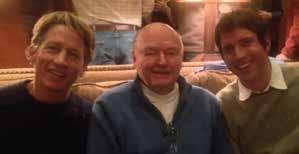
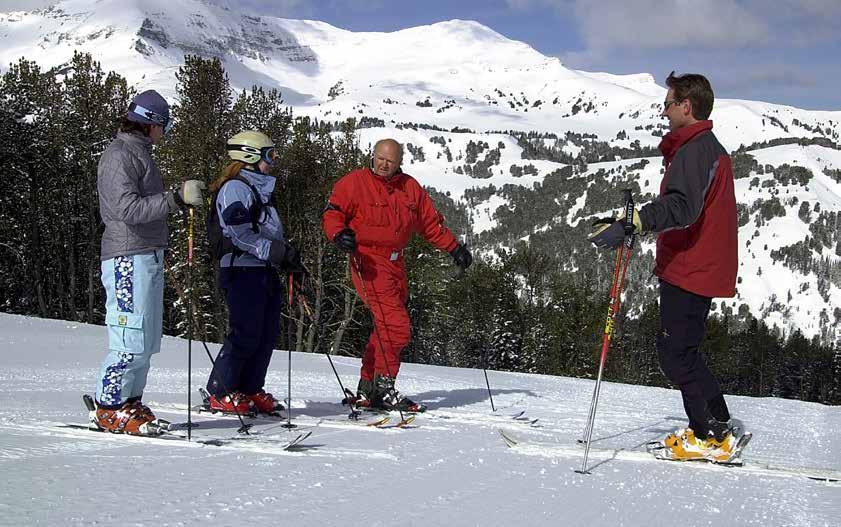
More than this, many in the community recounted Miller as a friend. This gallery was compiled in honor of our neighbor, Warren Miller, so that we might so be inspired to contribute our best selves to our communities by living our own lives to the fullest. For we ought not forget his famously recounted wisdom:
 Left/Cover: All smiles for Warren Miller while filming in Montana.
Top: Miller with extreme skiing pioneer Dan Egan. Middle: Pro skier Scot Schmidt, Miller and GoPro founder Nick Woodman at the Yellowstone Club. PHOTO COURTESY OF SCOT SCHMIDT
Left/Cover: All smiles for Warren Miller while filming in Montana.
Top: Miller with extreme skiing pioneer Dan Egan. Middle: Pro skier Scot Schmidt, Miller and GoPro founder Nick Woodman at the Yellowstone Club. PHOTO COURTESY OF SCOT SCHMIDT
MOUNTAIN MTOUTLAW.COM
Bottom: Miller directing, filming and skiing with friends and colleagues at the Yellowstone Club,
 Above: Photographer Travis Anderson poses with Miller in Miller’s Big Sky home.
Above: Photographer Travis Anderson poses with Miller in Miller’s Big Sky home.
28 MOUNTAIN MTOUTLAW.COM
Right: Miller getting some Montana powder turns.
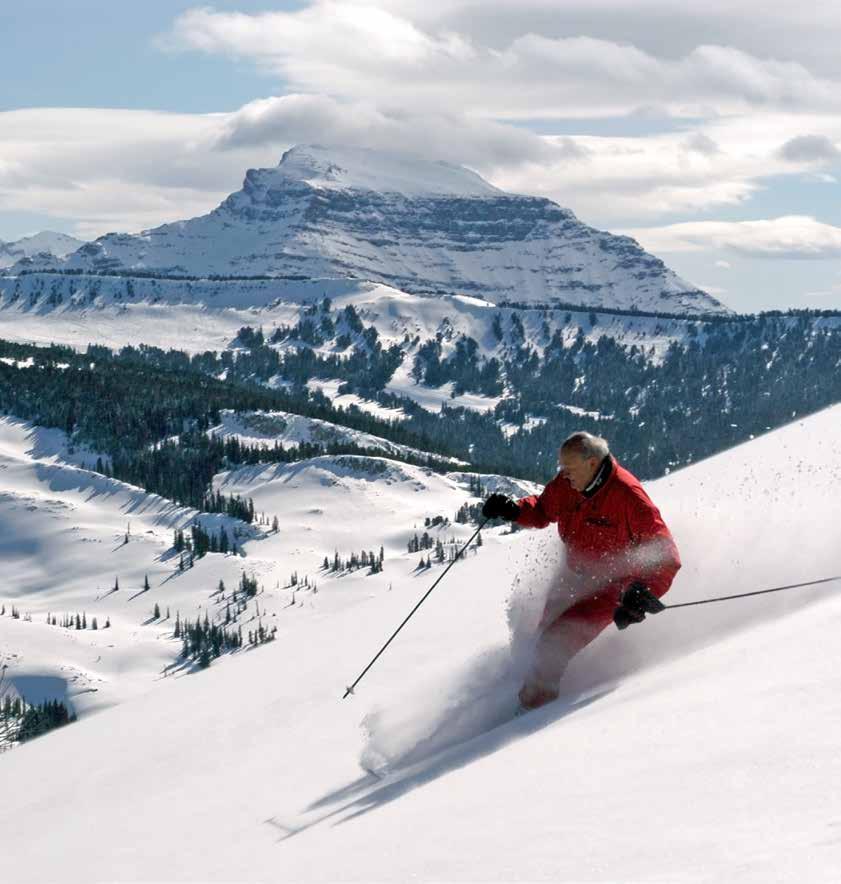
29 MOUNTAIN MTOUTLAW.COM
Top Right: Miller films with Gary Nate in Big Sky on a bluebird day with Sphinx Mountain in the background.
Left Bottom: Miller and Scot Schmidt enjoying some good conversation in between turns at the Yellowstone Club.
Bottom Right: Filming at the Yellowstone Club, with Outlaw Partners' Eric Ladd.
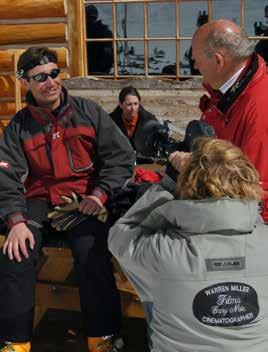
Opposite: With more than 500 films that spanned a 50-year career, Miller influenced generations to follow their dreams and live their best life on the mountain.

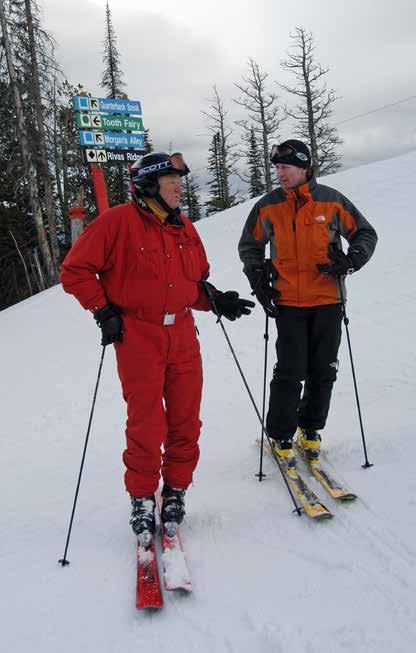
30 MOUNTAIN MTOUTLAW.COM

31 MOUNTAIN MTOUTLAW.COM
Top: Filming, skiing and corduroy snow with Miller and friends in Big Sky, Montana.

Right: The Warren Miller Performing Arts Center helps Miller’s legacy and artistic values live on in perpetuity within the Big Sky community. OUTLAW PARTNERS PHOTO
Opposite Page: Miller shares insights and stories at the Warren Miller Performing Arts Center. PHOTO BY KENE SPERRY, COURTESY OF WARREN MILLER PERFORMING ARTS CENTER
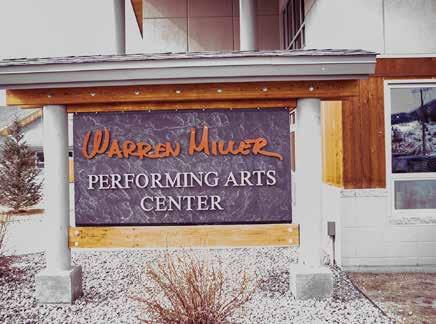
32 MOUNTAIN MTOUTLAW.COM

33 MOUNTAIN MTOUTLAW.COM
A Specialist Approach to Risk
We See Risk Through Your Lens
When you’re facing the most pressing business challenges, maximizing your success starts with the right partner.
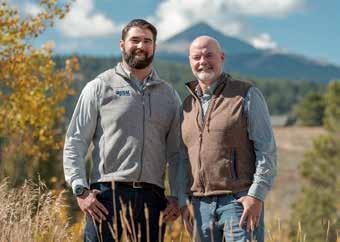
As a top national specialty insurance broker, with tailored services and experts in over 30 practices, we see risk through your lens. By understanding your industry, business goals and market trends, we deliver personalized, comprehensive risk advice to prepare for today and plan for tomorrow.
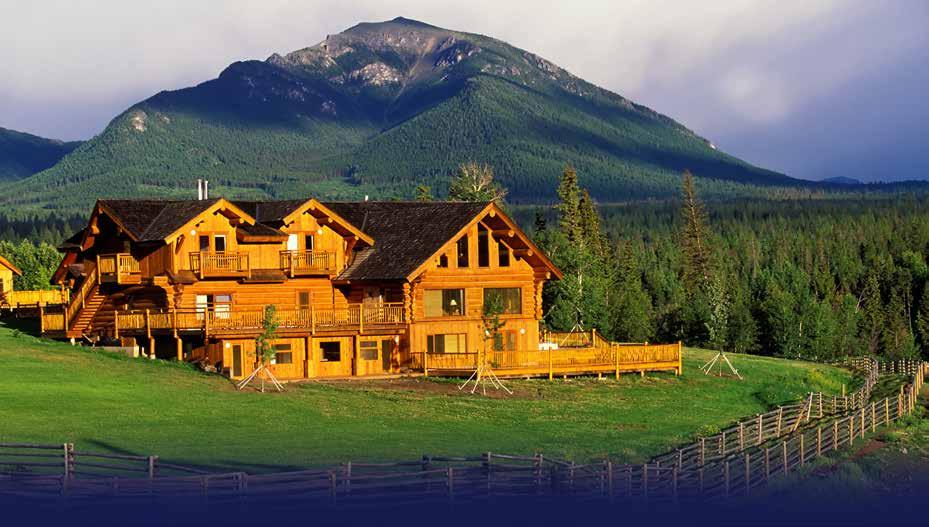
Face the future with confidence.
Yale Rosen | Risk Advisor yrosen@risk-strategies.com
Tom Beattie | Managing Partner tbeattie@ibeattie.com
R is k Strategies . A S p ecia list A pp roa ch to R is k . Prope r t y & C asualt y | Employe e B e nefit s | Private Clie nt Se r vices
risk-strategies.com/about
YOU DREAM. WE BUILD.
Inspired by the dynamic landscape of the Rocky Mountain West, we bring the visions of owners, architects and craftsmen together to create exceptional handcrafted custom homes. Teton Heritage Builders integrates the quintessential elements of the regional palette –stone, timber, log, glass and steel – to craft high-quality homes that reflect the character of their distinctive surroundings. At the intersection of rugged wilderness, rustic aesthetics and timeless elegance, building unique homes with a deep connection to place is our passion.

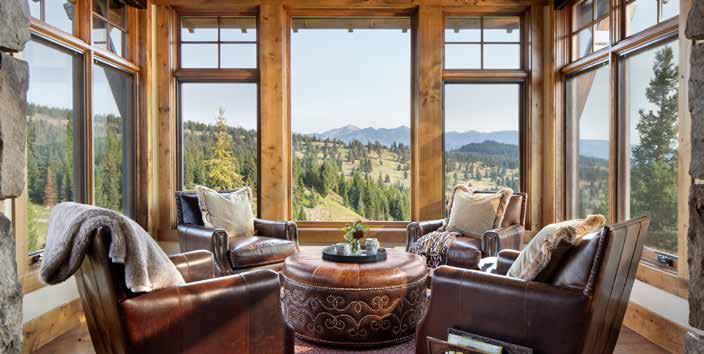
BIG SKY | JACKSON
Visit tetonheritagebuilders.com to start building your dream.

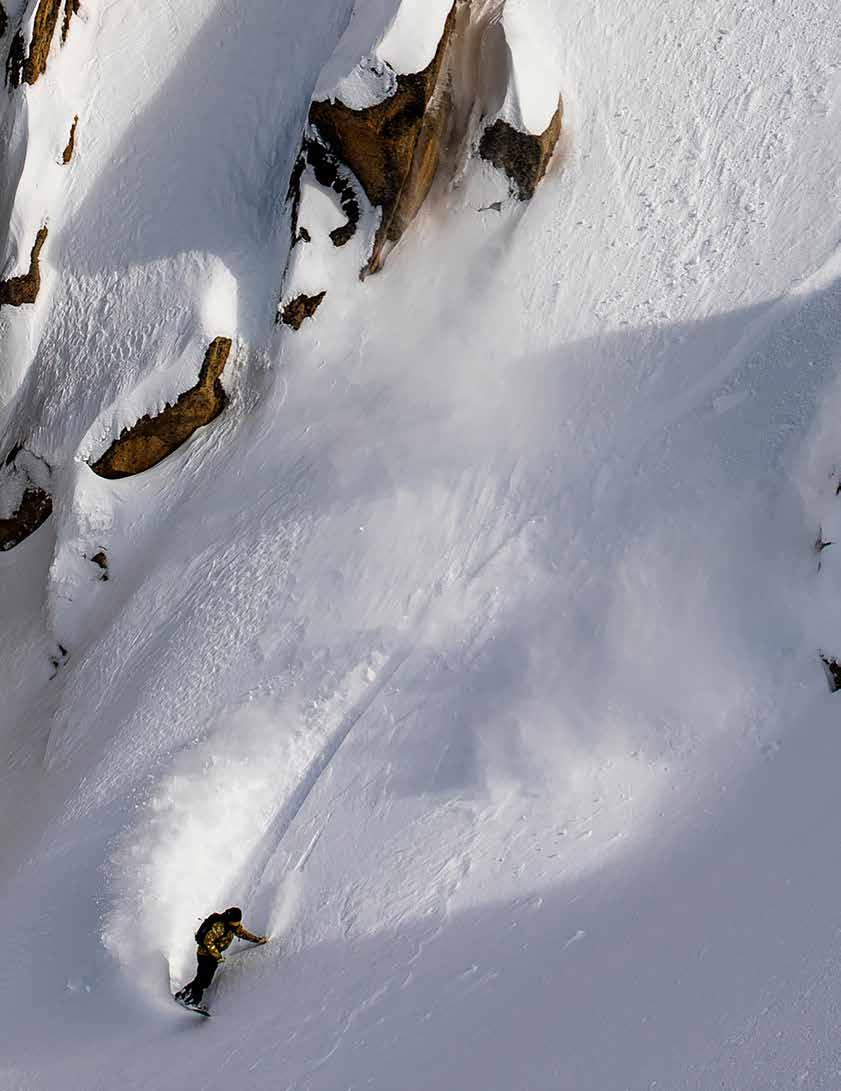
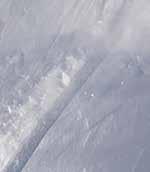
36 MOUNTAIN MTOUTLAW.COM
Former Olympian Kaitlyn Farrington carves a line in Argentina. PHOTO BY BEN GIRARDI
BY BELLA BUTLER
aitlyn Farrington picks up a rock and flings it into the Whitefish River. A smile cracks on her face as the stone skips, wrinkling the reflection of golden cottonwoods and willows on the water. She’s on a walk in Riverside Park in Whitefish, Montana, her home for five years now. She stands at the very edge of the river, where several feet of dry beach reveal the high-water mark from a dramatic early-season flood.
“It’s crazy how low the water is,” she observes, picking up another rock.
Dressed in Vans sneakers and a black T-shirt, skipping rocks on the beach, it’s easy to forget that Farrington became a household name across the U.S. when she unexpectedly won gold in the 2014 Sochi Olympics in the women’s halfpipe snowboarding event.
In many ways, her life now is worlds away from what it looked like then. Farrington lives a few blocks from downtown Whitefish in a little yellow house she owns with her partner, professional skier Chris Logan. She has a garden where she grows tomatoes and squash, and a garage where she sometimes makes candles—one of her newer hobbies. Sometimes she and a few of her girlfriends will ride their motor scooters to the nearby state park (they call themselves the meepmeep crew) to swim in the lake.
Not long after her success in Sochi, Farrington suffered an injury that revealed a lifelong spinal condition and ended her competing career. She still snowboards, guiding even in Argentina during part of the Montana summer, but she’s what she and her doctors call a “grounded snowboarder,” meaning the athlete that made a name for herself throwing recordbreaking flips and spins can’t leave the ground on her board.
Even in this new chapter, scraps of Farrington’s accoladed history stick to the page: the ample stock of snowboards from her longtime sponsor, Gnu, stored in the garage rafters; a collection of international pins traded with other athletes during the Sochi Olympics resting on a side table in her house; her gold medal, tucked between piles of clothes in her bedroom closet.
With these vestiges as a reminder, this athlete begins the next part of her story—a fight for the planet.
Farrington is one of more than 200 professional athletes that make up the athlete alliance for Protect Our Winters, a nonprofit founded in 2007 by pro snowboarder Jeremy Jones with a mission of mobilizing the outdoor community to act against climate change.
When discussing climate change herself, Farrington speaks in anecdotes.
“I always go back to my halfpipe days; when I feel like I first saw it was the [2010] Vancouver Olympics,” she said. “They put hay bales to make a halfpipe. And the snow was really bad in Vancouver that year because it was so warm, and they had tubing coming down through the center of the pipe to drain the water because the snow was melting so fast.” Fast-forward two years to a test event in Sochi, Russia, and Farrington remembers most of the events being canceled when there wasn’t enough snow.
These first-hand accounts of climate change are part of what make the athlete alliance an effective tool in POW’s work, according to Jones. When the mountains are the stage for your career, you get an intimate look at how quickly winters are changing.
“Real, tangible stories I think are important to bring vibrance to the issue,” Jones said.
In recent years, POW’s focus has been heavily anchored in politics. In 2022, for example, the organization ran several campaigns to inspire voter turnout, including a touring film festival called Stoke the Vote, and a Run to Vote campaign in partnership with exercise tracking app Strava that drove more than 25,000 people to run or cycle to the polls.
POW has also established somewhat of a lobbyist role for itself in Washington D.C. Jones has testified before Congress numerous times on behalf of legislation dedicated to climate action, and the nonprofit frequently sends representatives from its athlete alliance to Capitol Hill to advocate on a more personal level with senators and representatives. Farrington has traveled to D.C. on two such trips with POW.
Most recently, she joined a cohort of Olympians from POW’s crew on a lobbying mission to advocate for the Inflation Reduction Act, a more-than $700 billion federal investment that makes combating climate change a top line item with $369 billion designated for clean energy, clean transportation and green technology. President Joe Biden signed the bill into law on Aug. 16, 2022.
Farrington said these trips to D.C. are an opportunity to connect with politicians through storytelling. As a mountain athlete, she’s borne witness to climate change; this is her chance to testify.
Although her name is an asset in getting politicians’ attention, Farrington has found that she’s made the biggest strides in some of these meetings by identifying with them as everyday people. POW doesn’t work in an echo chamber, Far-
>> 37 MOUNTAIN MTOUTLAW.COM
rington said. While many of the people with whom she’s met were on the fence, or even averse to the legislation she was advocating for, the hope is that they find common ground over their shared love for the outdoors. That love is a powerful catalyst for conversation.
Farrington lives in Montana now and Utah before that, but she grew up on a cattle ranch south of Sun Valley, Idaho, in a little town called Bellevue— or as Farrington calls it, “the boonies.” Despite their remoteness, skiing was a huge part of the Farrington family—she describes her parents as “ski bums,” who got her and her sister into the sport at a young age.
“They both worked on the ski hill for the winters just so we could get family passes and be able to afford to be skiing every weekend,” she said.
Farrington switched to snowboarding when she was around 12 and started
competing at 14.
“To pay for my snowboarding, we'd load a cow up on, I think, Wednesdays and take it to the cattle sale, and that cow’s profit was my way of traveling to these different contests [on the weekends] and kind of funding my snowboarding,” she said.
Even though Sun Valley didn’t have a halfpipe or terrain park, Farrington started competing in slope style and halfpipe, taking all the practice she could get at other venues. And she got good.
The U.S. Olympic team picked Farrington up as a rookie when she was 17.
“That was kind of my first moment of realizing that I could make this a career,” Farrington said. And she did.
Farrington moved to Salt Lake City in 2008 and followed winter elsewhere throughout the year to train. After coming up short of qualifying for the 2010 Olympics in Vancouver, Farrington qualified for the 2014 Olympics in Sochi. She wasn’t expected to win, but the young rookie from rural Idaho was on fire.
“We always say as an athlete you have your on and off days, and that day happened to be one of my best days and
board. And they did—Farrington received a score of 91.75, beating the former women’s halfpipe gold medalist by a quarter of a point.
When she pulls her medal out now from the shelf in her closet, it’s slightly tarnished, but its weight still carries the grandeur of that moment for Farrington, and for the country she was representing. It’s a stature that she’s still reminded of when she dons the medal on Capitol Hill and tells the story of that winning run.
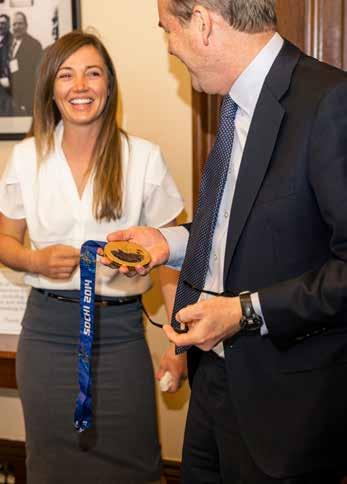
“I like to think of my Olympic time as my past life,” she said. “And so it's kind of funny when I have to talk about it again, because it's not something I talk about that often. And so going to D.C., it's like going back in time and reliving that surreal day, and to be able to share my story and then talk about something bigger that I'm passionate about now kind of makes it's another surreal feeling.”
While her rural Idaho upbringing and love for fishing helps level her with politicians, it’s her athletic clout that earns her a seat at the table. Jones said next to their stories, the athlete’s platforms are the power of the athlete alliance.
I was on that day,” she said. Farrington cruised through her winning run with apparent ease and the confidence of a 24-year-old who knew she might’ve just made history.
“I will be shocked if the judges don’t put her into the lead by virtue of that nonstop insanity,” one NBC announcer said as Farrington clicked out of her
“Those gold medals just unlock the doors to Congress like nothing else does,” he said. “And we’ve seen it time and again because she's an American hero and our lawmakers totally react to that. And nobody's more powerful than these people that represent our country on the global stage and succeed. And so yes, they unlock doors for us that we otherwise couldn't know.”
Farrington’s success has also afforded her a platform with perhaps more weight than even a gold medal: a robust social media audience. Farrington has nearly 20,000 followers on Twitter and another nearly 42,000 followers on Instagram. POW launched before most
Farrington meets with Sen. Michael Bennett on a trip to Washington, D.C. to advocate for climate legislation in April 2022.
PHOTO BY MICHELI OLIVER
/ PROTECT OUR WINTERS
38 MOUNTAIN MTOUTLAW.COM
“Those gold medals just unlock the doors to Congress like nothing else. And we’ve seen it time and again because [Farrington is] an American hero and our lawmakers really react to that.” - Jeremy Jones
social media even existed, Jones said, but POW’s athletes’ accounts have allowed the organization to begin quantifying its impact. With so many big names on their alliance—some with hundreds of thousands of followers—their reach is extensive. Farrington said she’s proud to be a part of that.

Though her Olympic days are behind her, Farrington has continued to stoke her love affair with snowboarding, and by proxy, with winter. For 10 years, from age 17 until she moved to Montana, she chased snow year-round, living in a perpetual season of white.
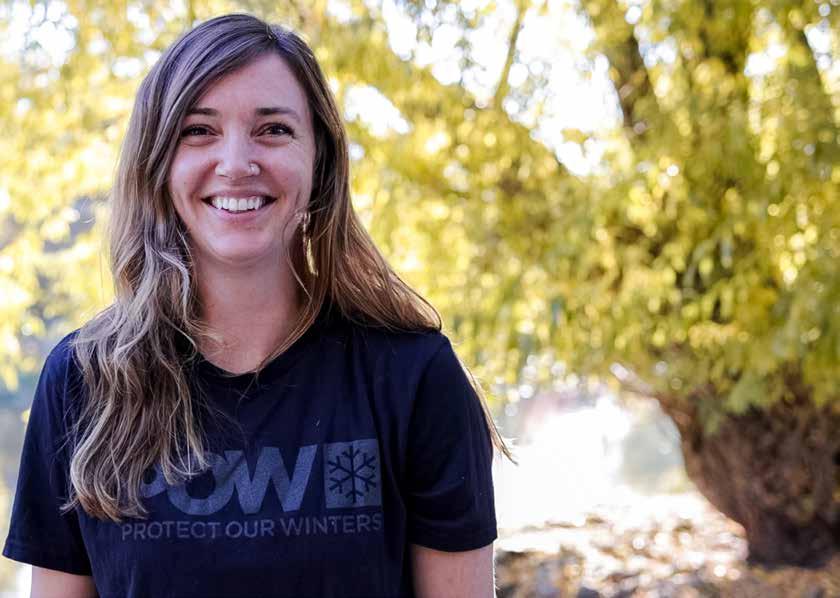
“I don't think I could not have winter as … a part of my life,” she said. “… I love snowboarding, I like powder, and so it just comes with the territory.”
Back on the banks of the Whitefish, she skips another rock and turns on her heels to leave the park. Dry leaves crunch beneath her feet, a hint that winter is coming. The season she
tethered so much of her life to plays a different role for her now; no longer the foundation for her career, but perhaps something even bigger. The POW logo on her black t-shirt is a reminder that while no longer riding for the U.S., she’s playing for a different team now: that she’s devoting her story and her honors to protecting our winters.
Bella Butler is the managing editor for Mountain Outlaw.
Top: Farrington won gold at the 2014 Sochi Olympics after receiving a score of 91.75, beating the former women’s halfpipe gold medalist by a quarter of a point.
PHOTO BY CHRIS WELLHAUSEN
Left: The retired competitive border-turned-climate advocate smiles for a portrait in her home of Whitefish, Montana. PHOTO BY HAZEL CRAMER
39 MOUNTAIN MTOUTLAW.COM
“I don’t think I could not have winter as … a part of my life … I love snowboarding, I like powder, and so it just comes with the territory.” - Kaitlyn Farrington





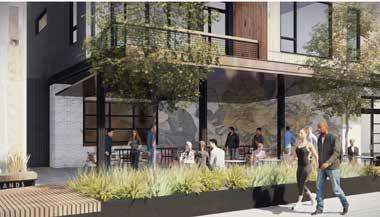
to
12 luxury residences located in Bozeman’s vibrant and historic Northeast neighborhood, only four blocks from downtown and 10 minutes from BZN Yellowstone International Airport.
BESPOKE LIVING IN DOWNTOWN BOZEMAN Scanhere
learnmore!
MEDICINE GROWING the
LPC focuses on sustainable and organic partnerships
By Tucker Harris
In late October, Lone Peak Cannabis Co. Owner Charlie Gaillard walks through rows of healthy cannabis plants at Collective Elevation’s grow facility outside of Bozeman. He stops to gaze at the forming flower buds inside the large, sun-filled greenhouse.

Adam Arnold, co-owner of Collective Elevation, leads the way, explaining the process of overseeing their state-of-the-art facility and living soil growing processes over the roar of fans and the buzz of LED light fixtures, all hard at work perfectly maintaining the temperature, humidity and sunlight needed for his flowers to grow.
Collective Elevation is Montana’s largest living soil cannabis grow facility and uses top-tier technology alongside classic and natural growing methods. LPC, Big Sky’s local cannabis provider, partners with brands like Collective Elective because they believe in their mission, strategy and methods.
“The effects of cannabis grown in a sustainable, organic way is two-fold: better for the environment and better for the consumer, period,” Gaillard says. “That’s our goal: supply the consumer with the best products available and the rest will take care of itself.”
LPC got its start back in 2010 as a medicinal cannabis company.
“I really looked at it as an adventure of coming to Montana,
Sponsored content
Owner of Lone Peak Cannabis Co. Charlie Gaillard stands in the rows of cannabis plants on a tour of Collective Elevation’s grow facility.
PHOTO BY TUCKER HARRIS
42 MOUNTAIN MTOUTLAW.COM
in addition to an exciting new venture of doing something I really love to do, which is grow marijuana,” he says. “It was an opportunity I could not pass up.”
Starting as a medical-only company is what prompted LPC to get into living soil and try to grow the plant in an all-natural environment. For Gaillard, sustainable growing practices are key.
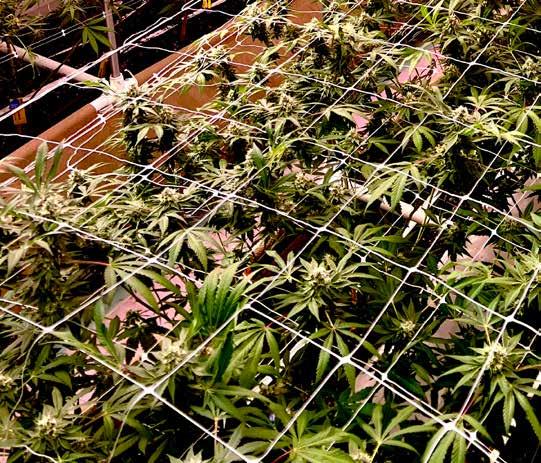
Using living soil and sunlight means developing a complete bio-integration. Collective Elevation cultivates massive colonies of microbes, worms and beneficial insects along with cover crops like native clover, marigolds, onions and other herbs.
“The alternative, these bottle nutes that people use, it produces a fine product, but it's not as good as plants grown in living soil,” he says. “The best medicine comes from the plant producing its compounds through a natural selective method.”
Almost 14 years later, LPC, under the leadership of Gaillard, has expanded from the small ski town of Big Sky to three additional locations in Bozeman, Ennis and West Yellowstone.
Now, LPC’s goal is to establish itself as a top cannabis company in the industry by carrying vendors whose products focus on organic and sustainable growing practices. Gaillard wants his consumers to have the absolute best selection of products all in one place, he says.
“We're still going to produce our brand of marijuana, but we're very much interested in carrying folks like Collective Elevation.” Gaillard says. “We're constantly searching the marketplace to find companies that are focused on living soil and focused on growing the best plant you can find.”
Today LPC has strong relationships with the top growers and suppliers of edibles in the state, carrying vendor products from: MT Kush, Collective Elevation, Sacred Sun, In the Trees, Silverleaf, Triggers Relief, Cold Smoke Organics, Groove Solventless, High Road Edibles, WANA, The Clear, Sinful Beverages, Huckleberry Farms and Dancing Goat Gardens.
Gaillard looks to continue to develop relationships with these vendors as well as personally seek out additional partners who are focused on the environment and producing the best possible product. He believes this selective partnership choice is one of the main factors that sets LPC apart from competition.
"It’s our commitment to provide the consumer with a truly all-natural,
organic product, from the flower grown in living soil to the edibles made with a full-spectrum oil,” he says. “In my opinion, the effect the consumer gets is superior, more complex and an overall better feeling than any other products on the market.”
Gaillard’s adventure to Montana back in 2010 has enabled him to continue cultivating his passion in the cannabis industry. He respects the work others in the industry are doing to create top-of-the line products that he can share with his customers.
“LPC is now a company that has established itself as one of the go-to companies in the cannabis industry,” he says. “We supply the best products from the top producers of organic products in the state.”
Browse and order online LPC’s selection of organic, sustainable and top-of-the line products at lonepeakcannabiscompany.com/.
Tucker Harris is the marketing and events coordinator at Outlaw Partners and assistant editor for Mountain Outlaw magazine.
NACS T O VISITTHE WEBSITE
43 MOUNTAIN MTOUTLAW.COM
LPC partners with Collective Elevation because of their sustainable, organic practices. Collective Elevation is the largest living soil cannabis grow facility in the state of Montana. PHOTO BY TUCKER HARRIS
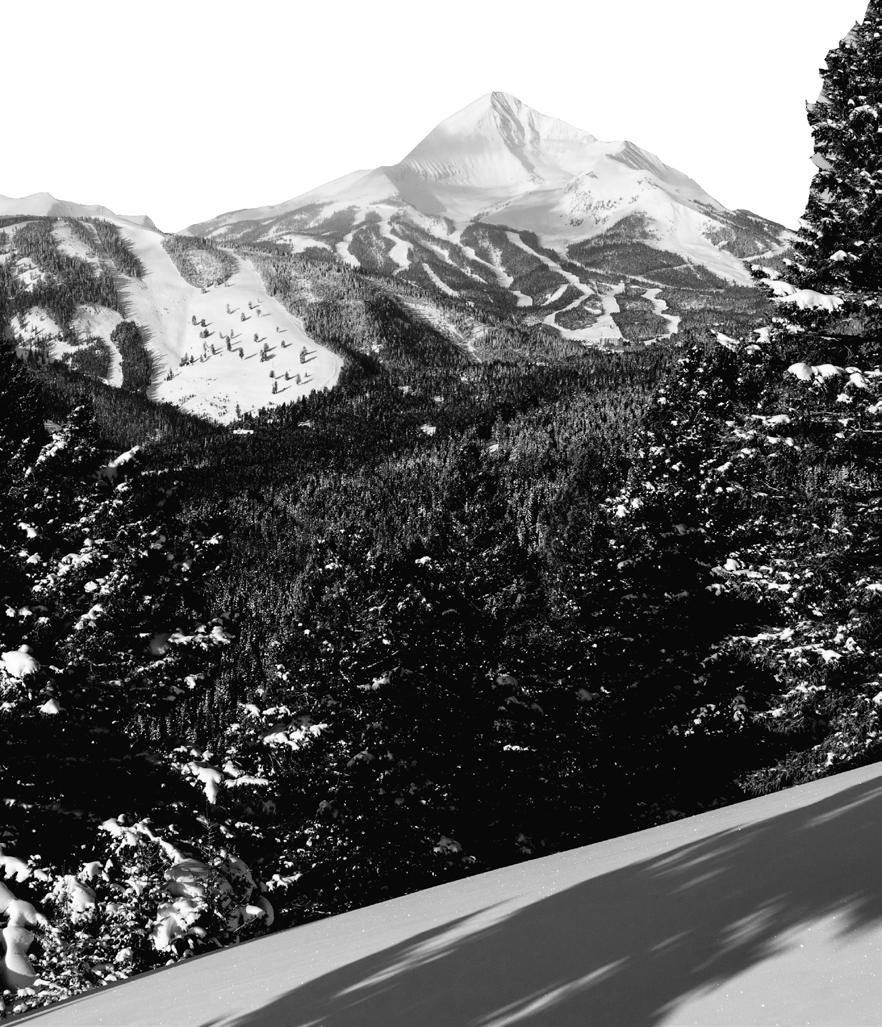




Order Online Pick Up At Your Favorite Location: Big Sky | Bozeman | West Yellowstone | Ennis Delivery Now Available In Big Sky LONEPEAKCANNABISCOMPANY.COM M o n t a n a ’ s f i n e s t p r o d u c t s u n d e r o n e r
f Order o n l i ne here!
o o
hecking on his bison herd as he does most days in one way or another, Matt Skoglund crunches through frozen snow and mud from this season's first winter storm. The sun will soften the wet ground into a slick clay in a few short hours, making it difficult to maneuver on foot or by truck. The aroma of sagebrush hangs in the air, and the bison are fully immersed in grazing fresh pasture, unphased by the layer of frost sheeting their backs, nor by Matt's presence. They acknowledge him with a snort and a disinterested glance before lowering their heads. Something spooks the herd in the distance, and in an instant, the stillness is shattered; the earth shakes as the hooves of one-ton masses of muscle trample the ground.
On the western edge of the Shields Valley, cradled between the Crazy Mountains and the Bridger Range, these bison roam 1,270 acres of biodiverse grasses, forbs, and sagebrush—a combination of the land owned by the Skoglunds, and pastures leased from their neighbors.
They breed on their own, calve on their own, and need no outside protection from predators. Pre-dating the Ice Age, they are built to endure Montana's often inclement and volatile climate.


First-generation ranchers with no previous experience in agriculture, Matt and Sarah Skoglund started North Bridger Bison in 2018, raising, field-harvesting and selling bison meat directly to consumers. Matt's coarse, weathered beard is a constant reminder that he traded a suit, tie and clean-shaven face for a life of unrelenting weather, a steep learning curve and occasionally getting too close for comfort to one of the greatest icons of the West. He wouldn't take any of it back, nor will he shave his beard. All the big risks and hard work have led to this: 150 head of bison and 791 acres of healthy, biodiverse, prime wildlife habitat—protected from development in perpetuity.

The couple moved to Montana from Chicago in 2008. In their previous lives, Matt was a lawyer, spend-

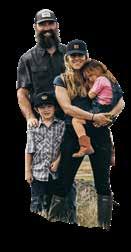
>> 45 MOUNTAIN MTOUTLAW.COM
North Bridger Bison owners Matt and Sarah Skoglund pose with their children, Otto and Greta. North Bridger Bison is a bison ranch located in Wilsall, Montana. PHOTO BY CHRIS DOUGLAS
 Matt, a former lawyer from Chicago, first got attached to the idea of ranching bison while focusing on Yellowstone’s bison as an employee for the Natural Resources Defense Council.
Matt, a former lawyer from Chicago, first got attached to the idea of ranching bison while focusing on Yellowstone’s bison as an employee for the Natural Resources Defense Council.
46 MOUNTAIN MTOUTLAW.COM
PHOTO BY MICHAEL RUEBUSCH
ing most of his days seated behind a desk, while Sarah worked as an interior designer. They left Chicago the month after they were married, seeking adventure, a connection to place and a community that aligned with those values. They found it in Bozeman. Matt spent a decade working in environmental policy for the Natural Resources Defense Council, while Sarah worked at the Cancer Support Center and earned a graduate degree in social work. They started a family and rooted themselves in the Gallatin County community.
"Having lived here for a long time, and through my environmental conservation work with NRDC and my outdoor adventures, I fell madly in love with this region, the landscape and the people," Matt said. "I had this entrepreneurial itch; I wanted a change and a challenge, and I knew very clearly that I wanted it to be deeply rooted in the greater Bozeman community."
At some point, Matt began daydreaming about starting a bison ranch. He had been focused on Yellowstone bison policy at NRDC but wanted to do something more tangible and food-based on the land. He then read "Buffalo for the Broken Heart," by Dan O'Brien in the fall of 2017, a story about bison ranching and pioneering the modernday method of field harvesting, and it's then that Matt got serious. After reading O'Brien's book, he attended a multi-day holistic management workshop. When he returned home, he started looking for land to purchase within a 50-mile radius of Bozeman with no luck. At the same time, he went into what he calls "sponge mode," researching and learning everything he could about what he started calling his bison ranch pipe dream, a destiny he feared was better fated for someone with a ranching background.
In late winter of 2018, he fell upon a few parcels of land off Montana Highway 86 while deep down a Google-search rabbit hole of properties for sale. It was the first and only piece of land the Skoglunds looked at in person; it was perfect for what they wanted to do. "Until then, the bison ranch had felt about as possible as flying a plane to Pluto," Matt said. The property brought his dream into focus.
"When we first came out to this piece of land, I just felt like we belonged here," Sarah said. "The land became my anchor point—it just felt like everything started aligning. We both are very conscious that life is short and that perspective has been a major North Star in this process. Matt had been
talking endlessly about his passion for tangible land conservation, of doing something good for the planet. Eventually, the risk of not doing this became greater than the risk of trying and failing."
The bison arrived by truck from Choteau, Montana, in late January 2019. So much had gone into preparing for that day: research, meetings, mentoring, ranch tours, loan approvals, not to mention a great deal of financial and emotional risk for the Skoglund family.
"That was a surreal day," Sarah said. "It was breathtaking to see the animals come off the truck, run onto this land that was finally ours and settle immediately—as though they belonged here. I distinctly remember thinking at that moment that everything would change—that we were doing something so wild and important and that it was all finally happening."
That night, Matt, a self-proclaimed romantic, slept huddled in a sleeping bag on the ground on the other side of the fence from the herd. "I woke up that morning, made coffee on a camping stove, and stood watching the bison in the pasture," he said. "There was an overwhelming feeling of calm and contentment. I thought, 'they're here, and this is real.'"
Matt runs the ranch using regenerative agriculture principles. The philosophy behind this type of management is that the animals are part of a more extensive system that benefits the land and leaves it healthier than before. The bison are raised in sync with nature, with a focus on soil health, land health and increased biodiversity. The Skoglunds also manage their bison with as little human intervention and stressors as possible.
"There is certainly a lot of green-washing and misleading messaging around the term regenerative these days," Matt said. "There are also plenty of people, like our neighbors, who
>> 47 MOUNTAIN MTOUTLAW.COM
have been ranching for a long time and doing it regeneratively, but they never put a word to it. And—I'm not the right person to speak on it—but the idea that regenerative agriculture is new is untrue—indigenous cultures have been producing food and doing it regeneratively for millennia."
He says that while the conversation around food, carbon and climate is incredibly important, there's not enough focus on biodiversity. He believes the science is clear that raising animals can be the most effective way to grow food in balance with nature. He also thinks cattle have been unfairly vilified and that pushing plant-based eating as the healthy choice for both people and the planet is misguided. Matt likes to quote a well-used term in regenerative ranching: "It's not the cow; it's the how."
"Many of these plant-based foods are highly processed and come from ecologically destructive, industrial, monoculture crop farms," he said. "That land is losing topsoil every year, using all sorts of pesticides and other chemicals, poisoning rivers and destroying wildlife habitat. Contrast that with a regenerative approach to ranching that builds topsoil, sucks carbon out of the atmosphere and provides amazing wildlife habitat and healthy meat. It all comes back to management practices. You tell me which system you think is better for your body and for the planet."
This philosophy is why the mission behind North Bridger Bison continues to be simple:
to raise bison as well and as in sync with nature as possible and to provide customers with amazing meat.

Matt puts a lot of thought into each order that he fills, including a tasteful before and after photograph of the herd and the harvested bison to help make the process of field-to-food more transparent. Customers choose between purchasing a whole bison, half or quarter, and between a few different cut options.
Matt field harvests each bison himself. That means driving out into the herd, shooting a perfect headshot from 15-20 yards, and loading the animal onto his truck. He then either field dresses the bison himself and takes it to Amsterdam Meat Shop in Manhattan, or he works with two of their team members on the ranch using his mobile processing truck. The job is challenging, labor-intensive and filled with emotion and a deep sense of responsibility.
His first field harvest was in the spring of 2019. It was one of those days when it's sunny and then rainy, snowy and windy—a classic Montana day. "I remember being really nervous because I so desperately wanted, and needed, everything to go well," Matt said.
Leading up to the task, he wondered if there would be any symbolic action connecting him with the harvest. He later realized that the ritual he sought was ultimately the intense focus he brings to each field harvest.
"I take it very seriously, becoming hyperfocused through the adrenaline and nerves;
>> 48 MOUNTAIN MTOUTLAW.COM
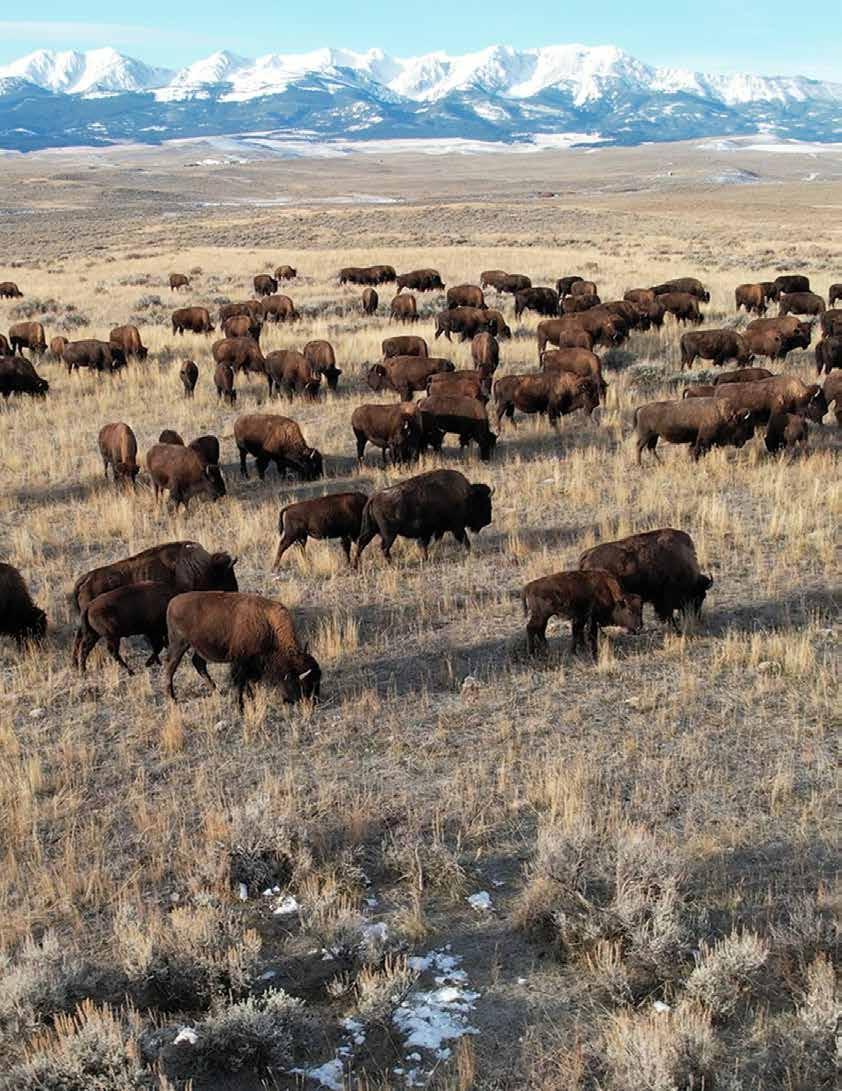 The Skoglund’s herd consists of approximately 150 head of bison.
The Skoglund’s herd consists of approximately 150 head of bison.
49
PHOTO BY MICHAEL RUEBUSCH
MOUNTAIN MTOUTLAW.COM
I lose myself in the process of preparing, driving into the pasture, and executing the perfect shot," he said. Because of this, Matt was very protective of his field harvest days for a long time. He still prefers to field harvest alone but on occasion brings others out with him. "I'm passionate about what we do, and I love showing people the whole process—but I still prefer it when I'm by myself. It's never lost on me that I'm going to kill a bison. If I'm ever driving out to shoot a bison and I feel nothing, there's a problem."
Matt makes a point of clarifying that field harvesting is not hunting. "I love to hunt, and if I'm going elk hunting, I very rarely get one. More often than not, I'm just going out and having a great day in the mountains," he said. "Field harvesting is completely different. When you open that gate, you know you're going to kill something, and there's a gravity to that."
As an avid user and supporter of public land, Matt now better understands the role private land can play in conserving the wild places he loves. "There's such a strong push for protecting public lands, and rightfully so," he said. "Since starting the ranch and becoming a rancher, I've also begun to appreciate now more than ever the conservation benefits and responsibility that come with ranching and private land ownership more than I ever had. I look at our ranch and neighbors' ranches and see this open space,
amazing biodiversity, incredible wildlife habitat, and pollinators everywhere. And, the cherry on top is that it also provides delicious, healthy food."
This past April, they finalized something they'd been dreaming about since starting North Bridger Bison when they signed a conservation easement with the Gallatin Valley Land Trust. The easement will forever keep their 791 acres from being subdivided or developed.
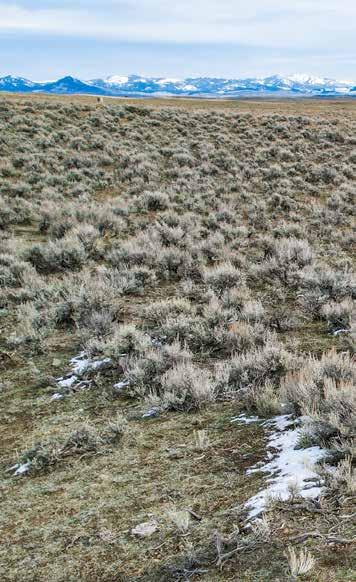
Matt wrote his “note," similar to a thesis, on conservation easements during law school and fell in love with their conservation benefits. Still, the process for enrolling property in an easement and working out the details is a long one. The North Bridger Bison easement, in particular, took about three and a half years, so when Matt and Sarah finally closed on the easement they were thrilled. "When I returned to the ranch later that day, it just felt different looking out onto the land and knowing that it will be protected forever; it just felt different," Matt said.
That night they sat down at the dinner table with their two children, Otto (9) and Greta (5), and shared the news. "I got emotional explaining to them what we had done that day," Matt said. "It was a really special and powerful moment for our family."
Brendan Weiner, conservation director at GVLT, sees endless benefits to putting a property like the Skoglunds'
Top Right: Matt explains the layout of the 791 acres of land he owns, which are scenically sandwiched between the Crazy Mountains and the Bridger Range. PHOTO BY MICHAEL RUEBUSCH
50 MOUNTAIN MTOUTLAW.COM
Bottom Right: The Crazy Mountains backdrop Matt on his Wilsall ranch. PHOTO BY MICHAEL RUEBUSCH
into an easement. "Matt and Sarah are young and new to ranching, but they're capable and interested in continuing this generation of young ranchers," Weiner said. "They bring new energy and new ideas to our local agricultural economy and our culture—their success is important to this community on many levels."
The easement is a clear message that the Skoglunds are serious about North Bridger Bison, conservation ranching and


their growing community.
The Skoglunds moved out to the small ranch house on the property in June 2021 and started work on an addition, consciously designed to blend into the landscape they love so deeply as much as possible. The foundation and heart of the addition is a giant mudroom to accommodate the perma-mud from four-plus pairs of boots and the four paws of their 8-month-old german shepherd, Sally—a constant reminder of how the land permeates every aspect of their lives.
"We're new at this," Matt said. "We're different, and we know we're different. We're not pretending to be something we're not. We're first-generation, raise bison, and weren't born and raised in Montana. But we have a fierce love for this place, and ranching is not a game or a hobby to us—we are here, passionate about ranching and what we do, and committed to regenerative agriculture and taking care of this land."
Sophie Brett Tsairis is a Bozeman-based freelance writer with a master’s in Environmental Science Journalism. Storytelling is her way of sharing the human experience and keeping curiosity alive.
51 MOUNTAIN MTOUTLAW.COM


Montana | Colorado | Utah | CENTRESKY.COM | 406.995.7572 Montana | Colorado | Utah | CENTRESKY.COM | 406.995.7572
Chasing billfish in Costa Rica or Cabo or relaxing along the Emerald Coast of Florida, Jimmy Azzolini, Big Sky resident, is your authority on yacht ownership. Jimmy has been with Galati Yacht Sales, the largest family-owned yacht brokerage firm worldwide, since 2000. During this time, Jimmy has helped countless families match the right yacht to their lifestyles. Find out more about yacht ownership and how Jimmy and Galati Yacht Sales can help you create new memories.






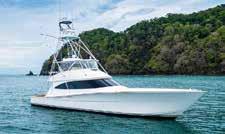

FIND
JIMMY AZZOLINI LICENSED + BONDED YACHT BROKER 850.259.3246 SCAN HERE TO LEARN MORE FL | AL | TX | CA | WA | MX | CR WWW.GALATI YACHTS .COM
Bozeman’s White Bears
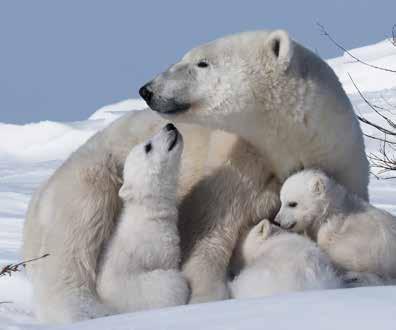
 BY MIRA BRODY PHOTOS BY DANIEL J. COX
Polar Bears are one species who’s habitat is greatly impacted by a changing climate.
BY MIRA BRODY PHOTOS BY DANIEL J. COX
Polar Bears are one species who’s habitat is greatly impacted by a changing climate.
A photographer and an academic team up to extend Bozeman’s conservation community to the Arctic 54 MOUNTAIN MTOUTLAW.COM
J. Cox has traveled to Churchill, Manitoba,
1989
in Canada’s Hudson Bay—
International, located 2,000 miles from Manitoba in Bozeman, Montana.
Originally a modest, volunteer-driven organization called Polar Bears Alive founded in 1994, PBI graduated into what is now the largest climate change resource and polar bear advocacy group in the world. Cox became involved when he met founder Dan Guravich and convinced the group to settle in the quiet southwest Montana ski town where it could draw on the talents of professionals committed to wildlife conservation while coordinating field projects around the world. Today, the photographer and conservation group share an office on the town’s northeast side.

“Polar bears are incredible creatures,” said Steven Amstrup, PBI’s chief scientist and one of the world’s top polar bear experts. “And now they have taken on so much more importance because they are the symbol of the dangers of the constantly warming climate. We have this incredible, charismatic species that I think everyone has an appreciation for that is also sending us a really important message.”
And what’s that message? We all share a single planet that is changing dramatically. And while many of us live far from polar bears and will likely never see one, what we do dramatically influences their habitat.
Amstrup is an adjunct professor at the University of Wyoming in Laramie and currently resides in Kettle Falls, Washington. He says his love for bears began when he was 5 years old, a passion that evolved into his studies and later, his profession. His University of Idaho master’s thesis focused on black bears. Shortly after, the U.S. Fish and Wildlife Service asked him to lead polar bear research in the Alaskan Beaufort Sea
>> 55 MOUNTAIN MTOUTLAW.COM
Daniel
each year since
to document polar bears
one of the lowest latitudinal locations on Earth they can be seen in their natural habitat. For the past 30-plus years, the natural history and wildlife photojournalist has been providing these images to the nonprofit Polar Bears
for the Polar Bear Research Project from 1980 until 2010. He began volunteering with PBI in 2001 and his storied relationship with these Arctic bears has spanned decades, continents and groundbreaking research, including a study published in the peer-reviewed journal Nature Climate Change on projected ice loss and polar bear population decline.

The International Union for Conservation of Nature’s Polar Bear Specialist Group lists the polar bear as a “vulnerable” species, meaning they are threatened by extinction unless circumstances drastically change. The union estimates that about 26,000 of these ivory bruins exist worldwide. Sea ice loss coupled with increased commercial activities, conflicts with people, pollution and disease are greatly threatening the bears and their habitat. In the time since Amstrup and Cox have studied these creatures, their population in Canada’s Northern Hudson Bay alone has dropped by 30 percent.
Both men have observed these habitat changes firsthand.
On Cox’s first trip to Churchill in November of 1989, he watched bears gather on an ice shelf in Hudson Bay to hunt seals. Today, the ice shelf isn’t large enough for bears to hunt until early December, depriving the bears of precious weeks. Part of Cox’s work with PBI includes a partnership called the Arctic Documentary Project, which he launched in 2005 to channel what he calls his important work: photographs that fuel a movement.
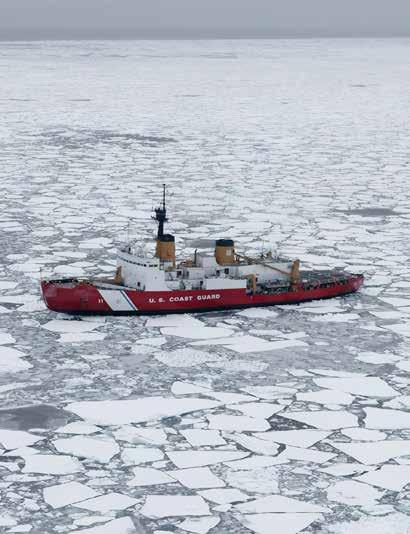 Steven Amstrup captures a Polar Bear.
A ship takes a trip through scattered ice in the Arctic.
Steven Amstrup captures a Polar Bear.
A ship takes a trip through scattered ice in the Arctic.
“Conservation is not just about game wardens and [U.S.] Fish and Wildlife employees … It’s really about how the rest of us live and recognizing our responsibility for caring for all life on Earth.”
56 MOUNTAIN MTOUTLAW.COM
- Steven Armstrup
“When I first started in this business in 1981—and before that as just a kid who liked to take pictures—I had this hope that these pictures would show people that we need to be considerate of these animals and that we need to protect them,” Cox said.
Amstrup recalls standing on the north coast of Alaska in 1981, staring at the Arctic Ocean and seeing sea ice even in the summer months. Today, that ice is out of sight, beyond the curvature of the Earth.
“Every species has a need for various ecosystem services: the ability to catch food, get water and a habitat that is undisturbed,” Amstrup said. “If you think about the habitat that polar bears live in, it’s a very different one than any other place that animals live … but their habitat is critical to their existence.”
Amstrup explained that while the impacts on polar bears may be more obvious because their habitat visibly melts, every species–including those we love here in the Greater Yellowstone Ecosystem, are feeling the same peril. We all live in one shared atmosphere.
There’s something about polar bears that draws people’s attention. Despite their apex stature, they appear fuzzy and cuddly, pure and white, and thrive in a cold, harsh landscape unreachable to most of humanity. It’s this collective love for these bears and for conservation work, Cox and Amstrup agree, that carries hope for PBI’s efforts playing out thousands of miles south of where the bears live.
“The important thing is that saving polar bears is about teamwork,” Amstrup said. “I think that PBI has been really good at getting the word out that this is what we need to do. Conservation is not just about game wardens and [U.S.] Fish and Wildlife employees … It’s really about how the rest of us live and recognizing our responsibility for caring for all life on Earth.”
Mira Brody is content marketing strategist at Outlaw Partners and producer of Mountain Outlaw magazine.

57 MOUNTAIN MTOUTLAW.COM
Amstrup is the top Polar Bear scientist in the world and has observed the species for most of his life.
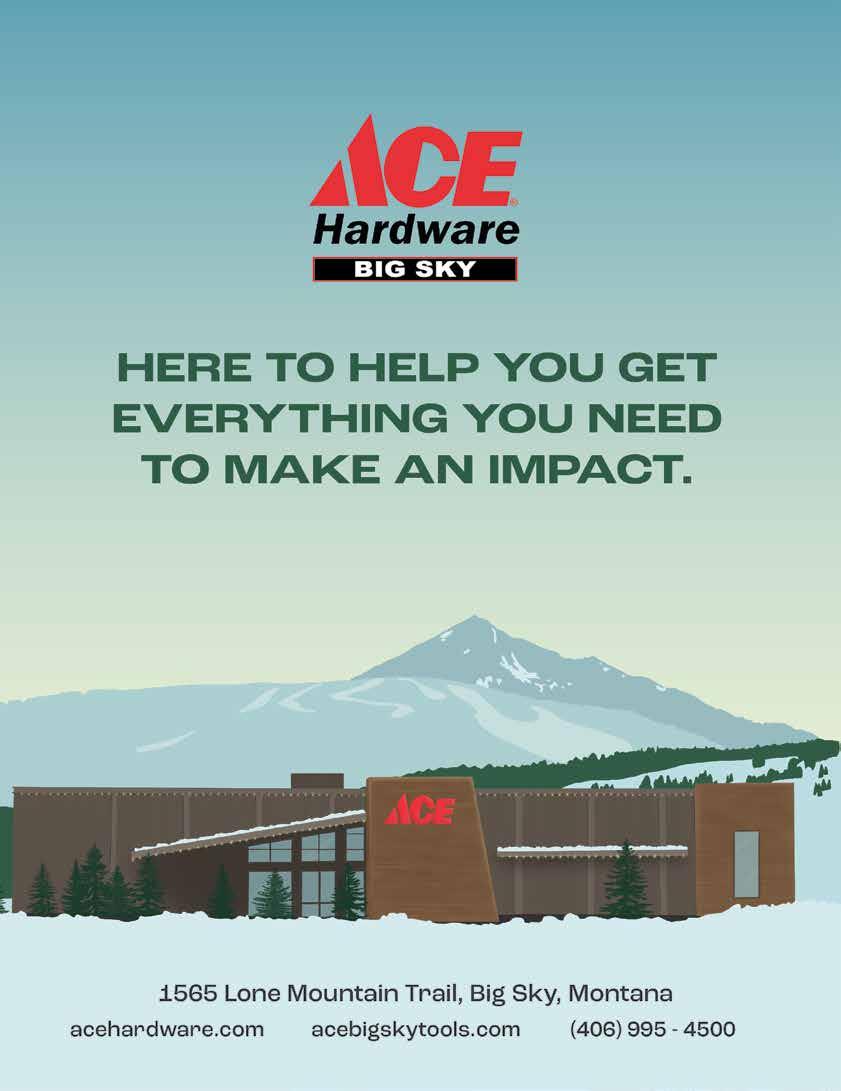


of Clothing at voormi.com EXPERIENCE THE DIFFERENCE BOZEMAN, MT | PAGOSA SPRINGS, CO
The Future
 Jonathan Marquis draws Vulture Glacier in Glacier National Park. "Every time I put a pencil to paper, it's always a discovery. That's my style. I don't know what I'm doing, let me try," said Marquis.
Jonathan Marquis draws Vulture Glacier in Glacier National Park. "Every time I put a pencil to paper, it's always a discovery. That's my style. I don't know what I'm doing, let me try," said Marquis.
60 MOUNTAIN MTOUTLAW.COM
PHOTO BY RICHARD FORBES
Jonathan Marquis draws connection between Montana’s glacial and human communities
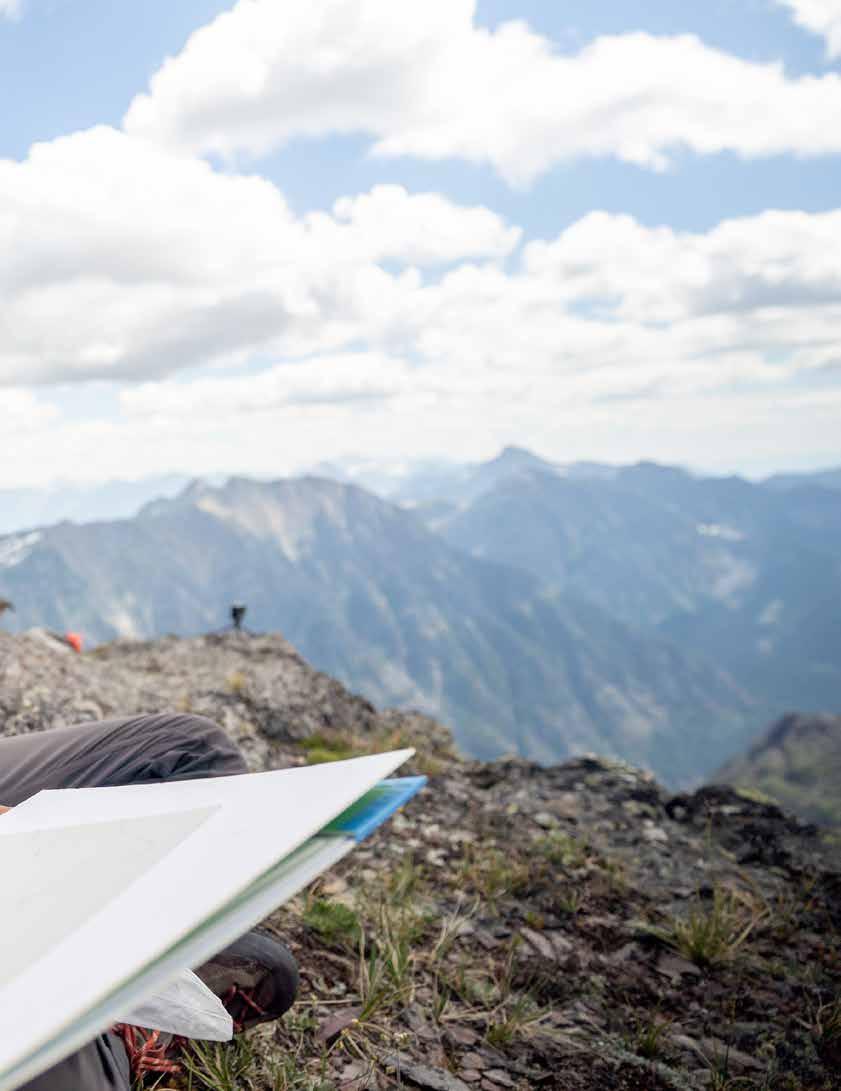 BY RICHARD FORBES
BY RICHARD FORBES
Jonathan Marquis puts pencil to paper, shaping the glacier as it claws the mountain before us. Lost in quiet exchange, he doesn’t seem to notice the bellowing grizzlies 1,000 feet away, their roars reverberating throughout the basin. The Vulture Glacier, wrinkled with melt lines and patterned blue ice, is perched opposite him above the lake-lined valley it carved long ago. Marquis sits cross-legged on the rocks, his body hunched, embedding himself in the landscape. The glacier is a lifeworld and Marquis is bearing witness.
Over the last nine years, as part of a lifelong journey to see and share how climate change is affecting his chosen community, Marquis has visited and drawn nearly 50 of Montana’s glaciers. By the end of summer 2022, the artist only had seven left to visit.
When Marquis talks about his drawing project, people always tell him he better hurry up, because he doesn't have long. Indeed, temperatures in Montana and the Intermountain West are rising faster than the global average. These rising temperatures, coupled with decreasing snowfall, are melting
glaciers ever more quickly. For years now, glaciologists, climate activists and journalists have tied glaciers to the climate movement, using stories of the glaciers’ degradation as an emotional catalyst to spur people into action. But that's only a small part of the story of glaciers. Marquis believes a singular narrative centered on loss does glaciers and the animal, plant and human communities that surround them an immense disservice, and may imply that there’s almost no hope left.
Here's Marquis’ take: What if, instead of scaring people into addressing our fraught relationship with the planet, he used his art to show what the glaciers look like, right now? What if his drawings could show that glaciers aren't chunks of ice, they're beings, and therefore members of our global community of humans, plants, animals and elements, each worthy of life? By offering a different way to imagine glaciers—as their own rich lifeworlds in need of caretaking— Marquis believes he can be part of a broad network of people inspiring a healthier relationship with our world.
Marquis never meant to become a landscape artist. Study-
>> 61 MOUNTAIN MTOUTLAW.COM
ing at Ball State, and later at the University of Montana, he became a process artist, subscribing to an artistic movement in which the process of making art is as important as the final product. At that time, he was exploring pop art, abstract expressionism and collage. He was also pursuing his own mindfulness practice, spending days wandering around the mountains near Missoula, slowing down and drawing whatever he saw. Marquis sought a long-term project in which to lose himself.
In 2013, Marquis attended a presentation by Doug Peacock, a writer and conservationist whom he’d long admired. During the Q&A, Marquis asked Peacock what a young artist could do to continue the conservationist’s work. "Bear witness to your own backyard," Peacock said.
At first, Marquis wasn't sure what exactly he should bear witness to, but at the time, glacial melt in Glacier National Park was all over the news. With some research, he learned there were at least as many glaciers in Montana outside the national park as inside, some only 30 miles from home. He remembers thinking, "Holy shit, there's a fuck-
ton of wilderness glaciers in Montana, and no one's talking about those. What's going on in there?" Marquis and his friends had spent more than a decade mountaineering throughout the state and he knew he had the skills to at least get started. He figured the project would take him six or seven years at most.
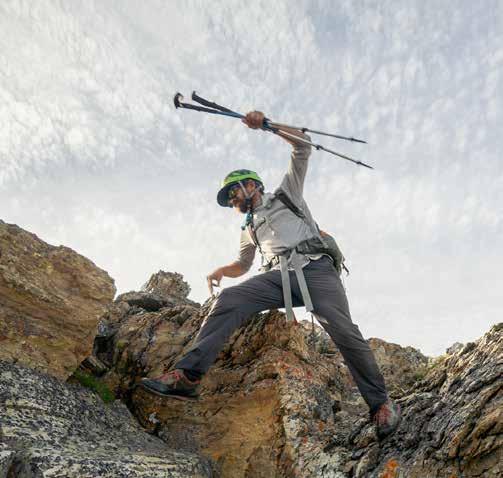
Nine years later in early June of
from Tucson, where he lives most of the year teaching art at the University of Arizona and a local community college. When the spring semester ends, he drives to Montana for the summer. I’d learned about his project a few months earlier, and after an hour talking mountains, I mustered up the courage to ask if I could visit glaciers with him.
He leaned forward, his eyes narrowing. "What story are you trying to tell about glaciers?"
I wasn’t sure how to answer, so I said what I knew: I wanted to tell stories about the relationship between people and glaciers and see what I found. That was good enough for him.
It is extremely difficult to reach most glaciers in Montana. Few have trails and most are deep in the backcountry, plastered to protective cliffs and guarded by miles of dense vegetation and scree. While the West is full of peakbaggers chasing summits, few other than scientists set their sights on glaciers, and even they rarely have the funding, time or skillset to visit the most remote glaciers.
Visiting all the glaciers in Montana is a bold goal, one I can find no record of anyone achieving. To pull it off, you need to be a few things: absurdly stubborn; comfortable enough in the backcountry to know you can handle whatever you find; and willing to go in blind, as Montana is famous for its tightlipped outdoors community. In
I once asked Marquis to describe a glacier for someone who'd never seen one. He said watching a glacier as it tears the land is raw, everything around it upturned and fresh. Glaciers are so present, he said. It’s impossible to look away. They are sublime, wondrous, frightening, rugged, exhilarating.
2022, I met Marquis for a beer in Missoula. He’s thin and angular with a cockeyed smile. His eyes are expressive, and when he’s thinking hard—which is often—he squints. Even then his eyes are always twinkling with a joke, making him seem younger than his 41 years.
Marquis had just arrived in Missoula
California and Colorado, there are endless forums devoted to unraveling the mountains. In Montana, as soon as you leave the beaten path, you’re on your own. Big adventures require hours poring over maps and building trust with the small communities who know how the landscape fits together. Even when
After sneaking past a pair of grizzlies in Glacier National Park, Marquis leaps over a gap on the way back to camp. PHOTO BY RICHARD FORBES
62 MOUNTAIN MTOUTLAW.COM
you think you understand the terrain, you’ll never know what conditions you’ll find. Each trip is founded in faith, tenuous tips and the unknown.
In early August, we got a chance at our first glacier together. Forty miles and three days into the trailless depths of Glacier National Park, we found ourselves at Vulture Glacier. Vulture was the third of five glaciers we’d hoped to visit this trip, but the terrain was rougher than we’d expected and we realized we might only have a chance at one more. Marquis started a few drawings and packed them up to finish later in the studio.
I lagged as we pressed toward the next glacier, careful not to disturb a grizzly sow and her cub foraging for larvae, wrestling and bellowing at one another. Only a few years earlier, one of Marquis' friends had been attacked by a grizzly a few miles away. To give them
space, we found a new route creeping across a steep snowfield and slogging our way up fields of loose scree. At every step, the park’s infamous rotten rock crumbled underfoot and sloughed down the mountain.
From the summit, we could see at least seven glaciers, one of which Marquis hadn't yet visited. The day was beginning to fade, so Marquis took photos to draw from later. We skidded headlong down the loose rock back to the basin and the squabbling grizzlies. We tiptoed past them, shielded by a rock rib, holding our breath, before safely emerging into a different valley. As the sun set, we walked by glaciallycarved slabs and fields of wildflowers to camp. The next day we arrived back at the car with four glaciers, 60 miles and 20,000 feet of elevation gain behind us. Glaciers are defined as masses of ice flowing downhill under their own
weight. If the ice stops moving, it’s no longer a glacier. But no one knows how much ice is necessary to move downhill, and it can be hard to tell via satellite if ice is moving. For purposes of study, Montana glaciologists have adopted a standard: if by the end of summer the ice is larger than 25 acres, it's a glacier. If it’s smaller, it’s a permanent snowfield. Glacier sizes are reassessed every five to 10 years.
But Marquis isn't preoccupied with these glacial classifications and instead works from a list of Montana glaciers he compiled in 2014. He’s much more concerned with how the glacier interacts with the landscape around it; how it shapes the earth in its path and feeds the communities below it with fresh, cool water.
I once asked Marquis to describe a glacier for someone who'd never seen one. He said watching a glacier as it >>

Top Left: Red Eagle Glacier drawn by Jonathan Marquis. 2022. Red Eagle Glacier is no longer large enough to be called a glacier.
Bottom Left: Siyeh Glacier drawn by Jonathan Marquis. 2018.
Right: Beartooth Glacier drawn by Jonathan Marquis. 2021.

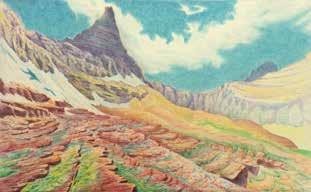

63 MOUNTAIN MTOUTLAW.COM
tears the land is raw, everything around it upturned and fresh. Glaciers are so present, he said. It’s impossible to look away. They are sublime, wondrous, frightening, rugged, exhilarating.


After nine years of seeking glaciers, Marquis’ life has become its own cyclical piece of process art. When the school year ends, he drives from Tucson to Missoula to stay with his friend Ryan, whom he's known for 21 years. Marquis adventures with Ryan near town while waiting for the winter snow to melt, revealing the glaciers. For the rest of the summer he stays with another friend just outside Glacier National Park, visiting glaciers until it’s time to head south. He spends his fall and winter teaching art, finishing the previous season's drawings and preparing for the next. After years of research, he knows roughly how to reach each glacier, but before each season, he calls friends for advice and asks who might be crazy enough to join the next set of trips. Every step of his process involves his community.
Each of his drawings is a process in and of itself. As Marquis hikes, he immerses himself in the land, breathing it in until he reaches a glacier. Then he slows down: What is it like here? Is it raining? How does he feel? If everything allows, he pulls paper and pencils out of a Ziploc bag and looks to the glacier. In that moment of connection, he and the glacier begin to collaborate. Marquis bears witness, just as Peacock instructed him to do years ago, his attention flicking between his paper and the snow, drawing as fast as he can take in new details. He makes a few drawings before packing up and moving on. Later he will finish the drawings in Tucson aided by photographs. A single drawing can take up to 40 hours.
The reality of climate change can feel heavy—a 2020 survey by the American Psychological Association found that two-thirds of respondents felt at least some “eco-anxiety,” and a quarter of them said they felt it a lot. Perhaps the premise of Marquis’ project may feel depressing, but not to him. In fact, he spends very little time thinking about what might happen if these places disappear. He believes preemptive grief distracts from the real work to be done
Top: Marquis draws Whitecrow Glacier. "If we can imagine a glacier as a rich life world that's in need of caretaking, we can shape the world to be more accommodating to glaciers and all other living creatures that call this place home," Marquis said. PHOTO BY RICHARD FORBES
64 MOUNTAIN MTOUTLAW.COM
Bottom: Marquis takes in the views near camp. "I'm so inspired by these places that I have to make something about them, being silent isn't an option,” Marquis said. PHOTO BY RICHARD FORBES
now: to know and protect these places.
Marquis accepts that glaciers have always and will always be changing. He chooses to spend his time here by building a relationship with the world, even as it changes, and through this process, he finds space for both grief and joy.
A week after visiting the Vulture Glacier, we’re in the northeast corner of Glacier National Park, seeking Miche Wabun Glacier. On our way to the valley where the glacier lives, we push through thickets and ford a river five times. The water is numbingly cold, fed by the glacier we cannot yet see.
Black clouds gather in the upper reaches of the valley. After hours spent climbing a ridge, the wind begins to whip us with raindrops. From the ridgetop, we can see the glacier more than 3 miles away. The sun is going down. We will not make it. The decision to turn back is easy.
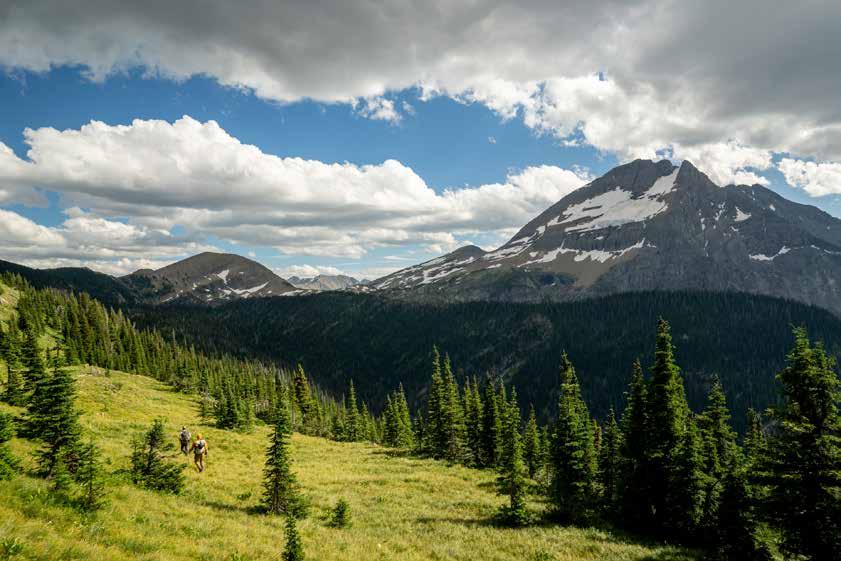
We linger on the ridgeline for 30 minutes, taking photos and spending time with the glacier as close as we’re allowed to come. It’s too wet for a drawing, the rain sweeping through in gusts. Marquis is bundled up in all his layers. We head down, reaching camp just as the last light leaves.
Marquis only has seven glaciers left to draw. If he wants to, he could finish next summer, and he may. But he doesn’t want to finish too quickly. In fact, recently he's been thinking he may decide to leave some glaciers uncontained in a drawing; to disregard the selfish impulse to see everything; to let something live its own life in its own way without human interference.
He also knows he’s not going to stop drawing glaciers, even when he’s finished with this project. He’s going to keep giving back to the glaciers in whatever way he can. This is his life’s work. When he’s finished with this drawing project, he’d like to have an art show and then keep making more. He tells me he’ll keep visiting glaciers until he can no longer walk.
Richard Forbes is a Montana-based outdoor guide and environmental journalist. When he remembers to slow down, he writes poetry and sits next to rivers.
65 MOUNTAIN MTOUTLAW.COM
Marquis and Colin Sibbernsen cross a meadow beneath Two Oceans Glacier. PHOTO BY RICHARD FORBES
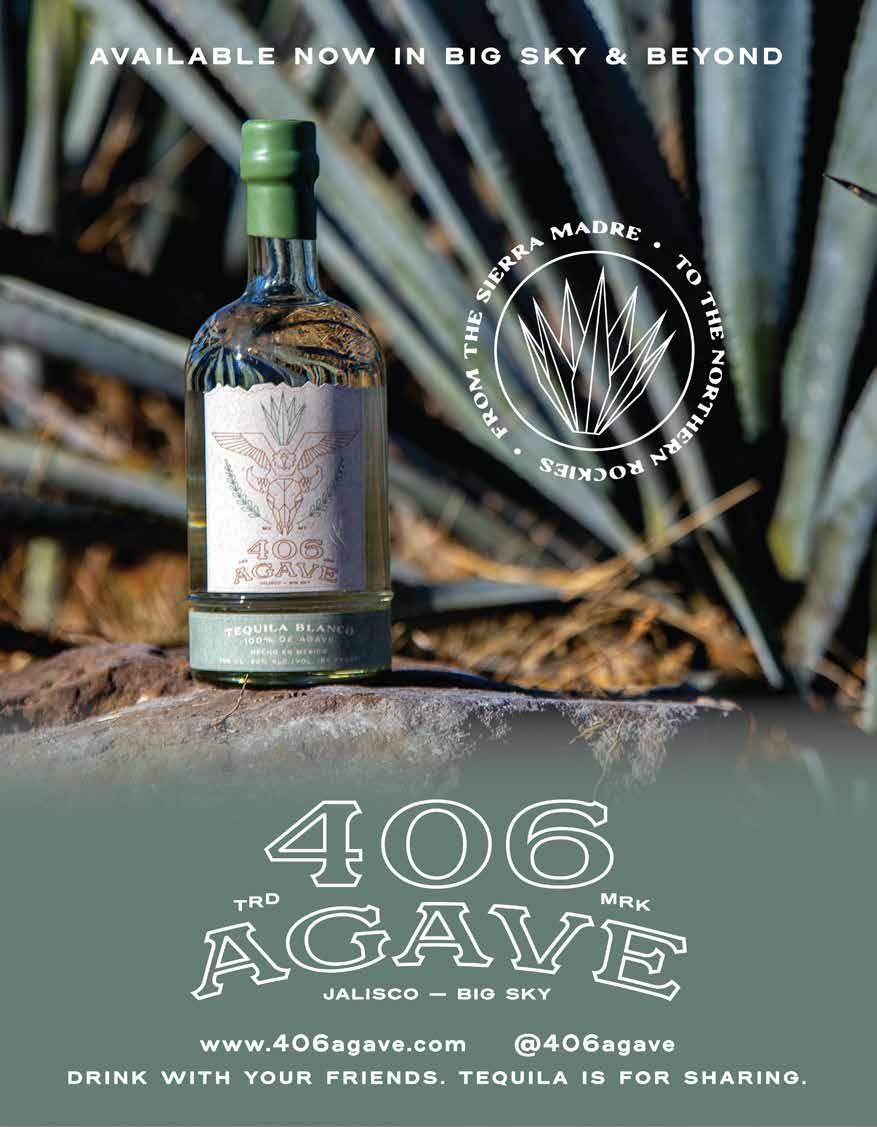
Brett
By Joseph T. O’Connor
Brett Jenks tells the story of a popular late ‘60s Peruvian soap opera called Simplemente María about a young uneducated woman who moves from rural Peru to the capital city of Lima. In the show, María buys a Singer sewing machine. What seemed like an innocuous detail in fact had a remarkable effect: the fictional purchase led to a real-life surge in demand for Singer’s products in South America.
The show’s producers wondered if the same approach could be applied to a cause. In one episode, they had María sign up for a literacy course and the pattern repeated: Lima witnessed a surge in literacy based on the soap opera.
The story itself is a case study in inadvertent marketing, but Jenks, CEO of the conservation nonprofit Rare for the
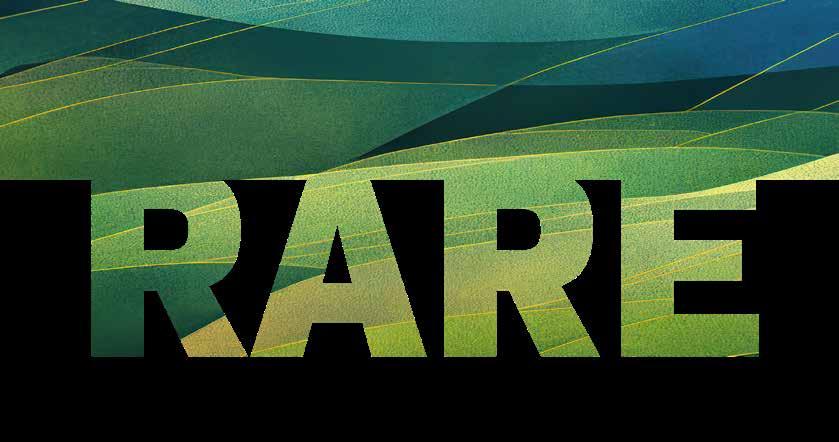
last 22 years, saw a parallel in social behavior that his organization has studied and utilized to promote sustainability and responsible behavior on various tropical islands around the globe.
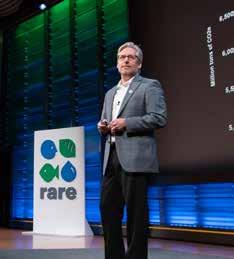
“[Simplemente María] led to a whole body of research about what ended up being a field that's loosely called ‘edutainment,’ or educational entertainment,” said Jenks, 55 at the time of our conversation. “It has translated into a much greater investment in the actual behavioral science that drives people to adopt new and hopefully sustainable practices.”
That science is part of a triumvirate of Rare’s approach to success: behavioral tendencies, teamwork and storytelling (“There's nothing more powerful than a story,” Jenks says). And it’s working. Since Jenks took the
How conservationist Brett Jenks sees the changing world and our place in it
>>
67 MOUNTAIN MTOUTLAW.COM
speaks at Rare’s inaugural BE.Hive summit at National Geographic in Washington, DC. The summit brought together leaders from behavioral science, climate science, conservation and other fields to explore behavioral solutions to climate change in March 2019. PHOTO COURTESY OF RARE
helm, Rare has seen its allocated budget grow 3,000 percent, from $800,000 to $36 million, and partnered with hundreds of philanthropic groups and governments across the globe to confront some of the most profound environmental challenges on Earth.

In Indonesia and Mozambique, Rare is helping sustain fish populations while maintaining robust economies for fishermen; in Columbia, they’re working with farming communities to implement regenerative and low-carbon agriculture; here in the States, Rare is studying and implementing emission-reduction techniques to combat climate change. Ultimately, the man in Rare’s CEO chair understands the interrelated nature of the shifting environment and our need to do something about it.
Mountain Outlaw caught up with Jenks late last summer to discuss Rare, his work as a former journalist, the saving grace of the Inflation Reduction Act, and why he believes every home that can, should be powered by solar energy.
Mountain Outlaw: Brett, you started with Rare in 2000. Not many people these days can say they've worked at one place for more than 20 years. What motivates you to continue this work you're doing and lead the team at Rare?
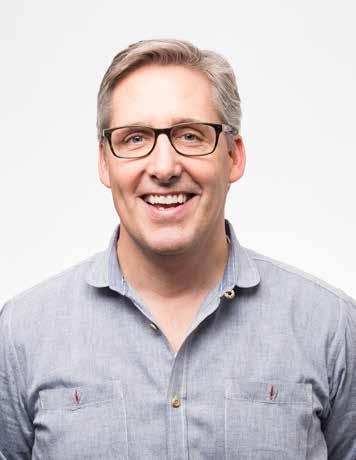
Brett Jenks:
I never thought I would be at any one place this long. It's just not the norm anymore. But there's probably several reasons why I'm still at Rare: one is that there's something about being on a team. I like the camaraderie and the mutual commitment. And we've had a great board and a great staff over the years. The second is that the environment is omnipresent and the challenges facing it are myriad.
Life is what you make of the challenges that you're thrown and I feel like conservation is essentially addressing the challenges that show up on your doorstep, whether it's overfishing in the tropics, or the multigenerational despoiling of soil, or climate change. And there are social solutions, economic solutions, technological solutions, policy solutions, cultural solutions. The environment is the mother of all Rubik's Cubes. You've got so many angles, so many shades of problems and so many potential solution sets. But what they all have in common is human nature. Can we do what's best for the planet and ourselves?
M.O.:
You're talking about challenges. Of all these projects Rare has worked on over the years, what has been the most challenging and sticks out in your mind?
B.J.:
Humans are the environmental problem on planet Earth. We have potentially been here for 250,000 years. Humans in the last 50 years have produced 90-plus percent of the additional greenhouse gas emissions that are in the atmosphere and therefore it's taken two generations of highly sophisticated technology capable of burning lots of fossil fuels to put us in a situation where we can't count on the weather or water anymore.
The environment is the mother of all Rubik’s Cubes.
You’ve got so many angles, so many shades of problems and so many potential solution sets. But what they all have in common is human nature. Can we do what’s best for the planet and ourselves?
- Brett Jenks ”
“
68 MOUNTAIN MTOUTLAW.COM
CEO of conservation nonprofit Rare, Brett Jenks. PHOTO COURTESY OF RARE
Culturally, I think there are people who look at conservationists and think they're Luddites or they're anti-growth or anti-wealth or they just want to hold back human development. But philosophically, personally, I'm an entrepreneur and I'm really interested in sustainable solutions and sustainable business models.
M.O.: Considering the massive amount of responsibility humans have to the environment, what separates Rare from other conservation nonprofits?
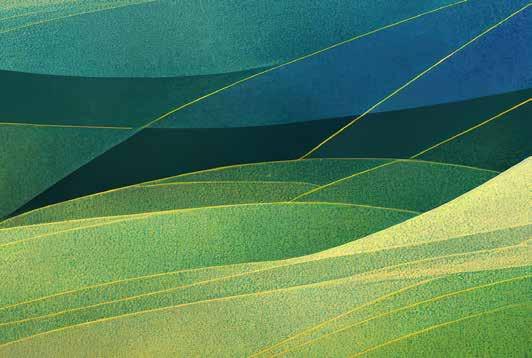
B.J.:
Rare is a little different in that its focus is really on how to meet people where they are: ranchers, fishers, farmers, the average citizen. Rare recognizes that every conservation challenge is about people and human behavior and that we all have a shared interest in a sustainable planet. And leveraging that common ground, our shared interests in a livable planet, lets us think creatively about how to meet people where they are and how to work on the notion that everybody can do a little better.
I have huge respect for the thousands of other environmental organizations out there and I have a non-disparagement rule: I have no interest in discounting the work of other environmentalists
because they're all working their tails off, and they're not getting rich doing it. They're doing it because of this belief. The second difference is a real belief in the science of behavior change. There's been a revolution in the last 20 years in our understanding of how we make decisions, what being rational as a human actually means, and how rational are we? From behavioral economics and social psychology and neuroscience, there's lots to be learned about how predictably irrational we are.
M.O.:
Let's talk about getting that information to people. You're a former journalist and filmmaker. Your investigative work at the Hudson Reporter newspaper on the conditions at the Hudson County Jail was picked up by the New York Times and led to the jail being shut down. What does storytelling mean to you and what lessons did you learn from that experience?
B.J.: Storytelling moves people. Our brains are wired to respond to stories, to be captivated by stories and to retell stories. The better the story, the more likely it is to be retold. The question becomes, for us, what are the stories about nature and sustainability that become iconic, that inspire us to be more human by be-
ing better to the planet?
As a conservationist, I'm fond of saying there's no presentation that should ever be given that doesn't start with a story and somehow build on it. There's a number of key foundational stories that Rare lives and breathes. One of them is the story of [Rare Godfather] Paul Butler in St. Lucia. I was at walking down the street in Switzerland one day at a big fancy event called Davos, the World Economic Forum, and I saw Adam Grant, who's a best-selling author and behavioral scientist. He said, ‘When a CEO puts me on stage and says tell us something positive … I tell the story about the St. Lucian parrot because you guys were able to instill a sense of civic pride in nature. I just love that story. I tell it all the time.’ Here's a best-selling author who gets paid lots of money to do big speeches, and one of the stories he carries around in his satchel is this little story of hope from a little island in the West Indies called St. Lucia. That's the power of a story.
M.O.:
One could find similarities between Rare’s approach and for-profit business models, even social media. How does Rare believe stories and personal habits inform people's behavior and tendencies to want to be involved with your nonprofit?
Jenks joins Waldemar Vergara Filho (seated in the boat), a local fisheries leader in northern Brazil’s Para state in conversation with a community member in August 2017. PHOTO COURTESY OF RARE
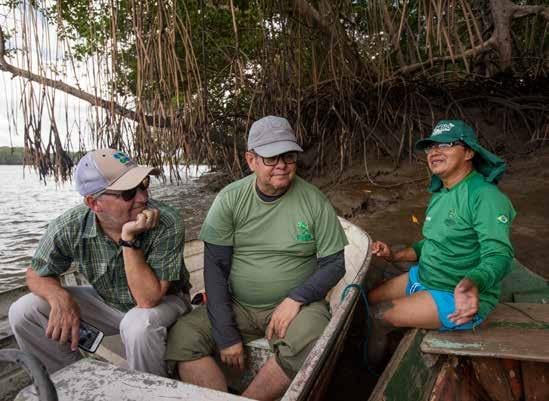
>>
B.J.:
We're spending a lot of time and energy right now thinking about that connection between stories, social media, entertainment and our personal habits. This is something that piqued our interest years ago when we began to learn about the work, for example, of Norman Lear in Hollywood, or Miguel Sabido, who produced Simplemente María. We've learned that people change for three reasons: because they believe other people they respect expect them to change; because they see other people changing; and because they have the sense that other people are starting to change.
Let's take climate change right now. The Biden administration [in August] signed into law the Inflation Reduction Act. A big chunk of this [$700 billion] bill is designed to provide economic incentives to put solar panels on your roof and to get people to drive electric vehicles, just to take two of the behaviors that we as conservationists would love every American, if they can afford it, to adopt. Why? Because it creates a ton of jobs, it's creating new science [and] technology, and it's going to dramatically reduce your cost of living long term and your greenhouse gas emissions because I drive an electric vehicle at home now and I charge it with solar panels. The technology is here. The incentives are now there.
M.O.:
But electric and solar are not new. You've seen the documentary "Who Killed the Electric Car?" What's changed? What's different now?
B.J.:
You're right. There's nothing new about an electric vehicle. Thomas Edison teamed up with Henry Ford, and the original Ford, which built the car industry globally, was supposed to be electric. At one point they had agreed to a handshake deal and Thomas Edison said, ‘I will bring you all the batteries.’ What's different is that 100 years later we've got better batteries. The technology has changed, the cost curves are tremendous when you think about just how much innovation has taken place. Solar is now cheaper than gas. And wind is cheaper than gas, and geothermal is cheaper than gas.
The argument I always hear that I find funny is they say yeah, but it's only 4 percent. Well, that's because it's brand new. No one told Steve Jobs iPhones are never going to sell because only 1 percent of Americans have bought them. Well, that's because it was year one, it was
month one. Look at us today. This is what solar is going to be like.
M.O.:
Let's talk about success and growth. Under your leadership, Rare has grown 3,000 percent since 2000. You've forged partnerships with hundreds of businesses and nonprofits over the years. How important is collaboration in a successful organizational model today?




B.J.:
It's one of the most important things we can do. And I think we have to get really good at it. Once we develop solutions that are proven effective, the question is how do you scale them? And the way we're going to do that is through partnerships. Today, Rare has more than 300 partnerships all over the world, and those partnerships are with governments and nonprofits and for-profits. The telling of certain stories in certain ways can be much more effective on a streaming service, for example, and Rare is never going to own a streaming service, so there's no way we're going to get those messages out unless we partner with Hollywood. The same is true of social
Brett Jenks with Paul Butler, a conservationist and driving force behind Rare’s “Pride Campaigns.” St. Lucia, 2005.
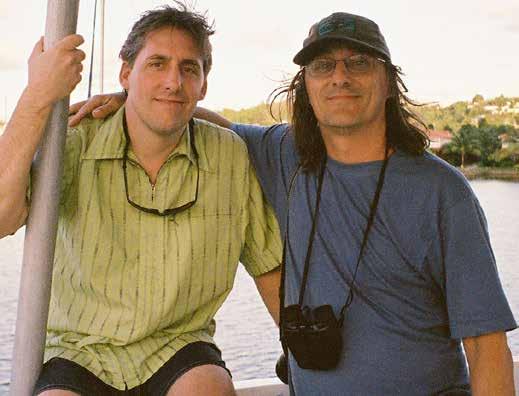 PHOTO COURTESY OF RARE
PHOTO COURTESY OF RARE
70 MOUNTAIN MTOUTLAW.COM
media providers and leveraging the breadth of Meta, or Instagram or Facebook or eventually Tik Tok or Nextdoor.

M.O.:
Let's talk about scale here because I'm interested in the size, the breadth of some of these projects that Rare is working on internationally. For an issue as complex as farmers in Colombia or depleted fisheries in Guatemala, how do you break down a solution so it's effective and achievable?
B.J.:
Basically, it comes down to creating minimum viable products. Working on something like fisheries, step one was to really understand the problem. For three generations, we've seen a decline in catch-per-unit effort. Fishermen work harder, they work longer and they catch less. So, you have this declining value proposition for the ocean. You can look ahead and say, ‘Well, geez, we're not just talking about a few poor fishermen along the coast. We're talking about an existential crisis for a billion people.’
Each one of these communities has maybe 1,000 fishers but there's 30 to 50 million coastal fishers around the world. How do we design something to change your economic incentive or a social incentive for fishing that's going to recover those fish populations and make sure they stay protected and growing, while fishers are hopefully making more money from the surplus from the growth? That gets really complicated, so you have to break that down to what it looks like in one community and you start to develop a series of pilots. In one community, can we get a couple hundred fishers to agree that they're not going to fish in the spawning areas so that the fish have a chance to grow up and mature?
To your point earlier about the value of the narrative, the story goes from, ‘Well, these liberal do-gooder environmentalists are asking us to sacrifice this year's fish catch.’ In reality, these partners are enabling local fishers to be forward looking and protect their lifestyle and the economic future and sustainability of the habitats on which those economics depend. That doesn't happen
with a slogan or a couple of posters and billboards. It comes from trust building and meaningful engagement day in and day out such that a local fishing group eventually feels like they did it themselves. Then scale becomes a question of driving down the per-unit cost just like any business.
M.O.:
Where does organizational responsibility end and personal responsibility begin?

B.J.:
Our organizational responsibility is to make these tools and these insights and the data and the science and the stories widely available. Then I think individual responsibility is self-imposed. We're not making anybody do anything. The question is, what's the responsibility we feel to each other? I feel responsible for reducing my use of fossil fuels not because I hate Exxon but because I really enjoy ... a stable climate. And we have just begun to understand what the ripple effects of a changing climate are going to be. Ten percent of Americans produce 50 percent of our greenhouse gases. I fly a lot and I'm relatively well to do [so] I feel very lucky by comparison. But that means I have a higher carbon footprint than most people. Putting solar on my roof, driving an electric vehicle, investing in lots of projects around the world to offset my flying is the best way that I know.
M.O.:
Leaders and mentors to each of us play significant roles in our lives. Who comes to mind when you think of the influence they've had on your life and career?
B.J.:
My first hero was Pele, the soccer player. I would have loved to be a professional magician on the soccer field like Pele was. But what was even more impressive about Pele was that he was such a humanist. He spent time visiting war-torn Central America. He was so famous and so popular that he could stop a battle for 24 hours or 48 hours by just going to both sides and signing
autographs and kicking around the ball. Then my mom and my dad are probably the most influential because my mom is very empathetic and very attuned to human suffering, very attuned to racial justice. My dad traveled and worked a lot so it was hard for her to have a career other than through volunteering. So, she volunteered. And that became a norm within our household that when you had a little time, or when you were feeling a little sad, doing something for someone else was the best way to feel better. I'm not afraid of selfinterest. It feels good to do good work. People ask, ‘What are you going to do when you retire?’ I'd probably be doing something like this even if I wasn't paid. This is what the world needs, and I like doing it.
M.O.:
You live in Arlington, Virginia, and we first met at a July event in Big Sky, Montana. Where do you believe leaders in Montana and the American West should primarily focus their attention?
B.J.:
I was so struck by the opportunity that the people of Montana have in the West to leverage their pride in place and leverage their pride in cultural identity to have an extremely positive impact on the rest of the planet. Look, the cowboy ranching tradition of the planet was invented in the American West. The movies, the stories, the books, the songs.
If the ranchers of the West can adopt the next-generation practices of land care, of water care, of river restoration, of soil carbon, of climate-smart beef and bison, if they can be the leaders that adopt the Ford F 150 E, and solar panels to charge their trucks, I think there's a revolution in the making because there's so much sun and so much wind and so much land that whether it's the soil or the energy we use to live on that soil, there is a vision that could be powerful for the whole planet.
Joseph T. O’Connor is managing editor for the public-interest journalism nonprofit Mountain Journal. He’s the former editorin-chief for Mountain Outlaw.
71 MOUNTAIN MTOUTLAW.COM
Visit Montage Big Sky this winter.
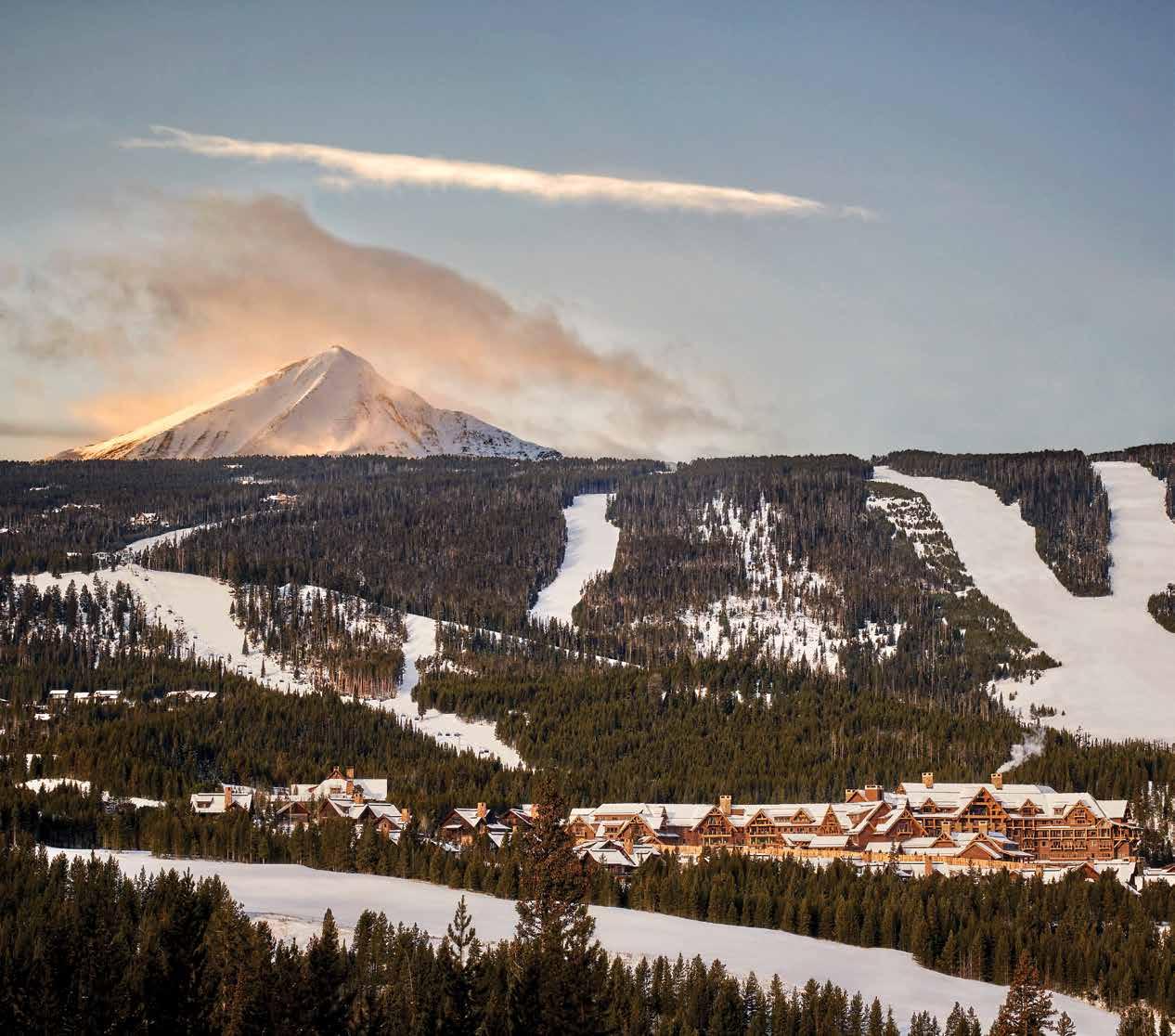
An elevated Alpine getaway set in the stunning Spanish Peaks Mountains in Big Sky, Montana. Perfectly located as your basecamp to Yellowstone National Park, a big Montana adventure and skiing at Big Sky Resort.
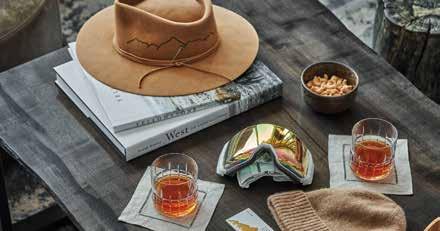
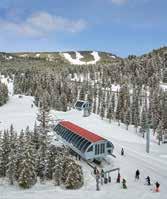

Whether you are staying with us, dining in one of our six restaurants or joining us for our popular complementary s’mores each night from 5-7pm, we are delighted to welcome you.

995 Settlement Trail, Big Sky MT 59716 (406) 993-8385 | MONTAGE.COM
How one woman’s passion for skiing sparked an industry-wide DEI movement.
 BY GABRIELLE GASSER
BY GABRIELLE GASSER
74
MOUNTAIN MTOUTLAW.COM
GGrowing up in Hawaii the daughter of Asian and European immigrants, Chris Walch didn’t click into her first pair of skis until the age of 22. She was in Austria visiting her dad’s side of the family, almost all of whom were ski instructors. Totally out of her element, Walch recalls feeling confused while being fitted for gear and the unnatural feeling of trying to stand in skis and boots. But then, once she started sliding on snow for the first time— euphoria.
Like many of the students she has since taught as a ski instructor herself, Walch said she leaned too far back and had to be pushed up a rope lift by her uncle. At the top, with no knowledge of how to turn or stop, her uncle simply nudged her down the hill and she miraculously made it back to the flats unscathed. Immediately hooked, she told her family she needed lessons from an instructor.
“I loved it,” Walch said.
When it was time for her family to head home from that Christmas break trip, Walch announced that she was staying in St. Johann, a small ski area in Tirol, Austria, and becoming a ski instructor.


After one full season of ski instructing, Walch attended law school, instructed during her breaks, and was set to kick off her career as a finance lawyer when the market crashed in 2008. Instead of starting her job right away, Walch took a stipend from her future employer and went to Argentina to ski instruct at Bariloche for a season and earned her British Association of Snowsport Instructors Level I and II certifications.
Walch spent six years working at a law firm first in offices in New York and London and later, in her third year, she moved to the Los Angeles office; but skiing remained a huge part of her life. Each weekend she’d drive five hours to Killington, Vermont, or Mammoth Mountain, California, and every vacation she took was a ski trip. Walch says she hasn’t been home to Hawaii for Christmas since she moved to Europe at age 22. She’s 40 this year.
Walch left her career as a finance lawyer to pursue her passion for ski instructing. PHOTO COURTESY OF CHRIS WALCH
Chris Walch is the founder of Women of Winter, a Bozeman-based grassroots organization. PHOTO COURTESY OF CHRIS WALCH
>>
75 MOUNTAIN MTOUTLAW.COM
Opposite: The six Alpine Level I scholarship recipients pose at the top of Ramcharger in 2022. PHOTO BY MICHELI OLIVER
Though she was working full time as a lawyer, Walch was much more driven by her time on the slopes than her time in the office. Intending to pursue her purpose in life, she traded her 9-to-5 job at the firm for the life of a winterchasing nomad embarking on a six-month tour of every ski town where she thought she might want to live. Eventually, Walch landed in Bozeman, Montana, and scored a gig ski instructing at the Yellowstone Club near Big Sky.
“I didn’t give myself the mind space to explore what I wanted to do versus what I should do,” she said. “What I wanted to do was designed around skiing.”
Inspired by the female instructors she works with at the Yellowstone Club, Walch founded Women of Winter in 2018 (WoW), initially offering an annual storytelling event reminiscent of TEDx talks. Following the event’s first year success, Walch said she wanted to turn inspiration into action and broaden her
organization’s impact on the snow sports industry.
Walch said as a ski instructor, she looked around and saw that there are almost no women of color in the field. “Women of color don't even register on the ski instructor scale,” she said.
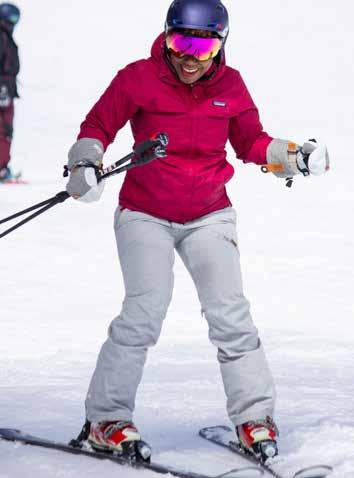
According to a 2022 Professional Ski Instructors of AmericaAmerican Association of Snowboard Instructors survey, 85.6 percent of its national membership is white, and representation of all other races and ethnicities was reported at about 3 percent or lower. The survey also revealed that membership skews heavily male at 69 percent.
The clientele for ski lessons is becoming more diverse each year, Walch said. This makes it especially important to get more people of color in instructor positions—to be visible role models for new skiers and riders finding their way into the sport.
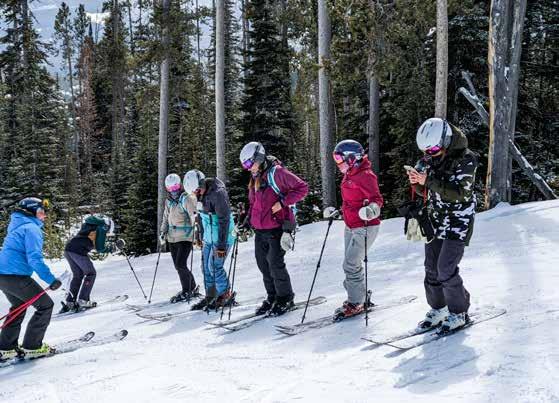
“Who doesn't want to feel like when you go to the mountain that you're welcome and that you have a community and that you have people supporting your back,” Walch said.
In recent years, Walch and WoW have been focused on using education to give more women of color access to the ski industry.
In 2019, WoW offered eight scholarships for women to receive their American Avalanche Association Avalanche Level 1 Certification. After a break in 2020, WoW has offered eight of these scholarships each year in addition to its other Level I opportunities.
Since 2020, WoW has awarded 36 scholarships to Black, Indigenous, and other women of color to earn their PSIA-AASI Level I certification as ski and snowboard instructors and to be fully kitted out with all the gear they need. WoW is also offering 24 scholarships for two PSIA-AASI Level I certification events in 2023, one at Big Sky Resort and one at Summit at Snoqualmie.
Women of Winter participant Stephanie Lampkin practices skiing in a wedge during the 2022 Alpine Level I scholarship program. PHOTO BY GABRIELLE GASSER
76 MOUNTAIN MTOUTLAW.COM
Six Alpine Level I 2022 scholarship recipients listen and take notes while Rogala instructs them. PHOTO BY GABRIELLE GASSER
color don’t even register on the ski instructor
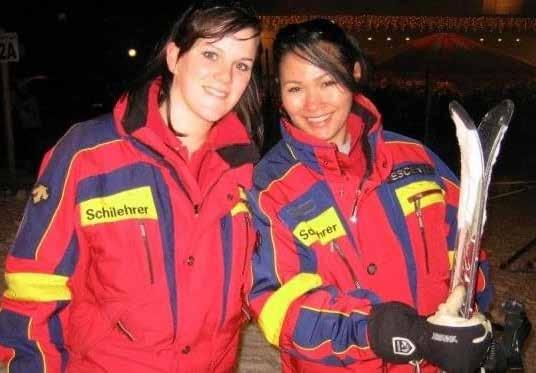
“We wanted to inspire and empower the women and girls in our local community to want to get outside, to want to be courageous, to want to be bold, so that they can embrace their own path in the mountains and in life,” Walch said.
The first year of the PSIA-AASI scholarship program, WoW brought six women of color to Big Sky Resort to obtain their Level I certification. In 2022, Walch’s organization doubled its impact, bringing 12 women of color to Big Sky Resort. Five of the six original recipients flew back to cheer the new cohort on, throwing them a graduation party after they received their certificates.
Building on the success of the Level I scholarship program, Walch said the plan is to continue investing in the WoW scholarship recipients and provide them with further education. This season, WoW will offer two additional scholarships for past recipients: six Freestyle Specialist Level I scholarships and six Children’s Specialist Level I scholarships.
“Our focus really is how do we go from creating a large amount of small points of change to more enduring and sustained change,” Walch said. “That's our pivot this year and the focus of investing back into the community.”
One of the six original scholarship recipients, Carolyn Stempler, 61, affectionately known as “Mama C” by her WoW peers, is a prime example of the strong community ties and wider impact the scholarship can have. Stempler enjoyed her time in Big Sky so much that she bought a condo there and returns often to ski. Stempler also works with a diversity, equity and inclusion committee spearheaded by the Big Sky Chamber of Commerce.
Though Walch’s full time role as cofounder and COO of LifeScore Music—an innovative musical composition platform that generates original music in real time—keeps her plenty busy, she said she intends to teach skiing, “until the day I die.” She enjoys empowering people to experience the mountains in their own ways.
Liz Craig, director of operations for WoW and operations manager at LifeScore Music, said Walch’s incredible drive and passion ensure that she gets things done and makes a difference.
“She's doing what she does to bring other women up to that same level and pull people up with her,” Craig said. “She wants to elevate women, whether it be voices [or] whether it be in the ski industry.”
From her first bunny hill lap in illfitting rental boots to ripping big lines in Montana, Walch has been guided to her own personal summit by her passion to enact change.
“Now it's pretty clear to me, my purpose is to create things that I think will change the world in a meaningful way positively, and to support women who also want to do that,” Walch said.
Walch uses a ski run as an apt metaphor for her life. Much like she does on skis, Walch has chosen to take risks, allowing her curiosity and sense of self to guide her down the mountain.
“You either choose to ski a really well-known line that you know is safe, that you know a lot of people have skied, that you know patrol is there to come help you if you need it,” she said. “Or you can choose your own path. There may be unknowns and uncertainty, and someone hasn’t been there to show you the way, but on the other side of that there could be the best pow field you’ve ever skied in your life.”
Gabrielle Gasser grew up in Big Sky, Montana, and enjoys skiing, climbing and hiking. She likes to stay curious by writing about southwest Montana.
“Women of
scale.”
- Chris Walch
77 MOUNTAIN MTOUTLAW.COM
A 22-year-old Walch (right) poses with her cousin during her first year of ski instructing. PHOTO COURTESY OF CHRIS WALCH
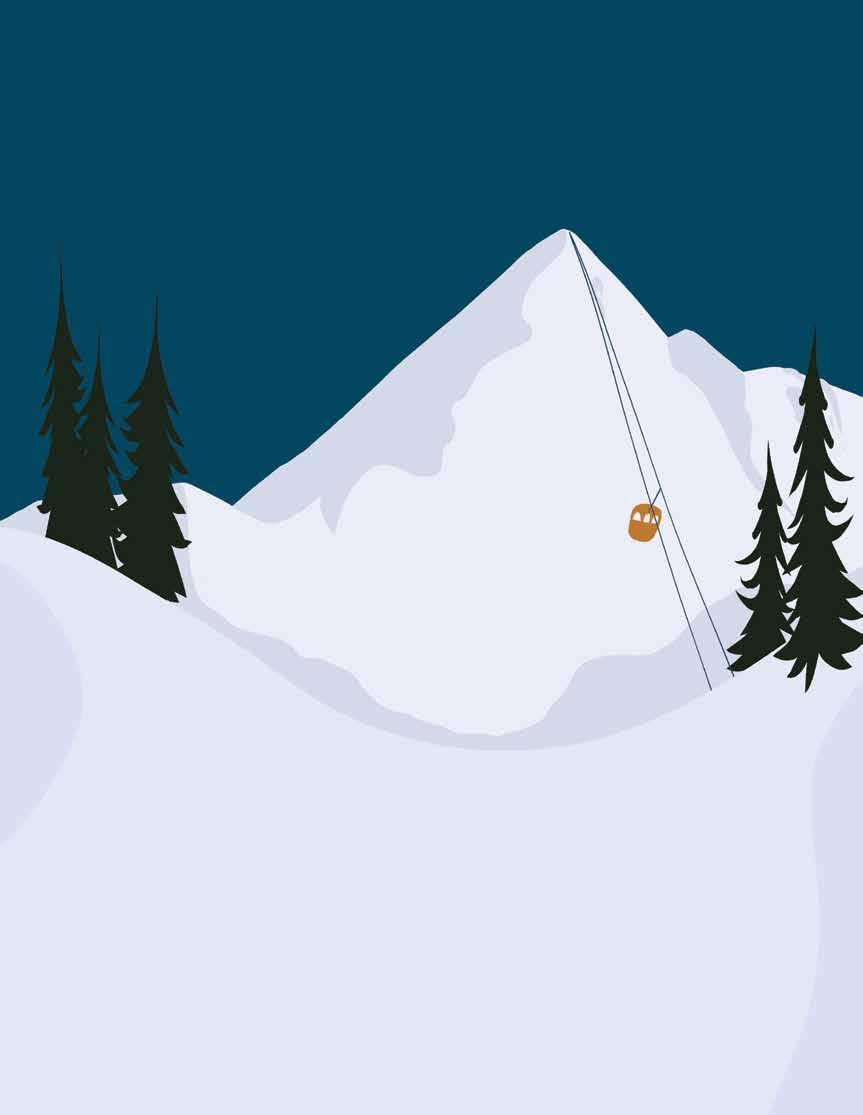

Handmade Montana Snacks Cookies · bars · Jerky YSFOODS.COM Now available order online today!



EST. 1997 bigskybuild.com 406.995.3670 32 Town Center Ave Unit B1 P.O. Box 160117 Big Sky, MT 59716 USA REPRESENTING AND BUILDING FOR OUR CLIENTS SINCE 1997
By Mira Brody
In March 2022, as a part of Women’s History Month, Kris Inman stood in a courtyard at the Smithsonian Institute in Washington, D.C. alongside a life-size, orange statue of herself speaking with visitors. Her statue was one of 120, and a part of #IfThenSheCan—an exhibit that depicted recipients of the American Association of Applied Sciences IFTHEN STEM Ambassadorship.
The statues, stark against the institute’s other displays, represented a strong force that Inman remains passionate about—leading women in STEM fields.
“It was really amazing to see the support that was shown from the public for women in science and STEM,” said Inman. “It was gratifying to be a part of and speak with young girls.”
The Smithsonian named it “the largest collection of statues of women ever assembled together.”
Although today Inman works for the U.S. Fish and Wildlife Service in Alaska, she was a resident of Ennis, Montana, for 20 years where she worked for the Wildlife Conservation Society. In the early 2000s, alongside her husband Bob, she co-led extensive wolverine research. Their findings revealed that open space in southwest Montana is critical to connecting high elevations that wolverine and other species, like bears, rely on to travel through the Greater Yellowstone Ecosystem.

By 2013, she launched the Bear Smart Big Sky Council, which aims to reduce human-bear conflicts and is continuing to educate and empower the Big Sky community to live responsibly in bear country by using bear-resistant trashcans and understanding the importance of bear safety. Although she’s no longer in Montana, Inman remains proud of the work Bear Smart did for Big Sky’s community.
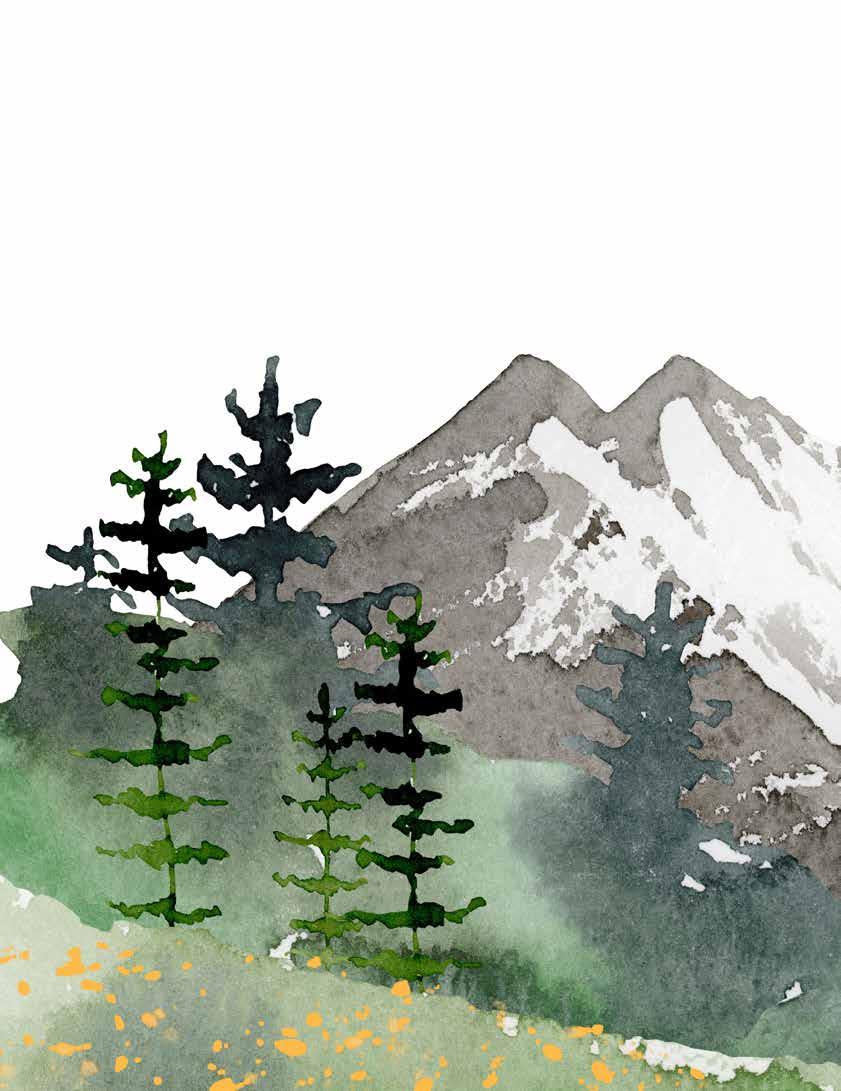
Special Advertisement
Inman with a wolverine while studying wolverine habitats in the Greater Yellowstone Ecosystem.
80 MOUNTAIN MTOUTLAW.COM
PHOTO BY KATHY QUIGLEY, DVM
Today, Inman is continuing her pursuit to empower others in making positive change through her program Women in the Wild. At its epicenter, Women in the Wild encourages young women to join the field of STEM and provides access to role models like them—women—in STEM fields. The effect of Inman’s work is apparent in Big Sky through women like Laney Smith, born and raised here in Montana.
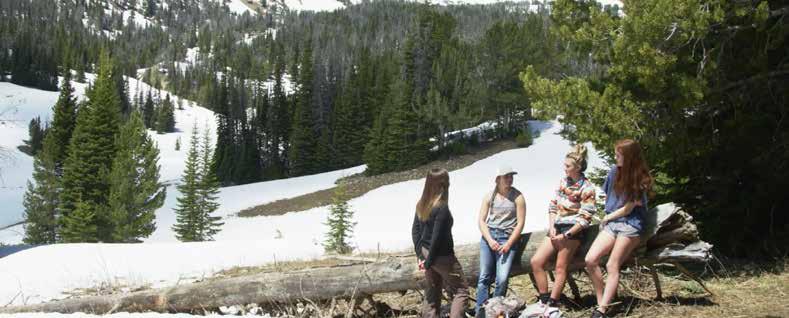
Smith is currently studying community center design with a double minor in math and studio arts at the University of Vermont. The spring before she left for college, she recalls working alongside Inman with a group of other girls to learn more about women in STEM fields and Women in the Wild’s work.
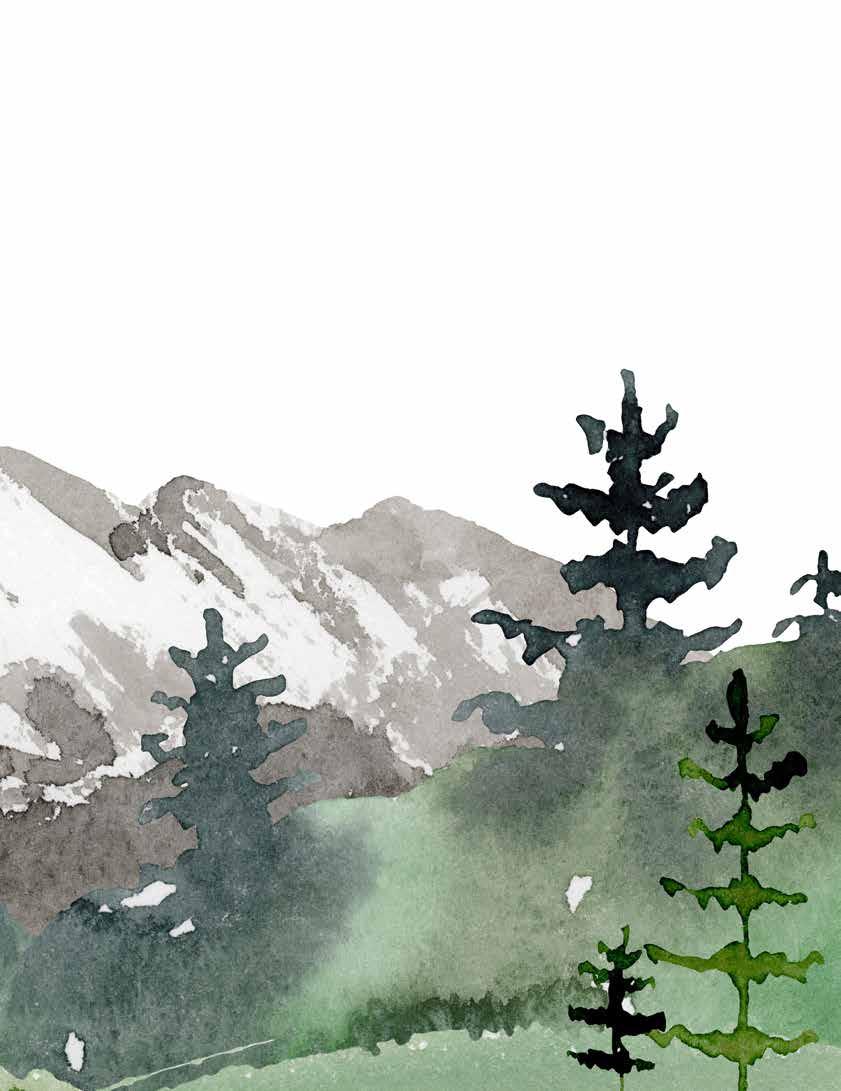
“I thought it was a cool opportunity because not often is there something just for girls that’s centered around empowerment,” Smith said. “I thought it was a great way to spread awareness with wolverines and bears, and show that it’s possible for girls to be a part of those programs.”
Smith says although social media has made it easier to find strong female role models in the STEM industry, it’s sometimes hard to find role models in real life who live and work within communities. Encouraging more women to pursue STEM work not only diversifies the field but offers more representation for those women seeking strong leaders and role models in their lives.
“I feel like when you are young … it’s pretty easy to tell little girls they can do whatever they want, but when they get
older it’s harder, because they don’t see women doing whatever they want,” Smith said.
For Inman, in addition to empowering women, it’s about opening new doors for all. She states that science is a field that benefits from a diverse set of minds; it’s a disservice to everyone when someone doesn’t think that path is open to them.

“I am extremely fortunate to have grown up in supportive environments with mentors, and I see the value of having that support,” Inman said. “It allowed me to have that confidence and to reach for something that I thought might not have been reachable before. I hope to pay that forward for the next generation.”
Today, with the National Wildlife Refuge Team in Alaska, Inman works with colleagues who recognize that conserving these great places will take a new future-oriented approach to conservation, and they are committed to developing and modeling solutions to meet the challenges of this century–conserving our lands, waters and wildlife in a time of unprecedented, profound and rapid human-driven environmental change. At the same time, this work recognizes that people are part of nature and not separate from it– seeing people in this light, we no longer just identify people as the problem but also the solution.
For more information, visit ifthenshecan.org or follow on Instagram @bearsmartbigsky and @kristine_h_inman
Mira Brody is content marketing strategist at Outlaw Partners and producer of Mountain Outlaw magazine.
Inman held a talk with local aspiring STEM researchers in Big Sky, Montana. PHOTO BY SETH DAHL
MOUNTAIN MTOUTLAW.COM
Aspiring veterinarian, Paige Bane, speaks with Inman at the #IfThenSheCan exhibit at the Smithsonian. PHOTO BY KIM SPECTRE



PureWest salutes all of those individuals who have had a BIG IMPACT under the BIG SKY 88 Ousel Falls Road, Suite B The Exchange at Big Sky Resort 406.995.4009 www.BigSkyPureWest.com
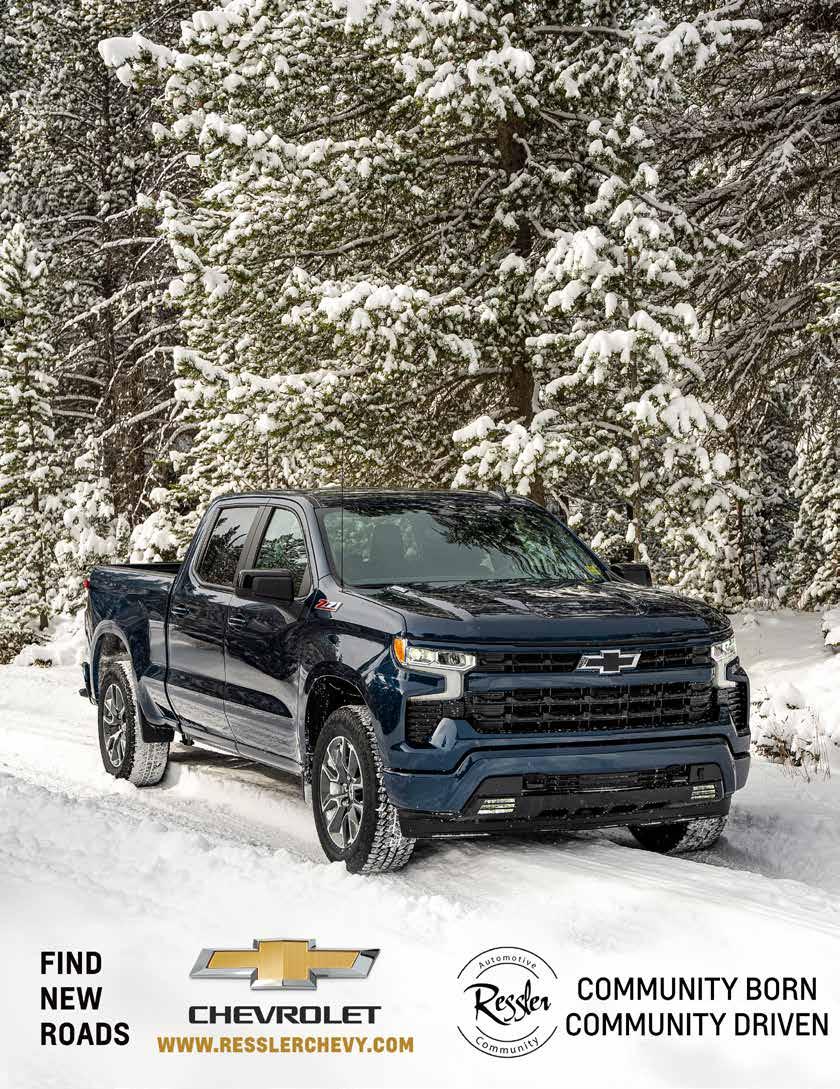
 David Wallace, co-founder of CODA Farm Technologies, shows how the FarmHQ app allows farmers to control farm infrastructure like sprinklers.
David Wallace, co-founder of CODA Farm Technologies, shows how the FarmHQ app allows farmers to control farm infrastructure like sprinklers.
84 MOUNTAIN MTOUTLAW.COM
PHOTO COURTESY OF DAVID WALLACE
The BROTHERS WALLACE
USING TECH TO SIMPLIFY FARM LIFE AND SAVE WATER
BY BAY STEPHENS
Tim Wallace, a potato farmer in Washington’s Skagit Valley, awoke in the heart of a moonlit summer night with a premonition—something was amiss. He climbed out of bed and went out to the truck. Mt. Baker and South Twin towered over the farmland bordering ocean inlets as the truck’s headlights beamed across the fields. Tim drove to an irrigation reel he’d set to run through the night. He pulled the truck to a stop, stepped out and stared.
Where a field should have been, a lake glistened. At some point in the night, a pipe had burst, spewing 300 gallons per minute and flooding at least 10 acres. The mishap meant thousands of dollars of lost crops and—perhaps most heavily weighing on Tim’s mind as he waded through the lake to shut off the pump—the entire next day cleaning up the mess.
Since the advent of modern farm irrigation systems in the 1970s and ’80s, failed pipes and lost crops have dogged farmers in the developed world. The only solution was to watch reels like a hawk, visiting each by truck throughout the day.
An irrigation reel is essentially a giant moving sprinkler connected to the end of a spool of hose. Farmers use tractors to pull the sprinklers and hose out from the spool to the far end of a field, then turn on the water pumps as well as the reels, which slowly retract over several hours, watering a “run” of crops without the farmer’s supervision.
But it doesn’t always work that way. Sometimes the reel comes in dry, meaning the pump shut off before it finished retracting, leaving crops unwatered. In other cases, the timer for the pump mismatches the timing of the reel, so the sprinkler inundates the last stretch of a run. And in the worst
>> 85 MOUNTAIN MTOUTLAW.COM
scenarios, the reel stops in the middle of a run, the pump still running, and completely floods the crop. In any case, the farmer ends up wasting time, effort and fuel.
But a better way now exists. A new technology called FarmHQ developed by Tim’s own sons, David and Connor, signals a potentially crucial shift in how farmers manage their irrigation systems, saving time, stress and untold amounts of water.
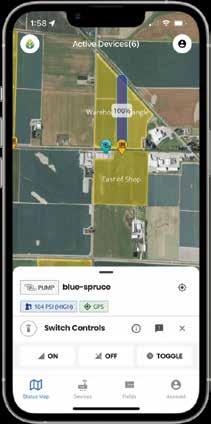
FARMHQ
David, 34, and Connor, 31, have brought irrigation control to the touch of a finger through a surprisingly simple solution. FarmHQ allows farmers to monitor and control their irrigation systems from afar via an app, track water usage and rest assured that a malfunctioning pump or reel will shut off automatically, alerting the farmer.
“FarmHQ is really our attempt to add the smallest amount of technology onto one of these [irrigation] devices that allows a farmer to have all that came with the internet boom,” Connor said.
The module is no bigger than an old brick cell phone. Once mounted and hooked up to a reel or pump, FarmHQ makes decades-old infrastructure part of a state-ofthe-art, cloud-based monitoring and control system. FarmHQ grants the farmer the ability to automate irrigation in myriad ways, to “pair” equipment and to set timers. All this, with no
need to fork out another $50,000 for a new reel.
FarmHQ, by comparison, costs $1,200 up front for the hardware, with an annual fee between $180 and $360 per reel.
The mission of CODA Farm Technologies, the formal name of David and Connor’s business, is to save water, protect crops and make farmers’ lives easier. According to the brothers, the farmers already using FarmHQ remark on the immense peace of mind the technology provides.
“Everything is right there at your fingertips,” said Andrew Albert, a hay farmer in Arlington, Washington, using FarmHQ. “I can look at my phone six times a day instead of doing six field drive-bys.”
Many farmers relish checking the status of their reels from bed in the morning, Connor said. And the technology has made a night-and-day difference in their own father’s work. Installed on all 13 of the Wallace farm’s reels, FarmHQ allows Tim to check the status of each reel without needing to drive out in person.
“Up until I had FarmHQ, I spent my whole summer working on irrigation,” Tim said. “These last two summers, I haven’t touched an irrigation pipe.” Rather than babysitting his irrigation all day and night, Tom now dispatches his crew to any reel or pump that his phone tells him isn’t functioning. “It gives you the confidence that things are working.”
He said he sleeps a lot better, too.
86 MOUNTAIN MTOUTLAW.COM
Farms account for 70 percent of freshwater consumption worldwide, according to the World Bank. And to feed a growing population, some estimates suggest agricultural production must expand 70 percent by 2050. Yet, simultaneously, the World Bank states that in many scenarios, 25-40 percent of water must be reallocated away from agriculture to higher productivity activities, thus leaving farmers with the tall task of creating more food with less water.
Aside from stress reduction and better sleep for farmers, the water savings could be the greatest promise of this technology. Against the backdrop of a warming global climate, wise water management in agriculture is essential.
“Water is becoming an incredibly scarce resource and we need to use it much more judiciously,” David said. “The biggest place we can make an impact is on farms.”
Farms account for 70 percent of freshwater consumption worldwide, according to the World Bank. And to feed a growing population, some estimates suggest agricultural production must expand 70 percent by 2050. Yet, simultaneously, the World Bank states that in many scenarios, 25-40 percent of water must be reallocated away from agriculture to higher productivity activities, thus leaving farmers with the tall task of creating more food with less water.
“I think that water scarcity is going to force huge changes to the entire food supply chain and, unfortunately, farmers are among the first to be confronted with this reality in areas with persistent drought,” David said.
The decreasing availability of water in the Colorado River—along with overallocation of the river in the 1920s— has put all who rely on “the lifeline of the West” in a tight spot. Farmers who rely on the embattled river for irrigation can’t afford flooding fields due to burst pipes. Neither can anyone else depending on the Colorado.
“If you can make a substantial impact in water consumption, you can pretty dramatically change how much water we have access to across the world,” David said. CODA esti-
mates that a FarmHQ system installed on a single irrigation reel saves, on average, around 500,000 gallons of water over the course of a season. That’s about an 8 percent reduction of water use.
An analysis conducted internally found that just having the AutoStop feature enabled on FarmHQ-equipped reels saves 120,000 gallons of water per system in an average season.
While FarmHQ gives farmers an edge in water efficiency, David doesn’t pretend it’s a silver bullet for those who need to make drastic cuts to their water use. Rather, “automation systems like FarmHQ should be looked at as a key piece of a comprehensive strategy for water efficiency on farms,” David said.
FARM KID S
It’s safe to say that CODA Farm Technologies and FarmHQ wouldn’t exist without the Wallace farm and its encompassing role in the Wallace brothers’ lives.
In the early 1900s, the first Wallaces emigrated from Northern Ireland to the Skagit Valley, which possessed a climate similar to their homeland. David and Connor represent the fourth generation to live on the farm.
On account of living far apart from neighbors, the many farmers in Skagit Valley didn’t exactly constitute a cohesive community, according to David. For much of their upbringing, social life consisted of homeschool with their mother, interactions around the farm with their grandparents, uncles,
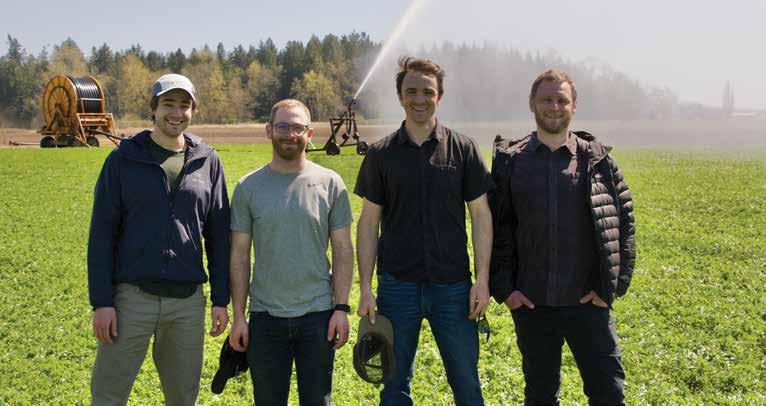
THE STAKES
>> 87 MOUNTAIN MTOUTLAW.COM
The CODA Farm Technologies core team of family and close friends. From left to right, Connor Wallace (Chief Technical Officer), Gabe Martin (Lead Hardware Engineer), David Wallace (CEO), and Dan Oschrin (Lead Software Engineer). PHOTO COURTESY OF DAVID WALLACE
“Up until I had FarmHQ, I spent my whole summer working on irrigation. These last two summers, I haven’t touched an irrigation pipe.” - Tim Wallace
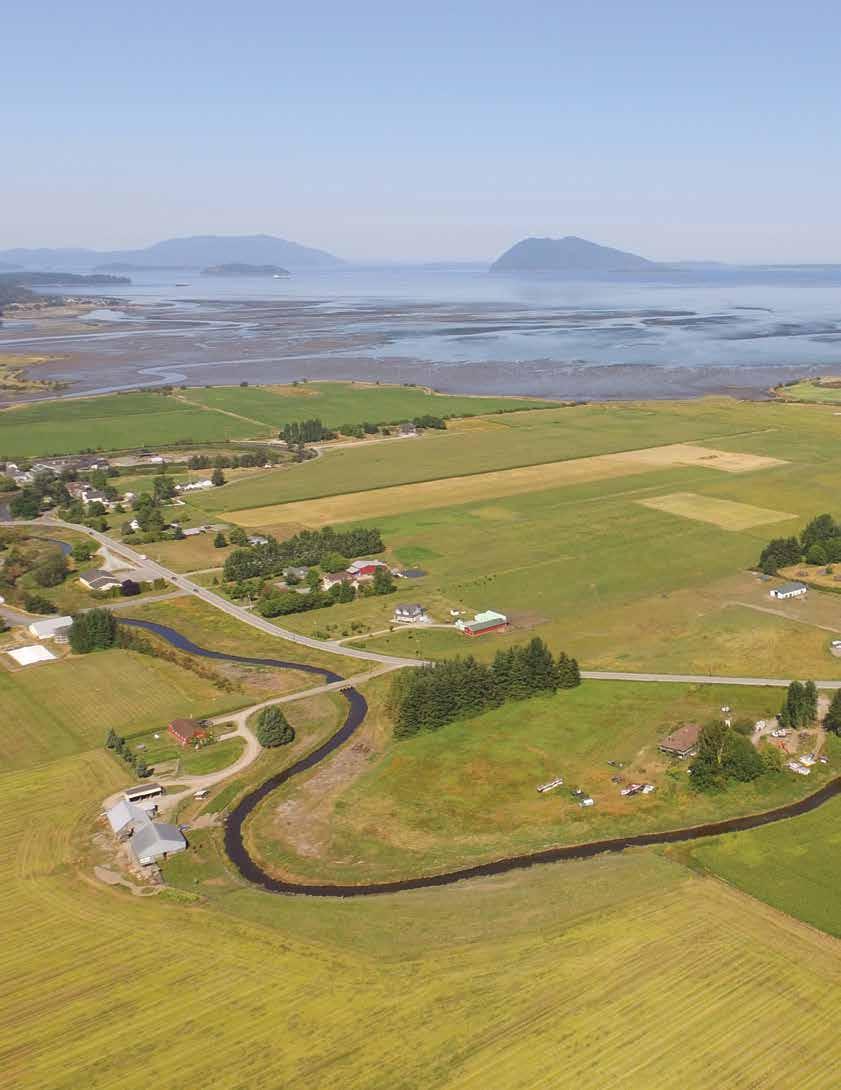
88 MOUNTAIN MTOUTLAW.COM
The Wallace Farm in the Skagit Valley lies between the foothills of the Cascade Mountains and the tidal flats of the Samish Bay. PHOTO COURTESY OF DAVID WALLACE
cousins, and, of course, a lot of time spent with each other. As they put it, they made their own fun.
The pair wrestled in freshly tilled dirt outside the house and built jumps for bicycles and their Honda 50 dirt bikes. They used a dike near the Samish River as a motocross jump, launching off it until the erosion threatened to let the river back into their fields. They also built countless computers with their cousin, Luke.
“When you grow up in the middle of a 100-acre field with no neighbors around, you’re definitely going to have a different experience than a kid who grows up in a tightly knit suburban community,” David said.
But the farm and their father’s role in it held endless fascination for the two.
“We were constantly around awesome things like big tractors, large machinery, and my dad and grandparents had these cool blue coveralls,” David said. “I just wanted to be involved in that.”
The brothers participated as soon as they possibly could, doing the punishing work of picking berries as 10-year-olds, then learning to drive the tractor at 12. The two learned how to operate the multivator that attached to the tractor to rototill between rows of potatoes, how to “ted” hay so it dried after being cut, and how to buck hay bales into a neat stack for storage or transport. Both loved the sense of fulfillment that came with contributing to the family enterprise.
But they also needed education, which fell more or less to their mother, Beth. Trained as an anthropologist, and faced with the prospect of a far more traditional role than she ever imagined for herself, Beth decided to make her family her tribe of study. And what better experiment than the education of her two children?
The concept of “unschooling” or “world schooling” intrigued Beth, who described the approach as “the idea that one didn’t need to be in school to be educated.”
Beth tinkered with different approaches to educating David and Connor, some of which she admits worked better than others. At the least, she ensured they grasped core skills like math, science, writing and critical thinking. But she also viewed everyday living—such as cooking meals, or interacting with adults on the farm—as part of their education.
“Typically, we only spent two hours a day sitting at a table doing formal schoolwork, which left a lot of time, a lot of freedom, for them to work on whatever they were working on at the time,” Beth said.
For the brothers, learning served as a means to solving problems and sating their curiosity. For instance, David used the trigonometric functions of sine, cosine and tangent to help him build skateboard ramps. Connor taught himself to write before his mom got the chance so he could record the moves necessary to beat the videogame Zelda.
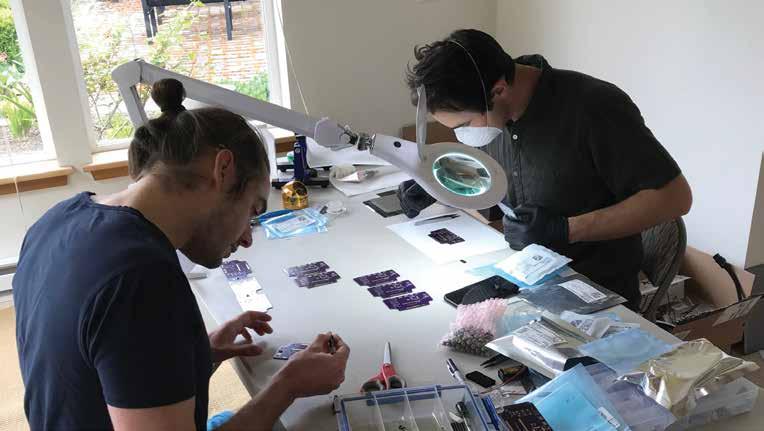
>> 89 MOUNTAIN MTOUTLAW.COM
Connor and David Wallace—who built computers together as kids—building circuit boards for their FarmHQ modules. PHOTO COURTESY OF DAVID WALLACE
Both brothers recognize the key role their mom played in fostering their curiosity and maintaining high expectations.
“Raising two kids in the middle of a field and making the decision to homeschool them is very brave,” David said. “My hat is off to her for consistently getting us to do our homework.”
Thanks to their self-directed education, they developed an intrinsic love for problem solving and overcoming challenges, which they carried through public school when they enrolled in ninth grade for David and sixth grade for Connor.
After high school, the brothers’ passion for challenge led them into advanced technical degrees. David earned a degree in chemistry from Whitman College, followed by a PhD in solid-state chemistry from Johns Hopkins University. Connor studied physics at Reed College in Portland, Oregon, before going on to work as a full-stack software engineer at multiple tech companies along the West Coast.
After taking one of the few data science bootcamps available at the time, David landed a job as a senior data scientist in Seattle at Amazon.com in 2016, where he remained fulltime until the farm pulled him back.
THE ROAD TO FARM TECHNOPRENEURSHIP
While both David and Connor had worked summers throughout college at the farm, their professional careers afforded little time to lend a hand in the fields. After two years at Amazon, David’s work began to feel short on meaning, so in the fall of 2018, he dropped to a 20-percent schedule and fell right back into farm work alongside his dad and uncles.
While farm work held its own satisfaction, David craved a problem he could solve with a bit of software and electronics. He asked his dad and uncle what would be most helpful.
“If you could find a way to shut off the water when a reel is done running, that would save crop damage and time,” they told him.

David assumed he could just buy a product already on the market, but couldn’t find anything.
“I was calling retailers who sell hose reels, and they were like, ‘If you find something good, let us know,’” David said.
Despite no background in electrical engineering, he threw together 10 bulky prototypes equipped with only one sensor that detected when a reel stopped moving and sent a
90 MOUNTAIN MTOUTLAW.COM
An irrigation reel on the Wallace Farm now connected to the FarmHQ cloud allows Tim Wallace to monitor its progress from his phone and shut it off remotely. PHOTO COURTESY OF DAVID WALLACE
signal to the water pump to shut it down before a field was doused to death. Even this basic rendition proved invaluable to the Wallace operation.
David wondered if other farmers might find the device useful. To gauge interest, he presented the idea at a local potato farmers workshop, offering to install the sensors at cost for anyone interested. Six farmers raised their hands; he had 48 devices to build.
“That’s when we were like, ‘Dang, we’re going to have to actually do this now,’” David said.
While Connor and a few of their friends had been involved on a hobby basis, David needed more help. Serendipitously, the company where Connor had been developing autonomous trucking software was acquired by Nuro, the autonomous delivery company, giving him a convenient step-off point to join David. And more help was coming.
“Our friends wouldn’t stop bugging us about joining in,” Connor laughed. Hence, CODA had its first two hires.
They redesigned FarmHQ to be more elegant, compact, durable and user friendly, then did a second pilot release. Rave reviews returned. FarmHQ was a game
changer for farmers in the pilot. The brothers sought venture capital funding.
Incorporated in March 2020—and fully remote from Day 1 on account of the pandemic—CODA Farm Technologies continues to grow as more farmers catch wind of FarmHQ.

CODA’s core of family and friends means strong bonds of trust, especially between the brothers.
“[Connor] as a cofounder is really the one person I can talk to about any aspect of the business … without worry that that might change his perception of how successful we might be,” David said. “He’s truly in it with me 100 percent.”
Connor echoes the sentiment, estimating the two of them talk via phone for a half hour each day.
For two kids who loved computers and always wanted to help their dad on the farm, CODA and FarmHQ is the manifestation of a long-held, yet unarticulated, dream. Shaped by the farm itself, and empowered by their mother’s presence throughout childhood, Connor and David have put their own unique spin on “helping out on the farm.”
Bay Stephens is a former Outlaw staff writer and editor. He currently lives in Colorado where he works as a ski patroller for Beaver Creek Ski Resort.
Conner Wallace coding in a farm field.
PHOTO BY
91 MOUNTAIN MTOUTLAW.COM
Connor Wallace uses his background as a full-stack software engineer to finetune how FarmHQ communicates with and controls an irrigation reel in the field. PHOTO COURTESY OF DAVID WALLACE
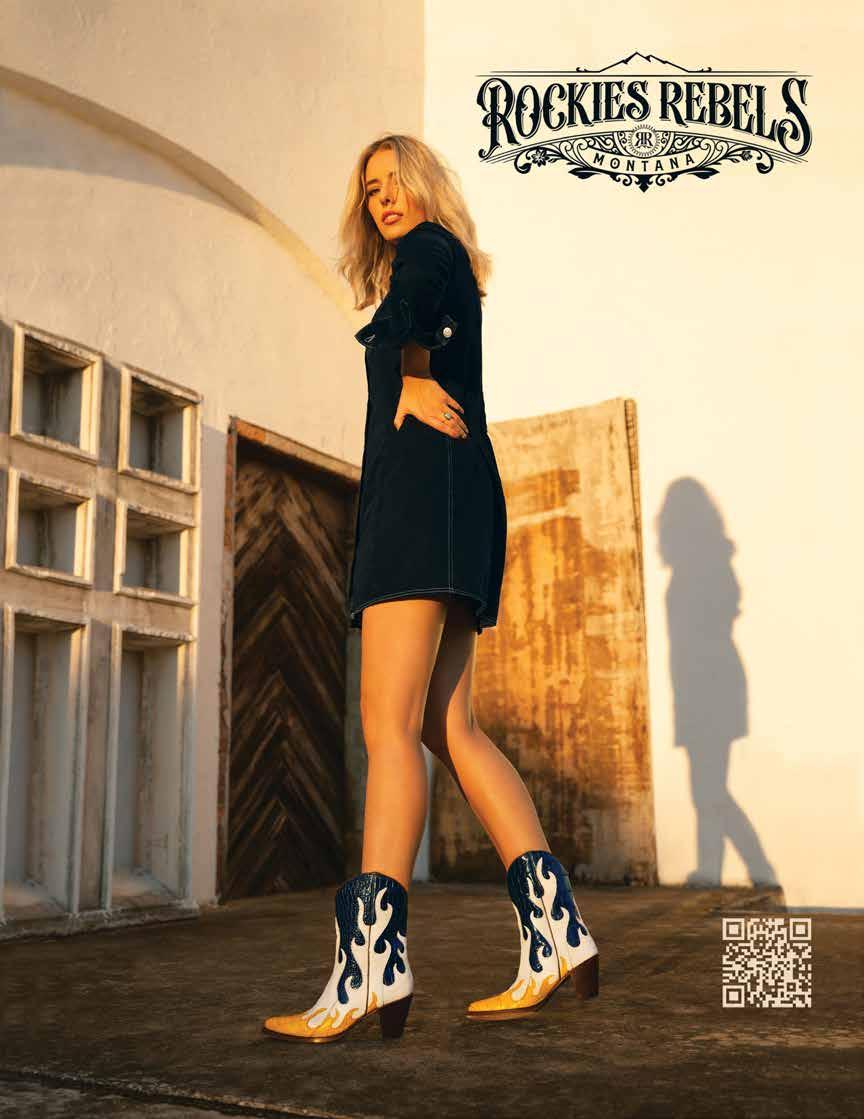

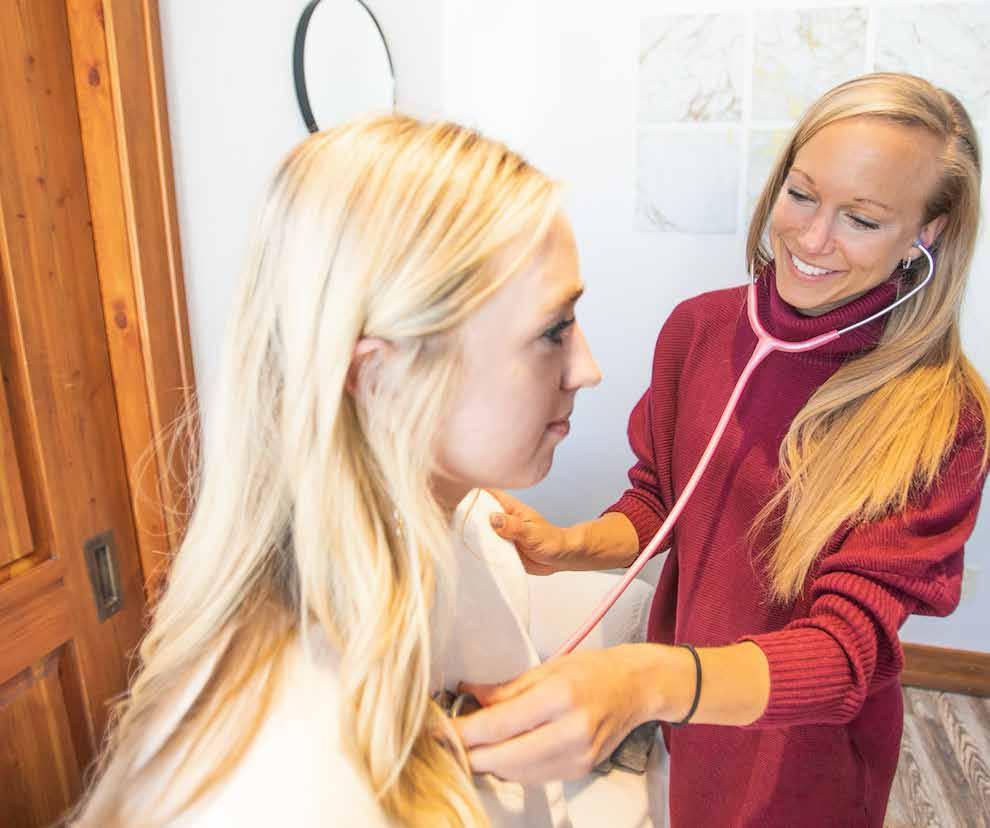

406.993.6949 | bigskynaturalhealthmt.com | 87 Lone Peak Dr, Big Sky, MT Owned and operated by Dr. Kaley Burns, ND WHAT’S MORE IMPORTANT THAN YOUR HEALTH? BIG SKY’S ONLY NATUROPATHIC DOCTOR AND TEAM SPECIALIZING IN: Schedule your appointment now Family Medicine Nutritional Counseling Acupuncture Regenerative Medicine IV Nutrient Therapy Cryo therapy & Hyperbaric Chamber
TWO INDUSTRY MOGULS CULMINATE THEIR CAREERS INTO THE BEST SKI YET
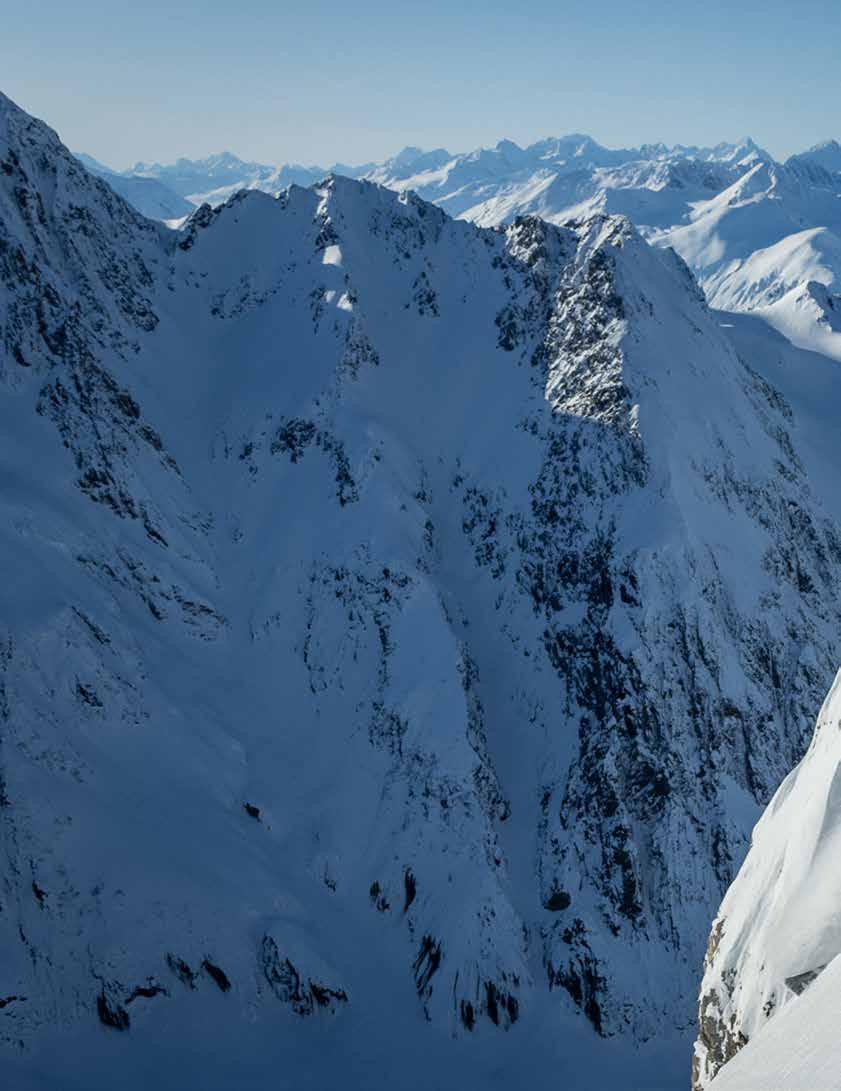 BY MIRA BRODY
Bode Miller, the most successful male ski racer of all time, has taken on a new endeavor in Bozeman, Montana—a ski engineered for everyday fun on the mountain. PHOTO COURTESY OF PEAK SKI COMPANY
BY MIRA BRODY
Bode Miller, the most successful male ski racer of all time, has taken on a new endeavor in Bozeman, Montana—a ski engineered for everyday fun on the mountain. PHOTO COURTESY OF PEAK SKI COMPANY
94 MOUNTAIN MTOUTLAW.COM
Despite a career where seconds hold significant weight, Bode Miller has always honored the long game. With that in mind, an anecdotalist might say that Miller’s Peak Ski Company began on Comp Hill at Sugarloaf Mountain when he was 18 years old after he took his first turns on a pair of K2 Fours, an unridden shape ski he helped engineer. After completing the run, Miller—who on those same skis, would win the Junior Olympics in giant slalom by 2.3 seconds and super-G by 2.7 seconds— grinned at his coach.
“I thought, ‘I am gonna crush people with these skis,’” Miller said, recalling that run 27 years later. Back then, after bandsawing his snowboard in half to quell his craving for edge, the young alpine ski racer pushed for the development of the Fours in an era when shape skis, defined by their hourglass figure, were a foreign concept. The moment he felt the skis’ sidecut grab the course that day in western Maine, he knew it would be pivotal for the industry. This innovation is an ethos that Miller, today the most successful U.S. Alpine male ski racer of all time, has brought to Peak alongside resort mogul and Peak CEO Andy Wirth. Bonded by their commitment issues with retirement and their deep knowledge and passion for the ski industry, the co-founders launched the Bozeman-based company in spring of 2021, promising a direct-to-consumer product that would “make skiing fun again.”
“It felt really natural to do something that advanced the sport, that maybe brought more people to it, that changed the way people experienced skiing,” Miller said. “The industry as a whole has been a bit stagnant in my opinion, so Peak was a tool, sort of a mechanism, to move the sport forward.”
Much like Miller has earned success taking podiums (79), collecting World Cup titles (six), World Championship titles (four) and Olympic medals (six) before retiring in 2017 to raise his children in Montana, Wirth too has culminated a storied 30 years in the resort industry and just as long volunteering for beloved causes. He’s been on the leadership teams of Palisades Tahoe and Steamboat Resort; was a ranger for Rocky Mountain National Park and San Pedro Parks Wilderness Area; a Wildlands Hotshot crew member; a licensed skydiver (a hobby that nearly lost him his right arm and life in 2013); served on a number of nonprofit boards spanning work in conservation, sports clubs and
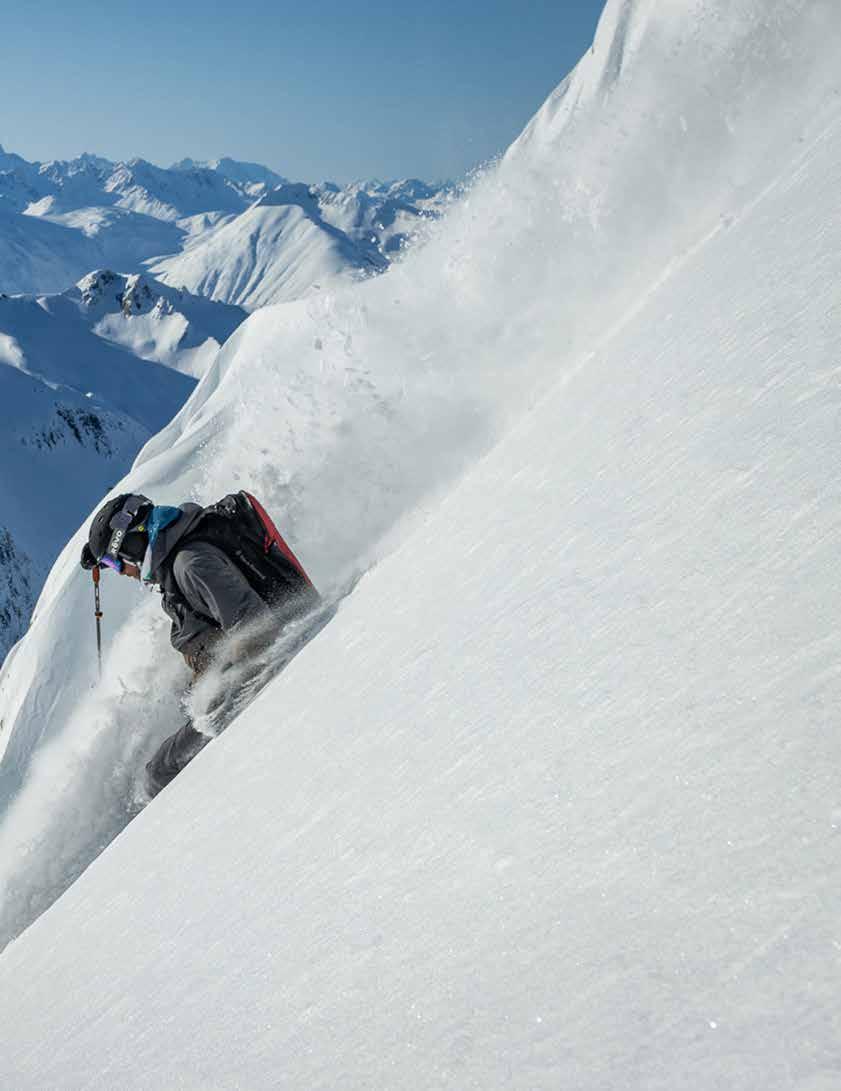
>>
95 MOUNTAIN MTOUTLAW.COM
Driven to change what he calls a “stagnant” industry, Miller says it felt natural to progress the sport that has impacted his life so much.
BY FREDRIK MARMSATER
tourism management; and today focuses on the active support of combat veterans.
The two met in 2010 around the time when Wirth, then-president and CEO at Palisades Tahoe, was vying for a Sierra Nevada-backdropped Olympics. As their friendship grew, so did their vision for Peak Skis. Wirth, a cowboy with a penchant for ranchmen’s metaphors, says his hope was to “take the halter and the bridle off” of Miller and establish a venue in which the athlete could craft the culmination of his career into a new legacy: a product that would allow everyone to enjoy their favorite mountain in the best possible way.
“It’s one thing to take this brilliance that he has and move it into the ski; it’s another to build a sustainable company around it, and that’s really where I think we complement each other,” Wirth said. “My background allows me to develop a credible business plan that enables what is in his mind in unfettered fashion that is purpose built.”
With these self-described “contrarians” at the helm, Peak has partnered with Slovenian ski manufacturer Elan and assembled an executive team of both great minds and athleticism, including big mountain skiers Michelle Parker and Chris Davenport. Additionally, Peak has adopted a Six Sigma-inspired prototyping methodology that allows its team to slowly eliminate imperfections in each ski model in the company’s quiver, a concept Marc Peruzzi, Peak’s VP of product and content development, is intimately familiar with.
“When you’re a magazine editor … and a contributing writer for so many years, you learn to self-edit and self-editing is everything,” Peruzzi said. “When you’re writing, you make your own drafts until it’s correct. You just have to have this undying attention to detail to find errors and that translates directly to prototyping and designing skis. It’s just like working on a draft of a longer story, you just keep revising it until it’s ready for the consumer.”
Peruzzi’s journalism career at University of Montana and with Outside, Ski and Mountain magazines was modestly preceded by a childhood spent waxing skis in his garage for neighbors and working in his mother’s ski shop in southern Massachusetts where he grew up. He stocked shelves with the fated K2 Fours and has since built a career around testing skis (around 200 over 20 years) and the precise elements that come with each turn on the mountain. Today you’ll find him in Peak’s Development and Innovation Center in Bozeman, translating this experience into the latest revisions toward perfection.
If dropping into Comp Hill on the world’s first shape ski in 1995 was a brick laid in Peak’s early foundation, another would be a run Miller took on a pair of Rossignol GS skis just a year after taking home gold in the 2002 Salt Lake City Olympics. A factory worker had glued the damping plate under the skis, creating a “hole,” adding an inflection point at the tip. This allowed Miller to stay in a tuck and carve gently on flatter sections of the course, shaving seconds off his run—a lifetime for a ski racer.

Peak took this fluke and engineered it into a focal concept made ready for the consumer market called KeyHole Technology. While the level of precision KeyHole provides translates to more wins for competing athletes and fewer injuries, for the recreational skier, explains Miller, it means a little bit more fun.
“A funny thing is that most people think of Bode Miller as this extreme downhill athlete, and he was, but he actually skied on skis that were really easy to ski on,” Peruzzi said. “That was his
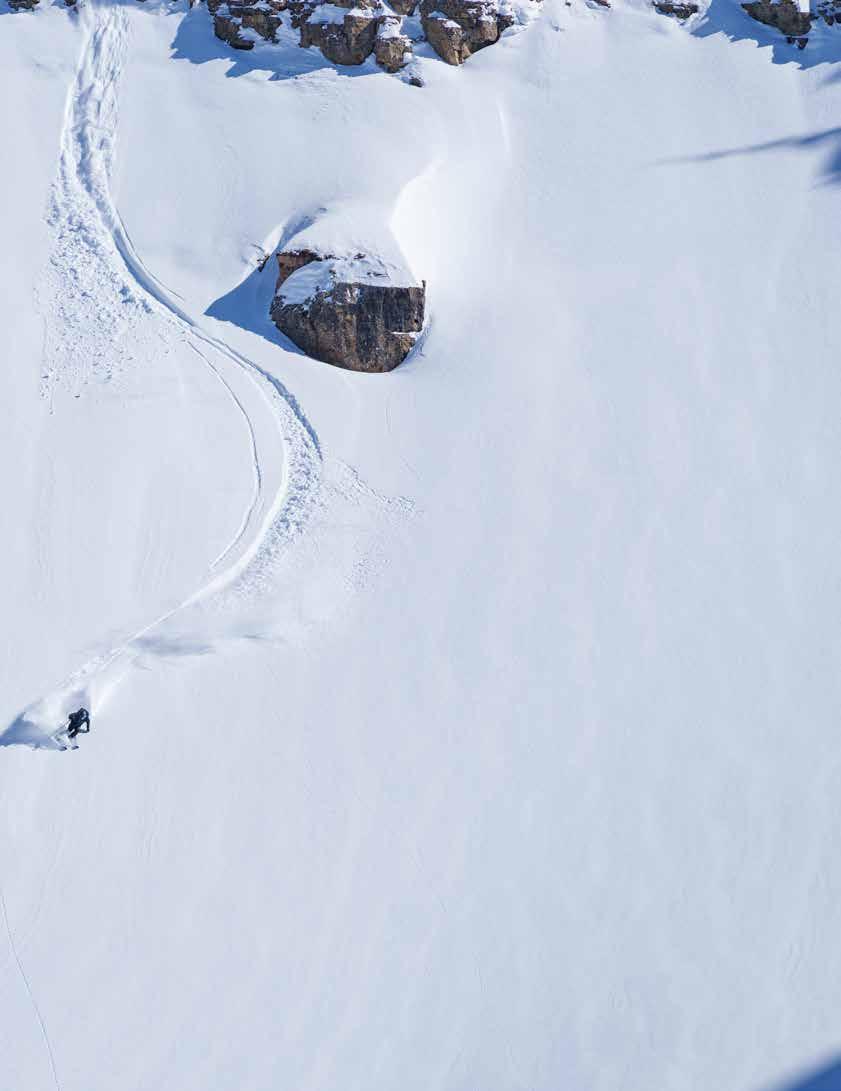 PHOTO
PHOTO
96 MOUNTAIN MTOUTLAW.COM
entire mission was to produce skis that were forgiving and let him be an athlete as opposed to riding a ski. And everything that applies to a World Cup ski racer can kind of be tweaked for your everyday consumer.”

In 2009, Miller quit the U.S. Ski Team, passing along his Rossignols to fellow World Cup and Olympic racer Lindsey Vonn. Although an uninspiring part of his own career, he recalls how exciting it was to watch Vonn have fun—and excel—on his old skis.
“It just kind of reminded me it’s just fun,” Miller said. “It’s rewarding even if it’s not known when you’re doing it and it’s fun to watch people do things they didn’t think they could do.”
Surrounded by the serrated horizon of several mountain ranges, Peak's showroom is in the Four Corners area west of Bozeman in the corridor between Bozeman and Big Sky. Inside, behind the displays of skis and other Peak-branded products, there’s a mural of a stark, snowy peak with a bolt of

react nimbly to feedback.
In Peak’s offices adjacent to the showroom, you’ll also find the brains behind the operation. Wirth is often running from one meeting to the next, shaking hands and chatting about his partnership projects with local nonprofits, his children or his next big idea, spurs still chiming on his mud-specked cowboy boots from a morning ride on his horse, Alto Cinco. On the wall across from his desk hangs a tapestry that reads: “We are not here to do what has already been done.”
Miller appears most comfortable with a ski or two in his hands, eyes running over its edges with the vision of both an artist and engineer. In vivid memory, he recounts his 8-yearold self planted in front of the TV watching a VHS recording of his heroes, Steve and Phil Mahre, and Bill Johnson. He wondered how they got to ski so well. They were doing what they loved, his grandmother reminded him, and had worked that passion into a career despite having no promise that it
lightning piercing the sky, somewhat of a symbolic anomaly, Wirth explained, representing the rarity of Miller’s talent as a ski racer.
“Grit is that somewhat amorphous, enigmatic trait that drives us … into the headwinds in the business environment and has us not yielding,” Wirth said. “If you look at Bode’s career, there’s quite a bit of that expressed in so many forms.”
There’s something else deliberately unique about the existence of the showroom itself. Peak is a direct-to-consumer company, another against-the-grain decision by a team devoted to shaking things up. Miller says most ski brands are “stuck,” bound to narrow margins, inventory needs and graphic trends instead of innovation. By communicating directly with its manufacturer and its customers, Peak is able to
might turn into one.
“The reality is that they had to go through a long period where no one knew if they were going to be good enough,” Miller said. “Ultimately they stayed with it and they were able to discover a gift.”
From snowmobiling and hitchhiking his way to Carrabassett Valley Academy in Maine’s sub-zero winter temperatures, to standing on podiums, and today engineering the next great leap in the ski industry, Miller spent decades pursuing his own gift, all built around a drive to do better— and a love for skiing.
Mira Brody is content marketing strategist at Outlaw Partners and the p\roducer of Mountain Outlaw.
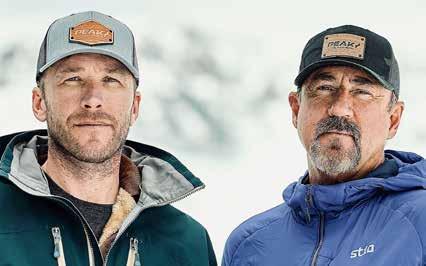
“It felt really natural to do something that advanced the sport, that maybe brought more people to it, that changed the way people experienced skiing. The industry as a whole has been a bit stagnant in my opinion, so Peak was a tool, sort of a mechanism, to move the sport forward.” – Bode Miller
Each ski model is prototyped extensively, eliminating errors and driving as close to perfection as possible. PHOTO BY FREDRIK MARMSATER
Bode Miller (left) and Andy Wirth (right) balance each other out with decades of ski racing and industry business knowledge. On the foundation of friendship, the two “contrarians” founded Peak Ski Company in 2021. PHOTO COURTESY OF PEAK SKI COMPANY
97 MOUNTAIN MTOUTLAW.COM
Gina Marshall Private Wealth Mortgage office: 406.522.3293 cell: 406.600.8699 gina.marshall@usbank.com NMLS # 489006 privatewealth.usbank.com

Get started today. Contact your Private Wealth Mortgage Banker to find out more about residential mortgage options.
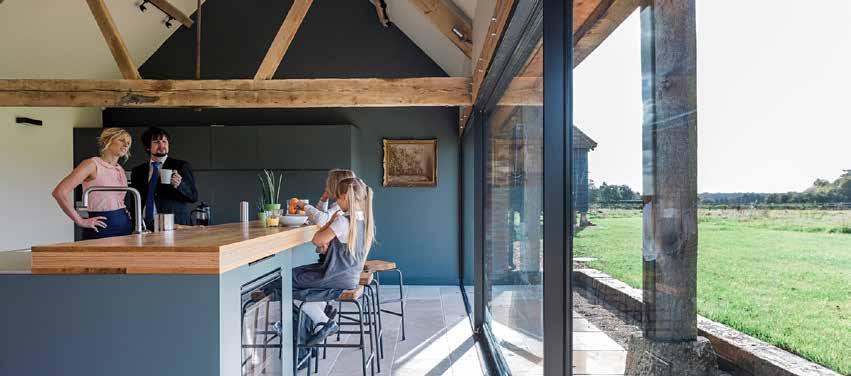


Loan approval is subject to credit approval and program guidelines. Not all loan programs are available in all states for all loan amounts. Interest rates and program terms are subject to change without notice. Visit usbank.com to learn more about U.S. Bank products and services. Mortgage, home equity and credit products are offered by U.S. Bank National Association. Deposit products are offered by U.S. Bank National Association. Member FDIC. ©2022 U.S. Bank MTOUTLAW.COM











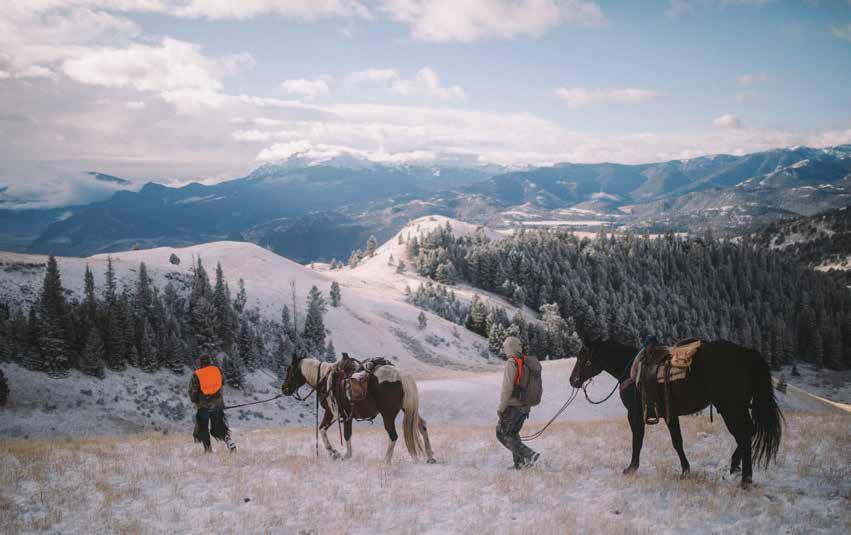




POLLYANNA SNYDER | BROKER BIG SKY COUNTRY SPACE...THE FINAL FRONTIER.
406.600.2477 pollyanna.snyder@evrealestate.com BozemanRealEstateMT.com
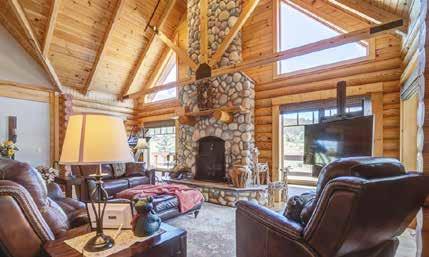

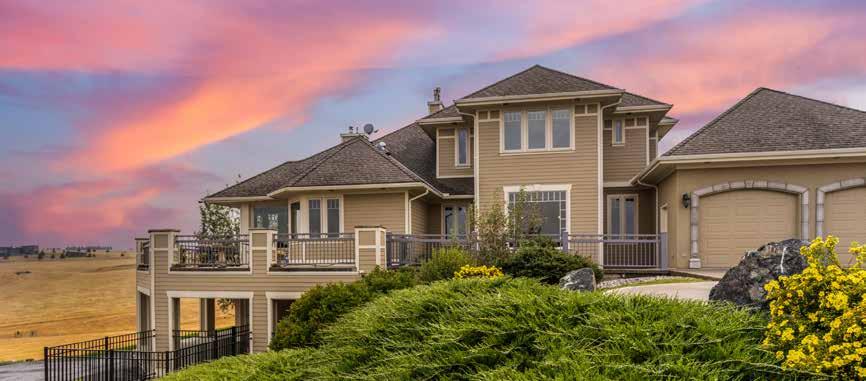
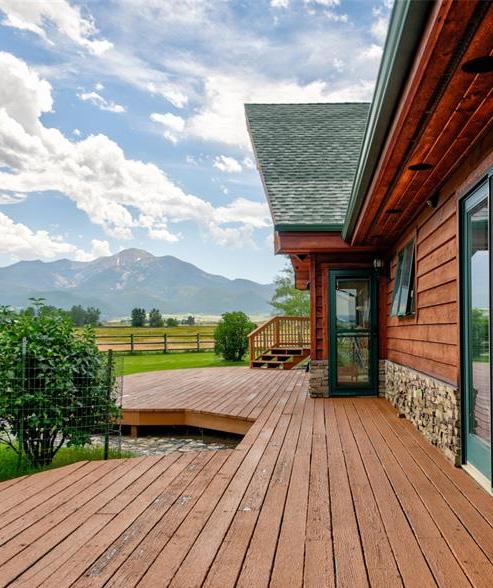


eralandmark.com Robyn Erlenbush, CRB, Broker/Owner. Each office independently owned and operated. 4 BEDS | 6.5 BATHS | 23 ACRES | BOZEMAN | $4,500,000 MLS# 376932 | Carissa Paulson 406-539-3285 3 BEDS | 3 BATHS | 33 ACRES | ENNIS | $1,449,000 MLS# 366926 | Toni Bowen 406-570-9233 3 BEDS | 3.5 BATHS | 20.5 ACRES | LIVINGSTON | $2,500,000 MLS# 374035 | Jon Ellen Snyder 406-223-8700 Bozeman, Big Sky, Livingston & Ennis, Montana 4 BEDS | 3.5 BATHS | 2.5 ACRES | BIG SKY | $2,479,000 MLS# 374773 | Dan Delzer 406-580-4326 Specializing in making Montana dreams come true since 1976. Ready to follow your dream? MOUNTAIN


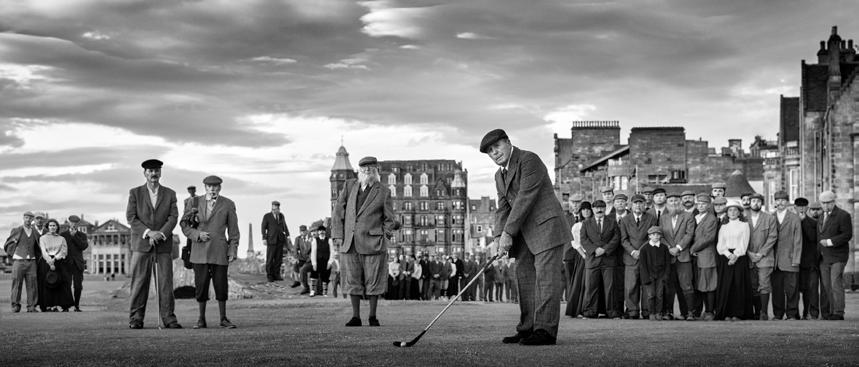
DAVID YARROW “The Home of Golf” Large Size Framed 59 x 118 Standard Size Framed 45 x 84 PHOTOGRAPH YARROW 32 Town Center Avenue | Big Sky, Montana | 406.581.3092 | courtneycollinsfineart.com
‘ YEAR OF THE
BOBCAT ’
Montana State University leadership garners national accolades for school
BY JASON BACAJ
y just about any measure—enrollment, donations, research expenditures, athletics—Montana State University has been the premiere postsecondary school in Montana for the last several years. This past fall saw MSU as the only higher education institution in the state with an enrollment over 16,000. In August 2021, the school received a $101 million donation to expand its nursing program. And last year, tremendous athletic success on a national scale will mark that period in history as the “Year of the Bobcat,” as President Waded Cruzado calls it.
The football team reached the Football Championship Subdivision national title game for the first time in 37 years with a team that saw four players go on to make NFL rosters. The women’s rodeo team
won the College National Finals Rodeo. The crosscountry team achieved its first national ranking in 17 years, as did the men’s tennis team. Both the men’s and women’s basketball teams reached the NCAA tournament and the ski team had multiple athletes garner All-American accolades. Plus, the school’s athletics facilities improved across the board. All of those accomplishments can be traced back to the university’s leadership: President Cruzado, whose tenure began in 2010, and Athletic Director Leon Costello, hired in 2016.
Mountain Outlaw sat down with both leaders to learn more about the challenges and highlights they’ve witnessed in recent years and what the future may hold for the university.
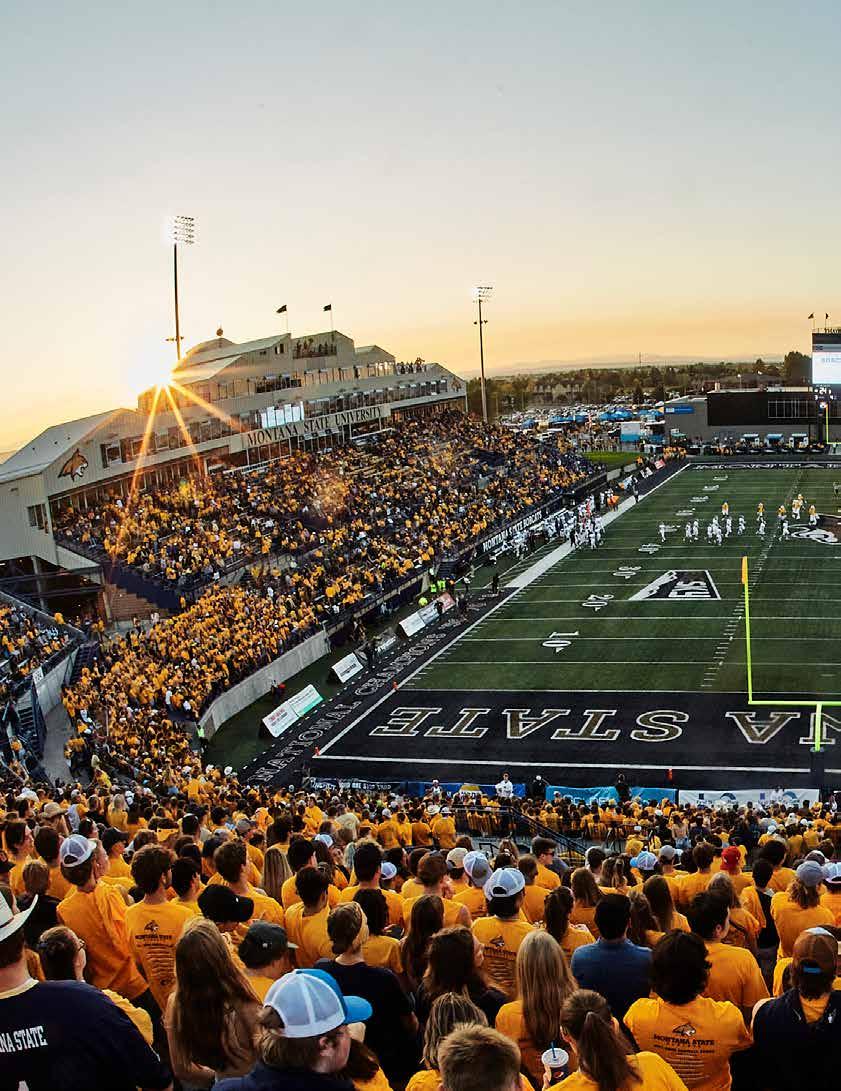 The Montana State Bobcats face off against the Drake Bulldogs in an NCAA college football game at Bobcat Stadium in Bozeman in September 2021. PHOTO BY ADRIAN SANCHEZ-GONZALEZ
The Montana State Bobcats face off against the Drake Bulldogs in an NCAA college football game at Bobcat Stadium in Bozeman in September 2021. PHOTO BY ADRIAN SANCHEZ-GONZALEZ
>> 102 MOUNTAIN MTOUTLAW.COM
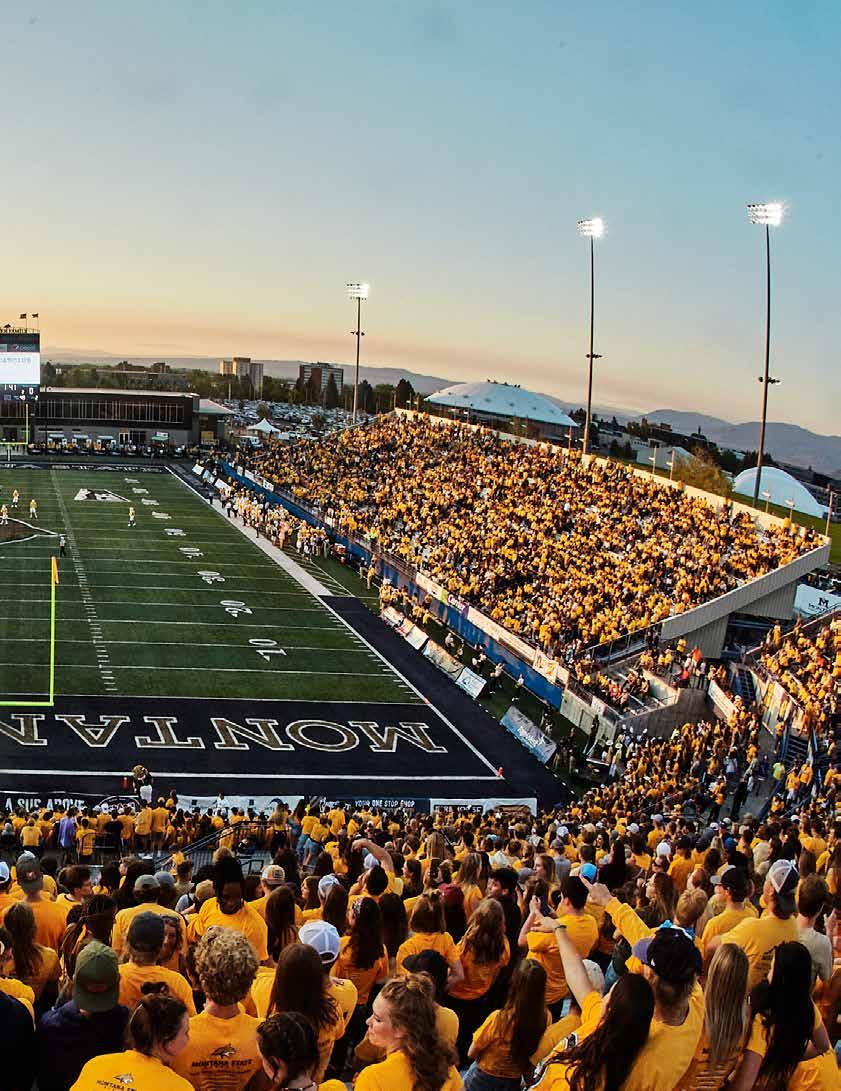
103 MOUNTAIN MTOUTLAW.COM
MOUNTAIN OUTLAW :
What have been the highlights of 2022 for the Montana State Athletic Department so far? Obviously, playing in Frisco, Texas for the Football Championship Subdivision national title in January got things started off on a high note.
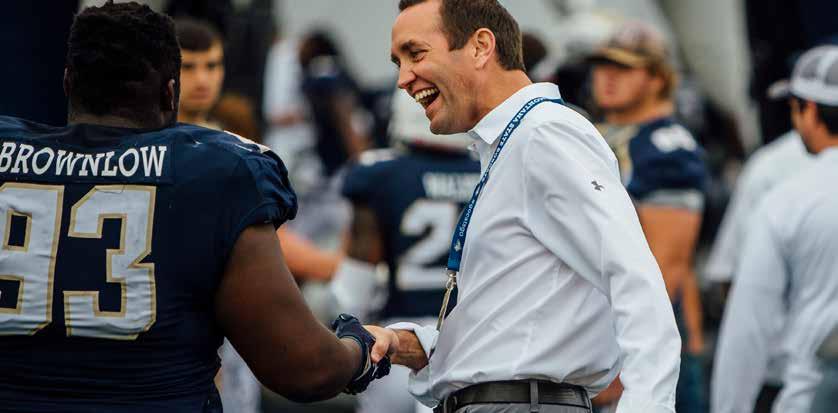
LEON COSTELLO : I still remember being on the bus and seeing all the people in that tailgate area (outside Toyota Stadium) when we turned the corner. The work of so many people goes into making that happen, making it a reality and to see it come to fruition is pretty special.
All that led into great things in the winter with men’s and women’s basketball, the ski programs, indoor track and field. Right into spring with outdoor track and field, men’s tennis. Looking back, it’s a sense of pride. And so where my mind goes right now is, man, how do we do that again? Because it was a lot of fun.
M.O.: I’m kind of curious: with your last job being over at South Dakota State, were you conflicted at all last December when the ‘Cats beat SDSU to reach the national championship game?
LC: Not at all. No. In this business, the world is so small because you get
to know so many people. But having worked so long at South Dakota State, you still have great friends there. One of my mentors is still there, (Justin Sell) the athletic director. Being able to compete against a friend is great. I’d rather have it that way than competing against somebody you don’t know. It brings two worlds together and, obviously, coming out on top is sweeter.
When you’re in that game, you think back and I’d worked with Justin I think 16 years. All the time that we spent working together, both with the same vision, same missions in mind and how we try to develop our programs. I think we do it very similarly. As I look back at it, it doesn’t surprise me that we were both there trying to do the same things the right way with great people and hopefully great outcomes in the end. So far both universities (MSU and SDSU) have been able to do that.
M.O.: With the football team’s success, when will MSU fully wrap the stands around Bobcat Stadium and enclose the field in a bowl?
LC: The first step of that was the Bobcat Athletic Complex. This is our first full football season in that building and to understand what facilities can and will do for your programs, it’s pretty
amazing. We have a lot of priorities and the football stadium is one of them. And an indoor practice facility, just with the weather that we get. We’ve started the new academic center. The training facility in (the Brick Breeden Fieldhouse) is getting a facelift, the weight room will get one over the holiday break. The old football locker room will now become two—one for men’s basketball and one for women’s. The BAC has allowed us to renovate and update key areas here.
M.O.: Much like the new facilities give you a shot to improve things for all teams, how do those upgraded facilities help out with recruiting?
LC: It all comes down to detail with recruiting. When you get them here, you want to have the right facilities to be able to develop and train student-athletes. Through the recruiting process we make sure that they know they can achieve their goals while they’re here. That’s making sure we have the proper weight training space, proper medical space, proper academic space, all the things that go into making their experience a good one so that they know that when they come here, they’re going to be able to accomplish all their dreams and goals while they’re here.
104 MOUNTAIN MTOUTLAW.COM
Montana State athletic director Leon Costello, right, congratulates defensive tackle Matt Brownlow after their victory over Western Oregon at the end of an NCAA college football game at Bobcat Stadium. PHOTO BY ADRIAN SANCHEZ-GONZALEZ
M.O.: What does the future hold for Montana State’s championship-winning rodeo team?
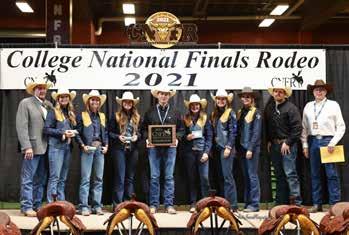
LC: Earlier this year we purchased some land with an indoor arena and outdoor arena with a house. It’s a full-fledged ranch that our rodeo teams can now call home. Previously they practiced in different spots at different times—you know, never really as a full team. Now they have the ability to practice all day long in a space they can operate how they see fit.
This is the first fall we’ve been able to do this, so we’re still feeling our way through the scheduling part of it. But from comments from coaches and student-athletes, it’s already better for them and their culture. They can board horses at the location, so it saves them time throughout the day and not be on the road as much, which is a safety factor especially as the weather starts to turn here. It really sets us up well for the future.
- LEON
M.O.: What do you use as a guiding star when deciding how to prioritize all these projects?
LC: It all comes down to student-athletes and making sure that we’re able to support them and care for them. So, I ask three questions before we do anything. One: Will this help the student-athletes? If that answer is no, then why are we even talking about it. The second: Can we do it as far as policy, procedure and compliance? And then the third is: Do we have the funds or resources to do this?
If all three of those are yes, then it’s ‘Why aren’t we doing it right now?’ It’s really that simple. It comes down to supporting our student-athletes and our coaches and programs. We’ve got student-athletes who have chosen us to continue their education and play the Division One sport of their choice. We want to make their four or five years here as successful as possible.
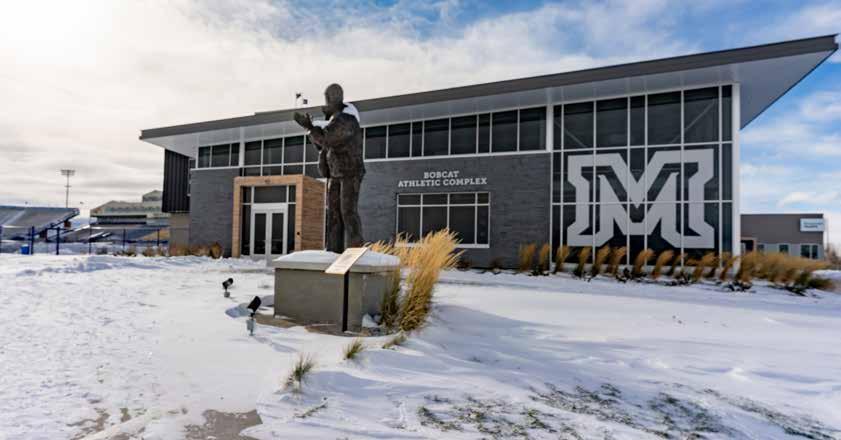
M.O.: What are you grateful for in this role?
LC: People make any organization what it is and we have great people in athletics. We also have great support, from the campus community to the president’s leadership team. I mean, look at Bobcat Stadium on a Saturday. It’s pretty amazing what we get to experience. And then our donors are second to none. Our fundraising has increased because they believe in the things that we’re doing. I just want to make sure that we can continue that. It’s been amazing so far, but I also know that we’re not done yet.
COSTELLO
When you get them here, you want to have the right facilities to be able to develop and train studentathletes. Through the recruiting process we make sure that they know they can achieve their goals while they’re here.
>>
The new Sports Complex at Montana State University was completed in 2022. PHOTO BY MICHAEL RUEBUSCH
The MSU rodeo teams at the College National Finals Rodeo in 2021.
105 MOUNTAIN MTOUTLAW.COM
PHOTO BY JACKIE JENSEN
On Saturday, Nov. 19, 2022, ESPN’s College GameDay came to Montana State University for the 121st edition of the Brawl of the Wild in what turned out to be the pregame show's coldest ever edition. The rivalry game between the MSU Bobcats and the University of Montana Grizzlies is the oldest college football rivalry west of the Mississippi. The No. 3 ranked 'Cats routed the No. 12 Griz, 55-21, sending fans from the stadium to the streets for a vivacious weekend celebration. This was the first time that ESPN's flagship college football show—which averages more than 2 million viewers over three hours—visited Montana.

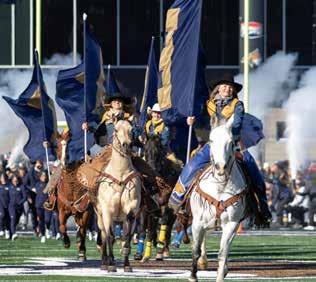

106 MOUNTAIN MTOUTLAW.COM
 - LEON COSTELLO
- LEON COSTELLO
It all comes down to student-athletes and making sure that we’re able to support them and care for them.
Opposite Top: PHOTO BY JOSHUA R. GATELEY
Opposite Left: PHOTO BY JASON BACAJ
Opposite Right: PHOTO BY JASON BACAJ
107
Above: PHOTO BY JASON BACAJ
MOUNTAIN MTOUTLAW.COM
MOUNTAIN OUTLAW:
When looking back on your 12 years as president of Montana State, is there any one project or accomplishment that stands out?
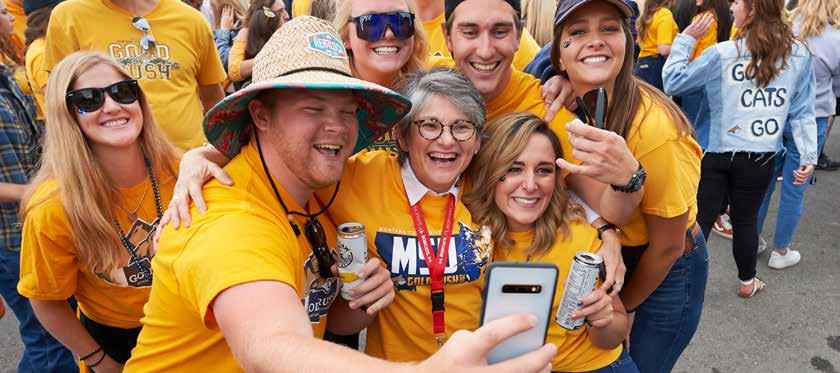
WADED CRUZADO : For the last 12 years we have been working hard to ensure that the importance of the land grant university is heard loud and clear. For me, that means an emphasis on educating the sons and daughters of the working families of America, with special attention to Montana residents. That’s our mission, but it’s also our best contribution to advancing the state of Montana.
M.O.: What are the visions you have for the new hospitality school?
WC: We’re very excited about the progress and the interest that people have shown in the hospitality management program. We established the program a few years ago, paying attention to the fact that tourism is the No. 2 driver of Montana’s economy. As a land grant university, we want to make sure that we’re responsive to that. There’s great interest in both the twoyear culinary arts program offered by Gallatin College and the baccalaureate program here at MSU.
And we’re now in conversations with the Jake Jabs College of Business
to add an additional focus on business practices because we want to make sure that we prepare the future professionals in the industry.
M.O.: What’s the trajectory you’re trying to put the hospitality school on for the next dozen years?
WC: We are in conversations for a public-private partnership to build the campus hotel. It will be wonderful for our students, not only to receive the theoretical training here but the actual training in a campus hotel where our students will be able to see the operations from beginning to end. So we’re very excited about that.
M.O.: How does the university approach balancing the ever-growing student community with the rapid growth going on in the Gallatin Valley as a whole?
WC: We have been fortunate to live in a time where we can witness the acceleration of Bozeman and Gallatin County. I think our responsibility is to ensure that we prepare those professionals who are going to enter these incredible opportunities that are becoming available now.
Going back to the question about hospitality management: When we, as a public institution, put out a request
for proposals for possible partners for our campus hotel, there were 17 letters of interest from all over the nation. Evidently there is a lot of interest in our region, not just to find a home but also to enjoy everything that southwestern Montana has to offer—particularly Yellowstone National Park and the Big Sky community and Bridger Bowl. It’s the place to be. We want to make sure that we’re part of that excitement, and that we prepare competent professionals to serve the industry.
M.O.: How has the university navigated the universal difficulties around hiring and retaining faculty and staff in the pandemic era?
WC: The university is not immune to the stressors that the rest of the community has been feeling. I happen to believe that we have the most talented people in the state. Many, many individuals recognize that talent and they want that talent to go and work for them. We also wanted to make sure that we are the best public employer that we can afford to be. So, for years, we have been trying to ensure that we increased our starting salaries.
Right in the middle of the pandemic, in the summer of 2020, we were able to universally up the starting salaries for all our positions.
108 MOUNTAIN MTOUTLAW.COM
Montana State hosts Southeast Missouri for the season home opener Saturday, September 7, 2019 in Bozeman. PHOTO BY KELLY GORHAM
M.O.: What are you grateful for?
WC: First of all, I’m very grateful for the opportunity to serve the premier university in the state of Montana. This is an extraordinary university. We’re approaching 130 years of service in the interest of people, and it has also coincided with a time of tremendous enthusiasm and growth in so many areas. Needless to say, the public sees a lot of what we do in terms of student enrollment and the growth we’ve registered in that. But we have also grown incredibly in the area of research. It took us 37 years to reach $100 million in research expenditures per year. It took us another 11 years to double that.
If you were to combine all the annual research expenditures of all colleges and universities in Montana, public and private, Montana State University produces more annual research expenditures than all of them combined. That means that our faculty members, our researchers, our students are at the forefront of knowledge. I’m very grateful for the opportunity to work with our students, who are the best students in the whole wide world.
I’m delighted to work with our incredible faculty that we have, who add an incredible luster to our history. For example, just in the last year, four of our faculty members were elected to the National Academies of Science and to the National Academies of Medicine. We cannot nominate those individuals; those individuals are recognized by their peers.
And I’m very, very proud of and grateful for our staff, who are incredibly hardworking and talented. And I am very grateful for our alumni. They are so committed to the university. It’s not only evident on campus in our buildings, just take a look at the support they show for Bobcat athletics. Our students know that we are a big family, that there’s a community rooting for them, that they’re not just competing by themselves.
The university was able to provide that sense of community we all needed so badly coming out of the isolation of the pandemic. People were so happy to come out to our athletic events, artistic events, cultural events and root for those Bobcats. I’m very grateful for all of that.
Jason Bacaj is the Managing Editor of Explore Big Sky newspaper at Outlaw Partners.

- WADED CRUZADO
If you were to combine all the annual research expenditures of all colleges and universities in Montana, public and private, Montana State University produces more annual research expenditures than all of them combined.
Dr. Waded Cruzado at Brawl of the Wild.
109 MOUNTAIN MTOUTLAW.COM
PHOTO BY JASON BACAJ
Analytical cannabis testing that you can trust.


Montana family, and female, owned and operated. Fidelity Diagnostics specializes in advanced THC, Terpene and Contaminant compliance testing. Consistent and reliable sampling services from our exceptional Field Technician team. Laboratory integrity that you can trust.




GROW WITH FIDELITY | fidimt.com
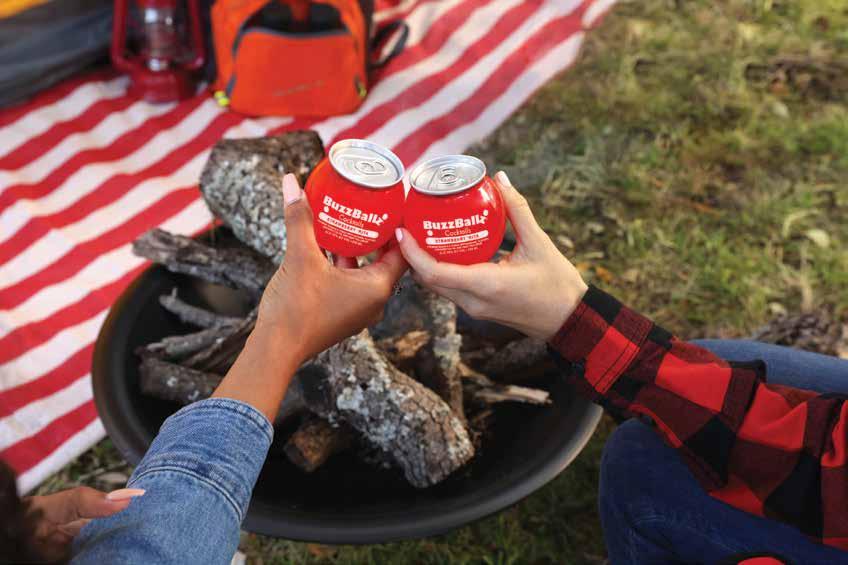


















Ad Space LPC now on Page 44 HAVE A BALL! © BuzzBallz, LLC, Carrollton, TX. Please Drink Responsibly. buzzballz.com GIVE THE GIFT OF MEMBERSHIP Purchase a gift membership at the Front Desk, call 406.994.6815, email members@montana.edu, or online at museumoftherockies.org/ gift Share all that you love about MOR with your friends and family. With a gift membership, you can experience the exhibits, programs, classes, and much more together. So, give a gift that lasts all year long. EXPERIENCES MOR_Outlaw_GTG.indd 1 11/10/22 2:50
BY ALEX MILLER
Yarrow Kraner believes everyone’s inner superhero can help change the world
Yarrow Kraner is a natural curator. Like an ancient alchemist, he blends the right people, ideas and spaces to create magical moments — the ones that make the hair on your arms stand up. I learned this about Kraner in our first meeting. It was a mid-October evening in Bozeman, Montana.
The plan was to meet at a wine bar downtown to talk about his life, his work and his passions. After some back-and-forth texting, though, the venue changed.
Kraner travels often, usually for his company, Hatch, which is somewhat of an engine for Kraner’s curation practice. Before departing his hometown again, he pined for one more sunset on his porch overlooking the city. Who could say no to that?
I convinced my station wagon to ascend the winding road up to Kraner’s home on the edge of Bozeman. Flanked by chest-high grass, the gravel driveway
is like a scene from Ridley Scott’s epic “Gladiator.” The sun had just begun to dip, its last light giving the grass a dazzling golden glow. Kraner was sitting in front of a window and waved as I pulled up. He greeted me at the side door with a sturdy handshake.
A filmmaker turned tech mogul turned think tank guru, Kraner’s journey has allowed him to rub elbows with acclaimed celebrities and top-tier scientific minds. But on that crisp autumn night, he was just another guy on his porch, being asked again to tell his life story.
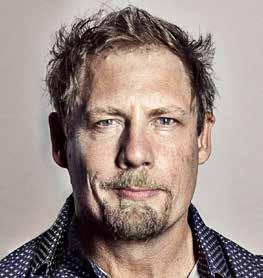
The smoky, sweet smell of mezcal drifted from a pair of clay cups, and music pulsed from his wireless speaker. A sunglasses-clad Kraner checked his cellphone, simultaneously rubbing the belly of his four-legged companion. Though a last-minute change, everything seemed perfectly in place — curated. The details were immaculate; It was a magical moment.
He placed his phone down and leaned in.
“All right,” Kraner said. “I’m ready whenever you are.”
112 MOUNTAIN MTOUTLAW.COM
Yarrow Kraner is the founder of HATCH & H360.ai. COURTESY OF YARROW KRANER
EVERYONE’S A SUPERHERO
Next to curation, Kraner carries another obsession that’s been formative in both his life and work: superheroes. Not the cape wearing, gadget wielding variety, but instead the superhero dormant inside everyone.
To be clear, Kraner does not think of himself as a superhero.
“When you ask someone to view themselves that way, it sounds almost arrogant,” he said. Despite the humility, he’s steadfast in his belief that everyone is in fact a superhero.
The first hero he met was his mother. Kraner was raised in Bozeman by a single mom who, with very little money, made the move from Minnesota to Montana to escape an abusive relationship. He remembers her working several jobs at once, pushing herself through college to earn her family’s first degree.
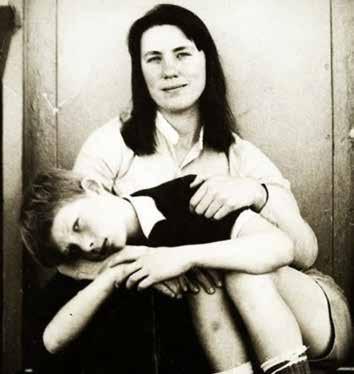
“She was sort of someone that I initially held up as, like someone that was beating all the odds,” Kraner said. “You know, like, someone that really had a lot of things stacked against her and us, and was so persevering that she just made impossible things happen.”
When Kraner was young his mother gave him a camera. Behind the camera, Kraner shaped the lens through which he observed the world, eventually growing to understand that life is layered with perspective.

He became fascinated with little details, like the patterns of a blade of grass or textures on leaves under a zoomed-in lens. Kraner brought the camera with him everywhere, taking photos of the lilac bushes on the way to school and shooting portraits of the crossing guard shepherding children across the street.
When he looks back on his life, Kraner points to the
“aha moments,” the lightning bolts marking waypoints on his journey. One of the first was behind that camera, he recalls, when the photo just clicked.
One of the next lightning bolts Kraner tells me about happened on a deck in Los Angeles. It was the ’90s, and a 20-something Kraner was fresh out of Montana State University’s film school and eager to escape his hometown to make a living behind the lens he held so dear. He perceived L.A. to be the epicenter of creative genius and craved inspiration from the city and its inhabitants.
One night, Kraner went to a party. Everyone appeared to be cut from a glossy red carpet photo: polished, beautiful, successful. What am I doing here, and are these people in this room the inspiration I’m looking for, he wondered. He went outside to stand on the deck alone.
“Where are they,” Kraner asked to the dazzling skyline of the city, hoping to find the figures he’d been searching for that would inspire him.
Then a voice came from the dark, and a person materialized from the shadows. The two struck up a conversation and the stranger, a composer, told Kraner about his work teaching deaf children how to read and write music. Kraner was transfixed. The next day, he met a scientist working to stitch the ozone back together piece-by-piece. The interactions struck a chord, and helped change Kraner’s perspective on what it means to be a superhero.
“And that was a moment when it sort of clicked,” Kraner said. “Superheroes are all around us, and in all of us, and so when you know the question, like ‘what makes a really a superhero?’ Being human. And I think that everyone has this capacity within them that sometimes is untapped.”
>> 113 MOUNTAIN MTOUTLAW.COM
A photo of Yarrow and his mother, Madeline, on the steps of their government subsidized home in student housing. It was this photo that piqued Yarrow's interest in Photography and cameras. COURTESY OF YARROW KRANER Yarrow on a recent trip to Egypt. COURTESY OF YARROW KRANER
Imbued with new perspective from that fateful L.A. night, Kraner believed so devoutly in the superhero inside everyone that he couldn’t keep his revelation to himself. He turned his philosophy into a career.
In a leap into the unknown, Kraner stopped focusing on film and dove headfirst into an inspired new idea: an online platform, Supernating Superdudes, where everyone could see themselves as a superhero, a sort of beta testing ground for his newfound superhero ethos. That pivot came with its own hardships. At one point, Kraner was homeless, living under a desk in his office.

Superdudes was an online flash game where Kraner said people could “hero-ize” themselves by uploading their faces onto a virtual trading card. The game unintentionally became a precursor to social media, allowing users to interact and connect with each other online.
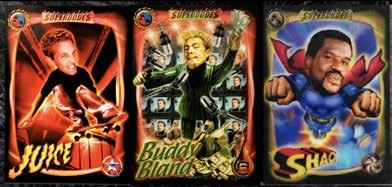
It was a surprising hit. Superdudes shattered engagement expectations, or “stickiness,” as it’s known in the tech world, with users flooding the platform to such a degree that Supernating Superdudes overtook AOL in stickiness. But that wasn’t the point.
Kraner said a feature of the game allowed for players to enter their zip codes, and a suite of ideas and options to engage with the community would appear, whether it was picking up trash or volunteering.
Letters poured in from teachers, child psychologists and parents. The game was helping kids to define the best self within them, he said. That was another lightning bolt moment for Kraner; his online game had transcended the digital world and was creating positive change on a ground level—both within communities and inside of players.

“The very act of asking this young person or these young people to define that best self within them, like all the molecules in their body, began to conspire to actualize that inner hero,” Kraner said. Players would go so far as to create the real-life version of their online superhero identity. Kraner recalled meeting CEOs at parties dressed as their Superdudes persona. One of the CEOs, whose Superdudes character was known as “The Mayor,” showed up to a party in full costume with custom-made keys to the city he ran in the game. He would hand out the keys to people he deemed special. Kraner still has his key.
The high wave of Supernating Superdudes would eventually crest and fall. Fox bought Kraner’s company, though the choice was not Kraner’s. Soon after, the same company acquired MySpace, and all but gutted Kraner’s platform for its tech, leaving the game to wither.
Though gone, there’s proof that Kraner’s first attempt to unearth the hero inside of everyone was working, and creating real, lifelong connections.
“Twenty years later, there is still a Facebook group that is active,” Kraner said. “People have gotten married. People have, you know, they're still in touch. They're also still wondering when it's gonna come back.”
Yarrow the cameraman and director, on set. COURTESY OF YARROW KRANER
Examples of the Superdude/Hero cards, including Shaq, whom they used to collaborate with on stay in school programs. COURTESY OF YARROW KRANER
114 MOUNTAIN MTOUTLAW.COM
Yarrow on stage at HATCH Summit, Moonlight Basin, Big Sky. COURTESY OF YARROW KRANER
My cup of mezcal was on its last leg when Kraner suddenly looked up and whistled.
“Finley,” he bellowed across the yard. “FINLEY!”
A flock of birds had flushed from their grassy resting place, and Kraner suspected it was because of his roaming dog, known to the neighbors as Free Range Finley. He checked his phone for news of Finley’s whereabouts from neighbors, apologized, and returned to his story.
For Hatch, Kraner’s next business, to be born, Supernating Superdudes had to die.
“I mean, looking back on it was probably the most important and pivotal decision,” Kraner said. The first testing ground of that belief was with Superdudes, which showed Kraner that if given an outlet, there was an audience hungry to affect change in the world, or at least in themselves.
In 2004, five years after starting Superdudes, Kraner founded Hatch, a venture he described as an evolving organism that moves in response to what the world needs, be it a meeting of the minds to address climate or equity in society.
If that sounds vague, it’s because it is.
Hatch is a collective that exists at the nexus of a Venn diagram of the defining ethos of Kraner’s life: where unearthing people’s self-fulfillment, their superhero powers, and the needs of the world, collide to create an opportunity to affect change. Kraner said when you explore the components of that Venn diagram, you tap into your latent superpowers.
Hatch isn’t specific because all of these defining factors that Kraner has brought together are fluid. It morphs to be relevant; to stay inspired.
Hatch is like Superdudes 3.0, according to Kraner. The idea is almost the same, but on a grander scale. In a way, Hatch has become the ultimate marriage between Kraner’s obsession with curation and his quest to reveal the superhero inside of everyone.
Perhaps among the clearest manifestations of this are Hatch conferences which convene people from a wide range of disciplines doing incredible things, from climate science to Oscar-winning films. These innovators come together to share ideas and perspectives that push them ever closer to finding
the superhero inside of themselves.
Kraner’s role in all of that is to do what he does best: to curate connections that fuel innovative change in the world and in people; connections that are diverse and layered in the same way he learned to view the world through his camera lens as a child.
For example, Hatch curated an ocean plastic leadership summit that sent industry leaders from companies like Coca-Cola, Proctor and Gamble, and Unilever, and non-profit members of World Wildlife Fund, Greenpeace and Ocean Conservancy to observe and inspect plastics accumulating in the Sargasso Sea—a region of the Atlantic Ocean surrounded by four gyres, or slow-moving whirlpool-like water currents. The expedition produced a report with commitments from various industries to work on solving the issue of plastics accumulating and breaking down in the ocean to create microplastics.
Kraner’s work with Hatch continues to expand, but it doesn’t stray far from his original intention: to tap into human capacity and potential.
Back on Kraner’s porch, the sun had set and the cups were empty. Finley had returned and the sunglasses were off.
Through our conversation, it was clear that Kraner was not the immovable stone in the river, but instead a person following the flow of his passions. He was willing to change and roll with the punches in life to better articulate what he was looking for inside, and how to share those threads he had so deftly woven together. The idea is for others to take those threads, and weave their own webs. It’s not one person reaching that inner superhero; it’s everyone that would make a difference.
“It's less about … individualism and more around collective intelligence and collective potential,” Kraner said. “So the definition of a superhero for me is everyone.”
Alex Miller is a native of Mississippi but grew up on the East Coast. Miller is a graduate of the University of Montana journalism program, where they somehow gave him a plaque for writing. He covers politics for the Bozeman Daily Chronicle.
115 MOUNTAIN MTOUTLAW.COM

AUGUST 4&5, 2023 BIG SKY, MT creating big impact for wild spaces through music and community wildlandsfestival.com


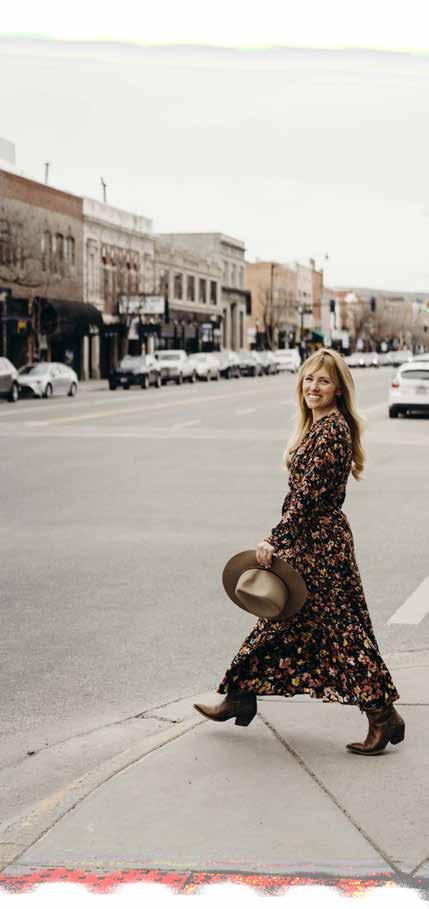
Ready to make Montana home? Let’s get started. CPA, GRI, Sales Associate Sarah Day (406) 580-9066 A member of the franchise system of BHH Affiliates, LLC.
BY MATT CROSSMAN
LAND
he boy in the photo crouches down, his left hand touching the North Dakota dirt, his face radiating joy and amazement. His eyes zoom in on a small hole. In that hole sits a prairie dog, its furry brown hair and exuberant yip-yip-yip barks the source of the boy’s joy and amazement.
Behind the boy, brown grass recedes to giant gray knolls distinctive of North Dakota’s badlands. The photo, taken in Theodore Roosevelt National Park, captures the essence of the place: unchanged and unchanging, a reflection of the conservation beliefs of the man it’s named after. Only the boy’s clothes—corduroys, work boots and an untucked button up shirt—give any hint as to when the photo was snapped, which is to say decades ago. Nobody else is in the photo, nor is there any evidence of human existence; no roads, cars or buildings. It’s just

North Dakota’s governor is preserving Theodore Roosevelt’s name in a big way.
118 MOUNTAIN MTOUTLAW.COM
vast, wide-open space, from one horizon to the next and from the hard-packed dirt to the heavens above.
Like many boys in North Dakota, that boy dreamed about being a rancher, imagining for himself Theodore Roosevelt’s famed strenuous life marked by a pounding heart, dirty hands and a sweaty back. But that boy’s

life took a different path. Now grown up and known as North Dakota Gov. Doug Burgum, he remains fascinated by Roosevelt and how that unchanging land changed him, and how Roosevelt as our 26th president changed the country as a result.
As governor, Burgum helped lead the push to get approval for the Theodore Roosevelt
>> 119 MOUNTAIN MTOUTLAW.COM
A young Doug Burgum in his element in North Dakota. PHOTO COURTESY OF DOUG BURGUM
Presidential Library, which will open near the entrance to the national park, which is already the No. 1 tourist attraction in the state; the library will greatly enhance that. With worldclass designers, deep-pocketed supporters and a treasure trove of Roosevelt material, Burgum hopes it will be “best in class” among presidential libraries and as bold and audacious as the man it celebrates.
“Dare greatly—that’s how he lived his life,” Burgum said. “We want to keep challenging ourselves to strive for something. I think it’s important for our country to remember, not just North Dakotans, that we can aspire to do great things with great imagination and make it happen.”
Dare greatly—that’s how he lived his life. We want to keep challenging ourselves to strive for something. I think it’s important for our country to remember, not just North Dakotans, that we can aspire to do great things with great imagination and make it happen.
- Doug Burgum
Make it happen. Easy to say, hard to do, in politics, in life, in presidential libraries. Ed O’Keefe, CEO of the Theodore Roosevelt Presidential Library Foundation, hears the same two questions repeatedly: “Wait, Theodore Roosevelt doesn’t have a presidential library? And why North Dakota?”
The answers to both questions are intertwined. The fact that Theodore Roosevelt, the president who wrote more books than any other, doesn’t have a library might be surprising, but presidential libraries are a relatively modern invention. According to the national archives, these libraries are meant to bring "together the documents and artifacts of a President and his administration and presenting them to the public for study and discussion without regard for political considerations or affiliations.”. Every
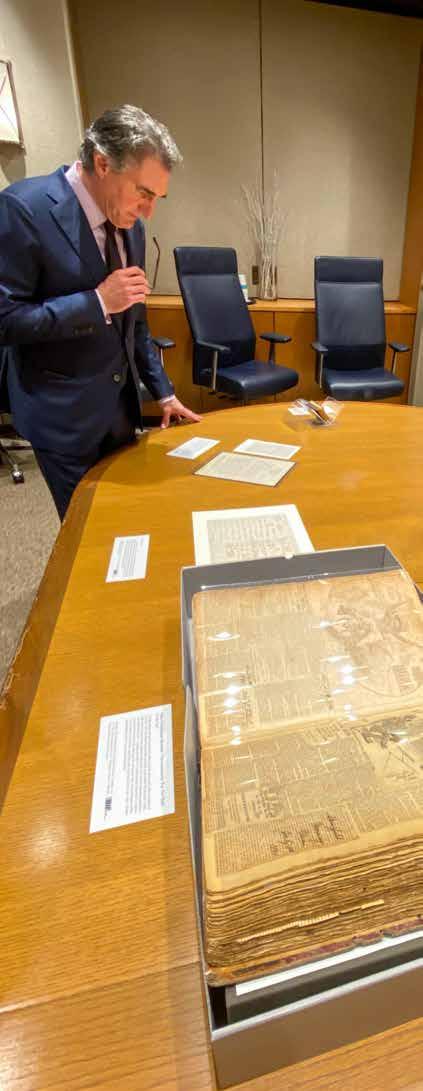
120 MOUNTAIN MTOUTLAW.COM
Gov. Burgum looking at documents related to Teddy Roosevelt at the Library of Congress in Washington D.C. PHOTO COURTESY OF DOUG BURGUM
president since Herbert Hoover has one (or has one in the works in the cases of Barack Obama and Donald Trump). But nobody before Hoover, who began his term in 1929, has one.
In Roosevelt’s case, the lack of a library is not from a lack of effort. “When he died he was one of the most known people on the planet,” Burgum said. “And there was all kinds of talk about preserving his legacy.”
Sagamore Hill, the home where Roosevelt lived from 1885 until his death in 1919, is a national historic site run by the National Park Service. So is his birth site. Both are in New York and are must-visits for any Roosevelt fan.
The idea of a library in North Dakota bounced around for years. “It had been kicked around by a number of people before I got into office,” Burgum said. “And then
when I heard about it, I just said, ‘Wow, this is really an exceptional idea, and we should put together a team of people to take this from an idea to try to drive it into action.’”
Critics scoffed at the price tag— a $50 million endowment and $100 million raised from private sources. “I think there was some legislators that voted for it because they said, ‘Sure, I can vote for that because they’ll never raise $100 million,’” Burgum said. But the fundraising crossed that threshold, and now the library has an opening date of July 4, 2026, to coincide with our nation’s 250th birthday.
Still, none of that answers the second question: why North Dakota?
That answer comes in an abridged retelling of a pivotal part of Roosevelt’s life. In September, 1883, he visited what is now North Dakota to hunt bison. While there,
he invested $14,000 in cattle and a ranch. Five months later, his wife died in childbirth, and his mother died that same day in the same house. A diarist his whole life, Roosevelt wrote a chilling entry on the most painful day of it. He carved a giant X, under which he jotted, “The light has gone out of my life.”
Fleeing from his personal darkness, he returned to North Dakota and threw himself into what he called “the strenuous life.” As a boy he was sickly and brilliant. His father, a towering presence in his life, encouraged him to work his body as hard as he worked his mind. In North Dakota, he did just that.
Living at Elkhorn Ranch—a few miles from Medora, the future home of the library—he turned himself into the man who would eventually lead the charge up San Juan Hill, become the youngest president in history, push for the

>> 121 MOUNTAIN MTOUTLAW.COM
A traveling group on horses with a wagon. PHOTO COURTESY OF HARVARD UNIVERSITY HOUGHTON LIBRARY W438360_1 THEODORE ROOSEVALT COLLECTION, HARVARD COLLEGE LIBRARY

122 MOUNTAIN MTOUTLAW.COM
Painted Canyon in Theodore Roosevelt National Park. PHOTO BY KEN LUND
One hundred years from now, there’s going to be a lot of stuff in North Dakota that may not be here. But the Theodore Roosevelt Presidential Library is still going to be here 100 years from now, and so is the national park. And 100 years from now you’re going to walk out and you’re going see the same view that TR saw the day that he got off that train the first time he got here. That connection with the preserved landscape is going to be a powerful, powerful part of his legacy. - Gov. Doug Burgum
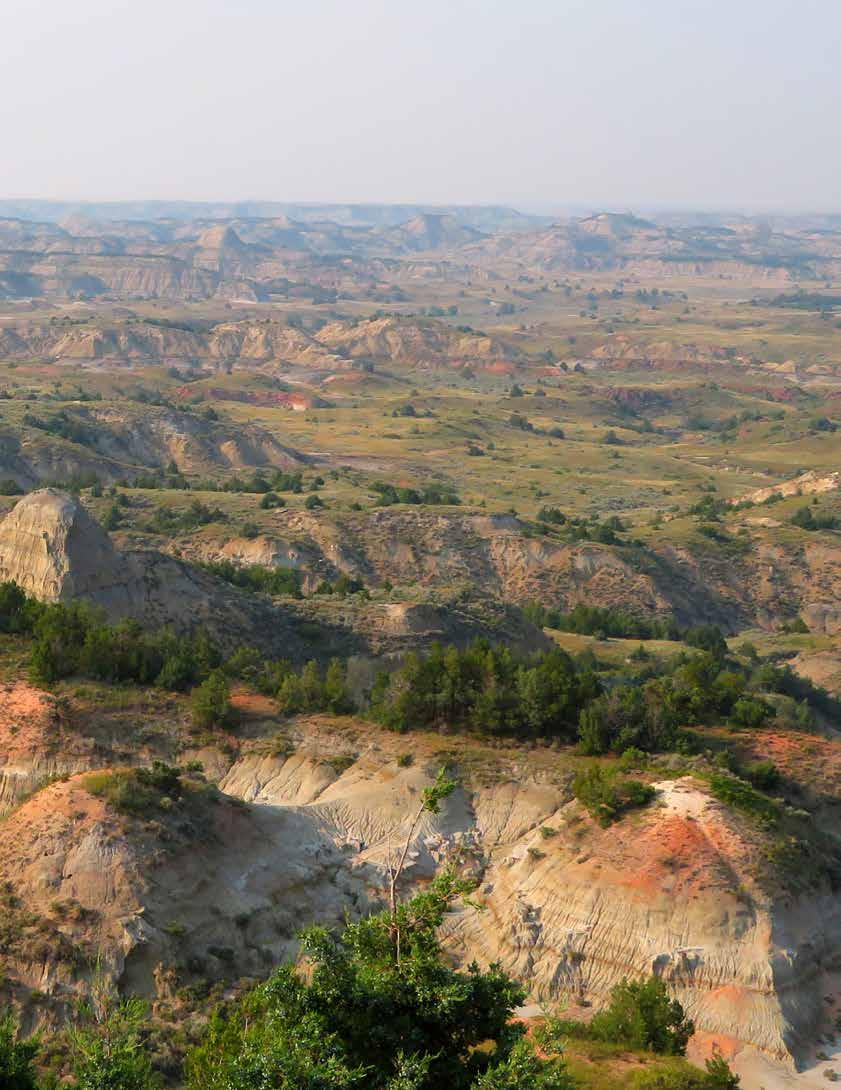
123 MOUNTAIN MTOUTLAW.COM
creation of the Panama Canal, save the NCAA, explore an uncharted stretch of the Amazon and much, much more.
“He transformed himself here,” Burgum said. It’s as if he made himself miserable physically on purpose to take his mind off his emotional misery. Enduring both made him stronger. He left North Dakota a changed man, stronger because under life’s weight he had bent, but he did not break. He built resilience that defined, illuminated, even made possible, the rest of his life. The answer, then, as to why Roosevelt’s library is going to be built in North Dakota, is this: Without North Dakota, the Theodore Roosevelt known to history would never have existed.
“I have always said I would not have been president had it not been for my experience in North Dakota,” Roosevelt said. “It was here that the romance of my life began.”
The library will focus on the three themes that dominated Roosevelt’s life: citizenship, leadership and conservation. It’s the way in
which those themes will be presented that organizers hope will make the library unique. Dickinson State University has digitized 75,000 Roosevelt documents, so the library will be a far cry from the standard “document under glass” displays. There will be immersive and interactive story-telling employing state of the art technology.
The fact a high-tech library will be built in a rustic setting is appropriate considering the seeming contradictions that marked Roosevelt’s life. He was a high-brow intellectual and dirty-fingernailed cowboy; a politician who could be stubbornly dogmatic and a consummate dealmaker; a man who carried a knife made by famed New York City jeweler Tiffany and Co. Even the entrance of the library will carry faint whiffs of Roosevelt’s life; it will sit along the 150-mile Maah Daah Hey trail, which will allow visitors to hike, bike or ride horses to it.
The library will also be “one of the most sustainable buildings ever built,” Burgum said, which puts it in line with Roosevelt’s passion for
conservation and North Dakota’s goal to be the first carbon neutral state by 2030, which Burgum says will be done without mandates or new regulations.
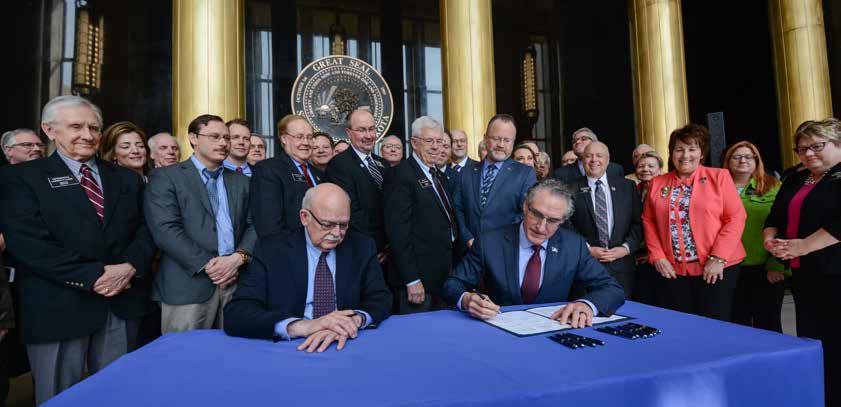
Long before he ever thought about running for office, Burgum placed on the wall in his office an excerpt from “The Man in The Arena,” a section of a Roosevelt speech titled “Citizenship in a Republic.” As governor, Burgum peppers his comments with Roosevelt quotes. Like Roosevelt, Burgum pivoted from a life of privilege to a life of public service. Like Roosevelt, Burgum is passionate about conservation and enjoys adventure (Roosevelt famously spent more than a week chasing boat thieves. During the pandemic, Burgum took an epic sailing trip from South Dakota to Montana). And like Roosevelt, he was shaped by North Dakota’s vast public spaces.
While the creation of the Roosevelt library will become part of Burgum’s legacy, he deflects questions about that and about what he and Roosevelt have in common.
Gov. Burgum signing the bill that created the Teddy Roosevelt library endowment.
124 MOUNTAIN MTOUTLAW.COM
PHOTO COURTESY OF DOUG BURGUM
Burgum spreads credit for the library instead of taking it, which is positively un-Rooseveltian. Humble, TR was not. An oft-repeated line about Roosevelt says he wanted to be the baby at every baptism, the bride at every wedding and the corpse at every funeral. He was voluble, bombastic, a larger-than-life figure who you could love one minute and hate the next but never, ever ignore.
The library will try to embody his ethos—dare greatly, think boldly, live passionately and care deeply—all of which is captured in that quote Burgum loved enough to hang on his office wall: “It is not the critic who counts; not the man who points out how the strong man stumbles, or where the doer of deeds could have done them better. The credit belongs to the man who is actually in the arena, whose face is marred by dust and sweat and blood … and who at the worst, if he fails, at least fails while daring greatly, so that his place shall never be with those cold and timid souls who neither know victory nor defeat.”Theodore Roosevelt
From that little boy in the photo, Burgum grew up to become a giant in the software industry, and eventually the executive leader of his home state. The boy in the photo changed, but his love for that land remains, and now, as governor, he wants others to see what he saw on his trips there.

“One hundred years from now, there’s going to be a lot of stuff in North Dakota that may not be here,” Burgum said. “But the Theodore Roosevelt Presidential Library is still going to be here 100 years from now, and so is the national park. And 100 years from now you’re going to walk out and you’re going see the same view that TR saw the day that he got off that train the first time he got here. That connection with the preserved landscape is going to be a powerful, powerful part of his legacy.”
Out of that preserved landscape Roosevelt crafted a life of unparalleled agony and adventure, service and success, toil and triumph. And it’s out of that preserved landscape that his legacy will live on Matt Crossman is a St. Louis based travel and adventure writer and Theodore Roosevelt fanboy.
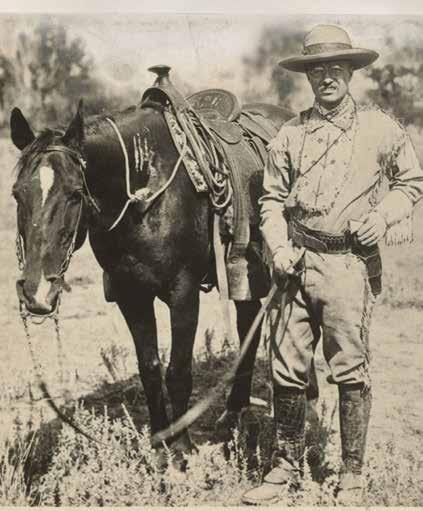 Governor Doug Burgum. PHOTO COURTESY OF DOUG BURGUM
Governor Doug Burgum. PHOTO COURTESY OF DOUG BURGUM
125 MOUNTAIN MTOUTLAW.COM
A young Theodore Roosevelt with his horse. HARVARD UNIVERSITY, HOUGHTON LIBRARY, W437051_1 THEODORE ROOSEVELT COLLECTION




Specializing in new construction and custom remodels Big Sky, MT | (406) 581-1870 | jarviscustombuilders.com YOU’VE SEEN AND HEARD OUR WORK SOUND & LIGHTING | EVENT PRODUCTION | HOME & COMMERCIAL INSTALLS JERECOSTUDIOS.COM | 888.776.5582


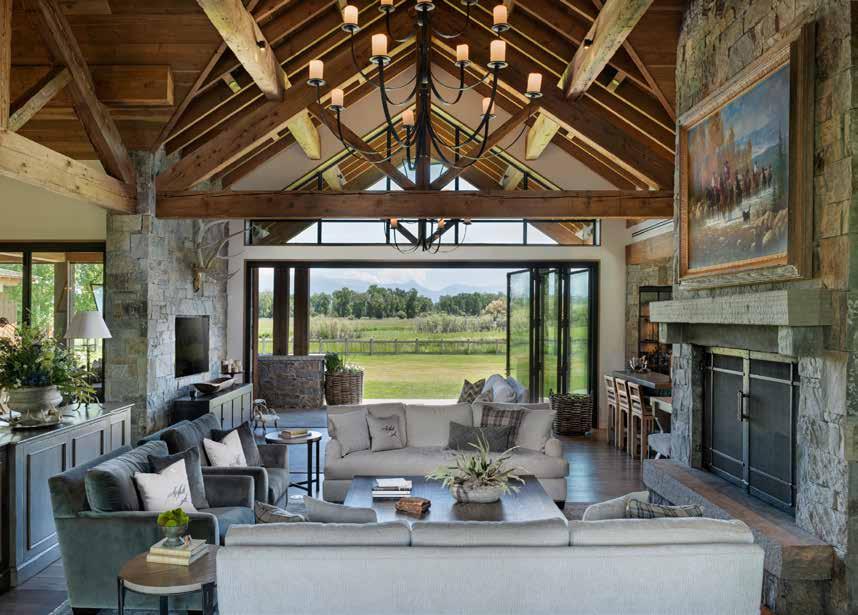

2010 GILKERSON DRIVE, BOZEMAN, MT 59715 | SBCONSTRUCTION.COM | 406.585.0735

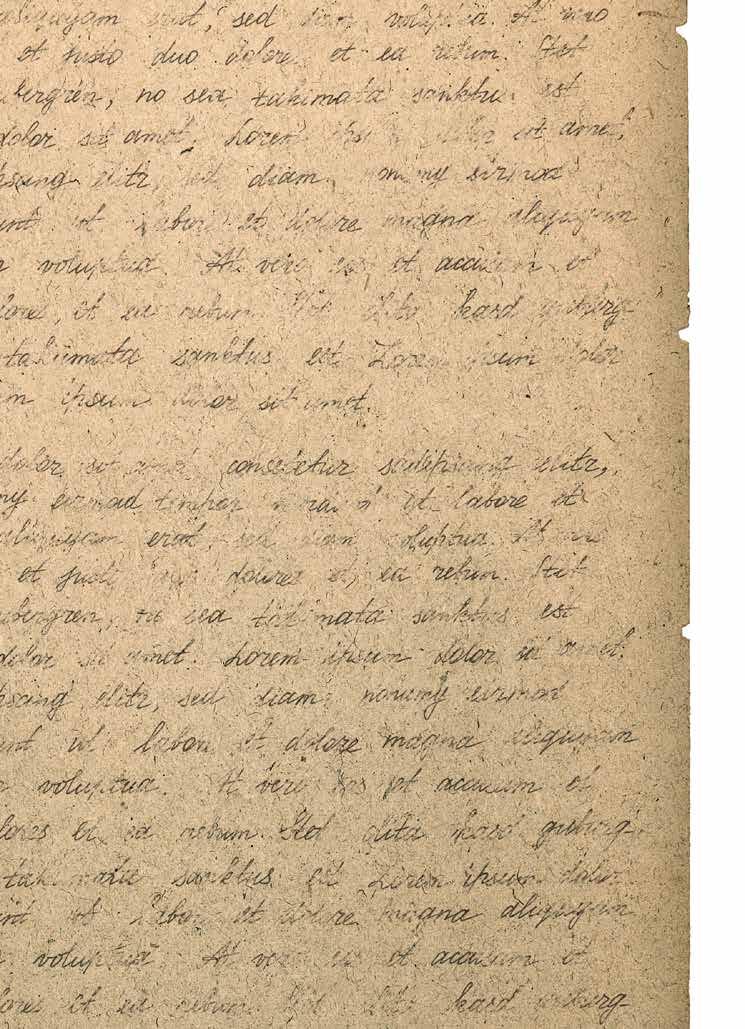
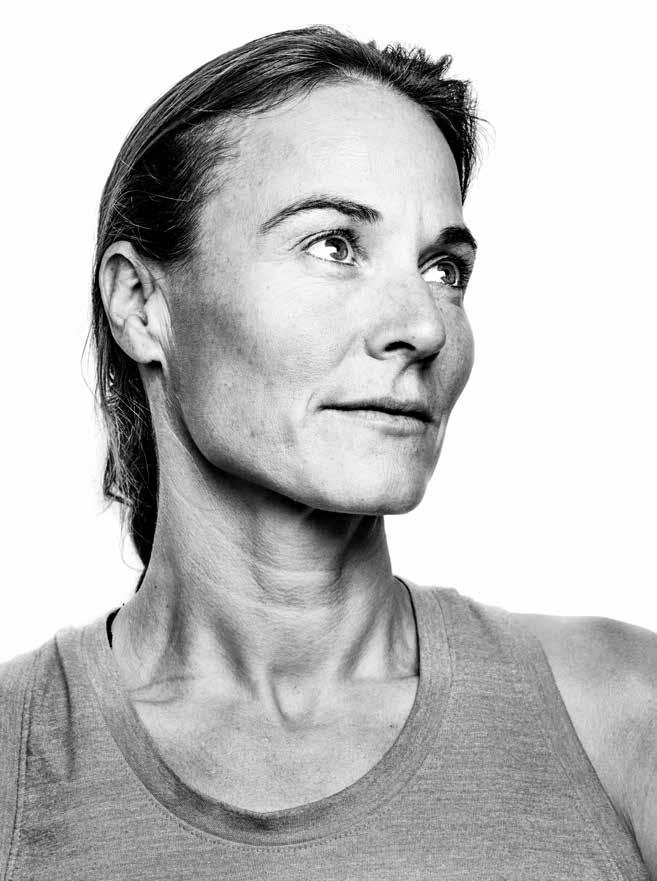
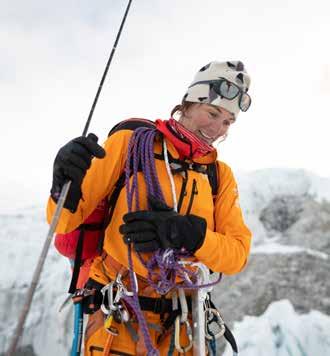
128 MOUNTAIN MTOUTLAW.COM
BY JULIA BARTON
A letter to Hilaree Nelson—perhaps history’s most accomplished female ski mountaineer—who paved the


It was about a month before I came across news of your Lhotse descent. I remember seeing the photos of you near the summit, a pink sunrise lighting up the horizon behind you, and thinking: I can’t believe someone skied that—I can’t believe it was a woman.
I’d kick myself for thinking such a thing now. Throughout your decades-long career, you’ve proven time and again that women can (and do) hold their own in the mountains, but your descent of the Lhotse Couloir is the first time I remember seeing headlines about a big-time objective being ticked off by an athlete who wasn’t a man. It was the first time in my life as a skier seeing a female athlete complete something that a male counterpart hadn’t already achieved.
Often when female athletes accomplish something, the fact that they’re women overshadows the gravity of their effort, but not with you. You weren’t the “first woman,” you were the first, and also a woman. The power in this distinction weighs heavily on how achievements are perceived differently depending on if the athlete is a man or a woman. Headlines never say “first man.”

About a year later, when the film about your Lhotse descent came out, I screened it on my laptop from my twin bed, now a year into college. You looked beautiful. Not in the makeup-clad-runway-model way, but in the I-just-did-something-that-lit-my-soul-on-fire way. You looked strong and adventurous and accomplished and feminine.
Those first two years of college were turbulent for me; I struggled with the isolation of the city, the distance from anything that resembled a comfort zone. I didn’t know how to be myself and everything I thought was expected of me at the same time.
>> 129 MOUNTAIN MTOUTLAW.COM
I grew up in a mountain town where the coolest thing you could own was a new pair of skis and summers were spent with a coating of dirt on my skin and sleeping in tents in the backcountry. Despite trying, I didn’t know how to fit in with this new demographic of people who cared more about the brand of my dirty white sneakers than the mountains I’d been to. Seeing you check whatever boxes you wanted to, expectations be damned, made me want to follow suit.
Then, on September 26, 2022, I saw those same images of you from Lhotse—among dozens of others—on social media, but this time they were announcing your disappearance. Two days later, Jim confirmed your death. You were just 49 years old.
You, a pioneer, a sure-footed and calculated adventurer, a beacon of inspiration to countless around the world, were knocked off your feet by a small avalanche while skiing down Manaslu, the eighth-highest summit in the world. You were dragged 5,000 feet down the south slope of the rugged Nepali peak and remained there until Jim and a search crew recovered your body.
Oh, how the world has mourned you.
Posts about you filled my news feed and social media with remarks from your peers, friends, reporters and simple, every-day adventurers like me, lamenting the loss of the woman who carved out space for subsequent generations of women to succeed in the outdoors.
“There are no words to describe the love for this woman, my life partner, my lover, my best friend, and my mountain partner,” wrote Jim in the post that announced your death. “I did everything I could to locate her but was unable to go down the face as I hoped to find her alive and live my life with her.”
The love and grief coming from your partner stung the most. Jim’s words were yet another reminder that part of what made you such a hero was the full breadth of your identity. Indeed, you were one of the greatest mountaineers in history, but you were also a beloved partner, and a devoted mother.
“I had this close, intimate look into their lives and saw how absolutely wrapped up in [Hilaree’s] love Jim was,” professional skier Michelle Parker told me. “They embodied this very passionate lifestyle and it was beautiful to witness.”
An outpouring of love and remem-
brance also came from your friends, other female athletes whose careers you so beautifully touched.
“I haven’t been able to process my confusion over the loss of [Hilaree Nelson]: a friend, mentor, and big sister to me,” wrote professional climber Emily Harrington in an Instagram post. “There’s immense hurt for her, [Jim Morrison,] and her family, but also a disjointed and broken numbness over the reality of her absence. It’s painful and disorienting and I’m not there yet with how to handle it.”
When I spoke with Emily about you, she told me she met you on Mount Everest in 2012 (As far as places for two of my biggest outdoor idols to meet each other, Everest only makes sense). You two stood atop the world’s highest peak as the only women in the group, an expedition that began a decade of adventures together.
Emily, like so many, credits you for helping to forge her path as a professional outdoor athlete. The fivetime U.S. National Champion climber, who in 2020 ascended the 40-pitch Golden Gate route up Yosemite’s El Capitan in less than 24 hours, said she never saw her own athletic career continuing after she became a mother because “it just didn’t seem like something that [was] possible.”
But you, Hilaree, retained your sponsorships, kept adventuring and pushed your career further while raising two children.
“Because of [Hilaree] I started thinking 10 years ago that this is totally possible for me,” Emily said. “I can keep being this person. I can keep having goals and objectives and passion and show my kid that his mom has a passion and continues to follow their dreams.”
When I spoke with Emily, she was just weeks from the due date of her first child, and she was still in the climbing gym doing what she loves.
The sobering truth of outdoor recreation at the level at which you performed is the inherent risk which Emily said athletes must accept when they pursue such a career. It’s the passion for pushing boundaries and the feeling of
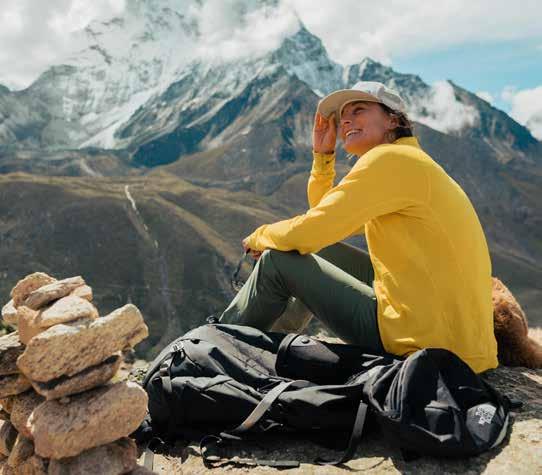
130 MOUNTAIN MTOUTLAW.COM
Hilaree Nelson, whose career thrived in the remote landscapes of the Earth’s tallest peaks, became one of the world’s most accomplished ski mountaineers over decades of adventures. PHOTO BY NICK KALISZ / THE NORTH FACE
accomplishment that makes the risk worth it, she explained.
“I think [Hilaree and Jim] were incredibly mountain savvy,” Michelle told me. “They knew exactly what they were doing and the risks thereof. And I think that Hilaree certainly lived her life by example and wanted her kids to see that they could follow something with such passion.”
Throughout your career you led by example, for your children, but also an entire generation of women.
“The more you see people like you doing these things, the more likely you are to believe that you can also do them,” Emily said.
The power of visibility surely resonates with anyone who has felt confined to a narrow identity, as many women in the outdoor recreation space are. Michelle told me how you strived to bring others up with you, going beyond just showing the world what’s possible by also supporting the women around you to succeed in their own pursuits.

Michelle explained that she met you through her close friendship with Jim and was immediately blown away by how curious and supportive you were about what she was working on. Before even mentioning any adventures you two had together in the mountains, she told me about your swimming club, a casual daily group swim in Lake Tahoe you used as training for your first Ironman Triathlon.
“It was hilarious,” Michelle said. “Completely stripped back of any mountain knowledge, any of those things that make [people like Hilaree] really great and big, we're just going for a swim with five friends every single morning. It was such a pleasure and an honor to get to know her just in that way before we entered into the mountains together.”
I often forget that all of you seemingly superhuman athletes accomplishing dangerous objectives are, at your core, real people like me. Although you were, to many, a mountaineering giant, you were also just another woman trying to support her community.
“I don't think she would ever think of herself as being better at anything than one other person, even though she was—she was our guiding light,” Michelle said. “She continuously was driven by purpose and passion, but also opening up the doors for women who came behind her to accomplish great things and not enough can be said for the importance of that role.”
Being a woman in the outdoors has always been challenging. I’ve never been the fastest or the strongest, and despite a hard-earned base of knowledge, I’ve seldom felt confident while adventuring with men. In college, I felt too outdoorsy; at home, sometimes not enough.
Soon after watching the Lhotse film, I joined my university’s climbing team. I was a complete beginner but found joy in a new hobby and the community it brought to me. Through climbing, I’ve come to accept that I don’t have to be the best—or even good—to enjoy something. My enjoyment in the outdoors, as in life, is whatever I make of it. In a lot of ways, that bridged the gap between the life I was living and the outdoor passion that was missing. I feel the need to credit you for some part of that.

The memory of you, your light and your perseverance, will
not soon fade. Your story isn’t over; it’s the bedrock of the stage you built in the outdoors for me and so many others. Thank you for showing me what is possible, and inspiring me to challenge what is not.
With love,
Julia Barton
Julia Barton was born and raised in Big Sky, Montana, and enjoys spending time in the Rocky Mountains skiing, hiking, backpacking and climbing. She studied journalism at the University of Southern California and believes storytelling is one of the most powerful tools in enacting change. Barton is the Digital Producer for Outlaw Partners.
131 MOUNTAIN MTOUTLAW.COM
Julia Barton climbs with friends in Reimer’s Ranch near Austin, Texas in February, 2022. PHOTO COURTESY OF JULIA BARTON


A GETAWAY YOU CAN FEEL GOOD ABOUT STAY SOMEWHERE THAT MAKES A DIFFERENCE Leadership in Energy & Environmental Design THE ONLY LEED CERTIFIED HOTEL IN MONTANA 25 EAST MENDENHALL STREET, BOZEMAN, MT 406-582-4972



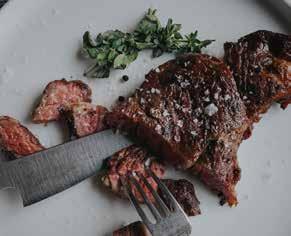

NATURAL. SUSTAINABLE. HEALTHY. EXPLORE MEMBERSHIPS AT REGENMARKET.COM FARM FRESH FOOD, DELIVERED TO YOUR DOOR. ScantoOrderOnline
BY SIERRA CISTONE

Kuka is working to build, repair and restore relationships between the
MEET MONTANA WILDLIFE DEPARTMENT’S FIRST TRIBAL LIAISON Kqyn
state and tribal nations
134 MOUNTAIN MTOUTLAW.COM
Kqyn Kuka sits at Giant Springs State Park in Great Falls, Montana on Aug 18, 2022. As tribal liaison for Montana Fish, Wildlife and Parks, Kuka is partnering with tribes to provide interactive information signs to educate state park visitors about the tribes in Montana. PHOTO BY SIERRA CISTONE
Just outside the fray of Great Falls, Montana, cutting through Giant Spring State Park, the 200-foot Roe River holds the Guinness World Record for the shortest river. It’s here where Kqyn Kuka is spending a hot August afternoon, chatting with visitors who wander along the superlative-worthy waterway.
“How far does this trail go?” some people ask Kuka, who’s clad in her Montana Fish, Wildlife and Parks uniform. Kuka talks with the visitors about the beauty of the nearby Missouri River that the Roe feeds into and advises them on the best sights to see while touring the area. Even in a brief interaction, Kuka’s generous nature shines.
An ostensible and bona fide willingness to share her time and knowledge makes talking with Kuka easy. She faces you when you speak and exudes complete presence of mind in a conversation. All of this is what gives Kuka her superpower: building connections. On top of decades of experience, it’s what makes her the perfect person to serve as the first tribal liaison and diversity coordinator for Montana Fish, Wildlife and Parks.
The position was established just last year and was born out of an evident need for the state to be better at building relationships and working with the tribes across Montana, Kuka said.
Wildlife don’t recognize borders between state and tribal land, which can make management of wildlife complicated. More than a century of conflict and tension between the state wildlife agency and the tribes in Montana left some tribes apprehensive to work with the state on wildlife issues. After a reckoning on its relationships with the tribes, the state established the tribal liaison position in an attempt to build a better future.
A lifetime of experience building bridges over troubled waters and straddling the worlds of both tribal nations and the state landed Kuka at the front of this shift in state wildlife management. Growing the relationship won’t happen overnight, Kuka says, but it’s critical work as both entities work to manage wildlife.
Kuka grew up on the Blackfeet Nation and is a Blackfeet descendant, just shy of the one-quarter blood quantum needed to be enrolled as a tribal member. Her childhood was spent in the aspen groves and creeks just outside of Glacier National Park, and helping on her grandfather’s cattle ranch.
Her father was King Kuka, a renowned artist both in and outside of Indian Country. When her father got a job teaching art at the Sinte Gleska University on the Rosebud Indian Reservation in South Dakota, Kuka went with him to study art herself and take classes under her father.
“My father used to say, ‘You can do your artwork, but make sure you have a career,’” Kuka said.
Kuka’s father died before she graduated college, so she
left Rosebud and returned to Montana to take his advice, finishing her studies at Salish and Kootenai College on the Flathead Reservation. This time, instead of pursuing art, she studied environmental science with an emphasis on wildlife and fisheries.
Right after graduating, she landed a job as a water safety officer for Montana Fish, Wildlife and Parks. Kuka quickly realized she not only enjoyed working in law enforcement but also had a knack for it.
“When you take those personality tests, I wasn’t the one that should be in law enforcement,” Kuka said. “But I thought, ‘That’s why I should be. Because I can reach out to all members of the public, and I can help them.’”
When Kuka was first hired as a game warden, she was one of only two women on the state’s force. As a law enforcement agent for the wildlife department, she worked difficult hours, long days and occasionally found herself in dangerous situations. She issued fines, educated the public and worked

frequently with tribal nations.
Kuka spent a few years assigned to the FWP district along the southern border of the Blackfeet Nation. It wasn’t long before she began hearing about a problem with serial poachers on private property outside but along the reservation border. At the time, it was an in-progress investigation for FWP, and Kuka sought permission from the Blackfeet Nation to assist with the investigation.
The investigation culminated in a high-speed chase that crossed onto the reservation where the suspects crashed the car and fled. Kuka seized the vehicle and discovered guns as well as three illegal deer. As evidence mounted, Kuka and the tribe’s wildlife department came together to identify, question and arrest the suspects.
The arrests put an end to the long-standing poaching issue
Kuka stands with Montana Fish, Wildlife and Parks’ horse, Coyote, in September of 2018. Every early rifle season, game wardens patrol the backcountry to talk with hunters and make sure everyone is following regulations.
>> 135 MOUNTAIN MTOUTLAW.COM
PHOTO BY PERRY BROWN
that had posed problems for people both on and off the reservation. Following the investigation, the Blackfeet Fish and Wildlife Department requested that Kuka lead tribal game warden trainings in interviewing and interrogation—critical skills for game wardens. Kuka said the investigation was ultimately a foundational era of trust-building between the tribe and herself as a game warden for the state.
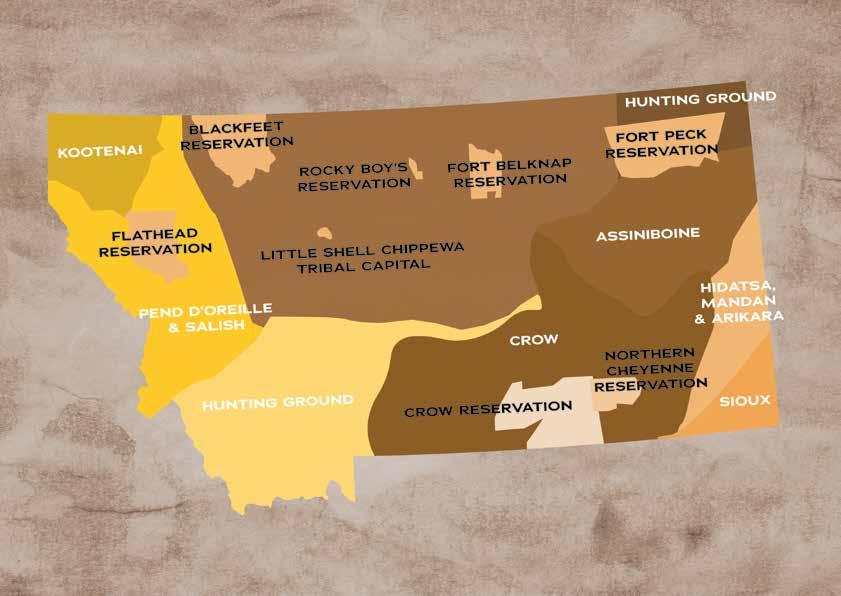
Being a game warden became a deep part of her identity. Early on in her career, Kuka realized she wanted more respon-
“I wanted to take each game warden’s personalities and strengths and build this team of camaraderie,” Kuka said.
Kuka applied for the sergeant position five separate times in different districts and took on acting sergeant duty twice. In 2020, she was finally offered the sergeant position for which she had spent years preparing. But life interrupted her shot at the long-awaited promotion.
Not long before the sergeant position opened, Kuka lost her 6-month-old son. The loss left her struggling with grief so deep that she said everyday life was impossible. Soon after, a sergeant position opened up. She remembers feeling conflicted about applying for the position, but ultimately decided to go for it with a push from her husband.
“When you take those personality tests, I wasn’t the one that should be in law enforcement. But I thought, ‘That’s why I should be. Because I can reach out to all members of the public, and I can help them.’" – Kqyn Kuka
sibility and found she excelled in leadership roles.
She worked the five years necessary before becoming a field training officer so she could train new recruits. Kuka traveled to leadership courses and workshops and took on extra projects when possible, all in hopes of one day becoming a sergeant that would oversee all the game wardens in a district.
Soon into her term as sergeant, Kuka had to recover a drowned victim and around the same time, one of her daughters severely broke her leg in a fall. Kuka said the culmination of devastating circumstances became too much.
“I was the first female sergeant the State of Montana has ever had,” Kuka said. “I only had it for weeks before I lost my mind.”
Kuka recalls checking in with her supervisor from the
136 MOUNTAIN MTOUTLAW.COM
Geographical map of tribal reservations in Montana. ILLUSTRATION BY TRAVIS LARIVIERE
emergency waiting room while waiting for her injured daughter. They agreed the timing of her accepting the sergeant position had not been right.
“I was torn,” Kuka said. “I gave up my badge and thought I was giving up my identity.”
But fate had something else in store for Kuka.
Around the same time Kuka relinquished her title as game warden sergeant, Dustin Temple, the deputy director for Montana Fish, Wildlife and Parks, created the tribal liaison position. For Temple, the need was critical and long overdue.
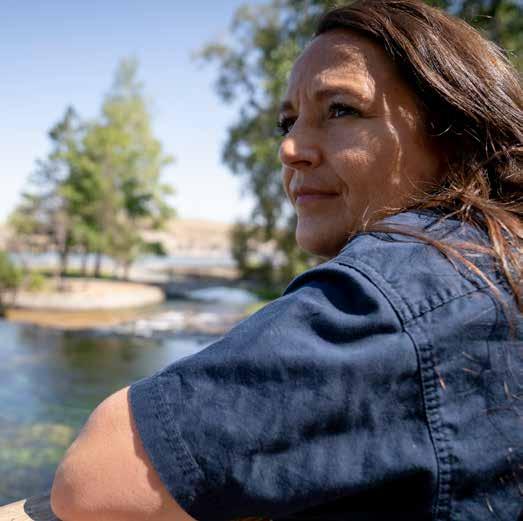
“We had just found ourselves tripping over our own feet as we tried to work with tribal governments,” Temple said. “I felt like we needed some focused capacity.”
Kuka’s resume was so unique and perfect for the position that Temple created the position with Kuka in mind. In many ways, she had already been acting as a makeshift tribal liaison throughout her time as a game warden. She was the person who people turned to in order to answer tribal-related questions and provide expertise on how to work with tribal nations respectfully. She had been a part of recruitment teams that worked to bring more Native voices into state government, and helped the Office of Indian Affairs with their own tribal relations training.
“She has a servant’s spirit,” Temple said. “I think Kqyn has accomplished more in 18 months than this department has accomplished in decades.”
Reservations are sovereign nations, meaning working with the tribes is the same as stepping into another country, Kuka explained. But that’s not how wildlife populations work. They move back and forth across borders as if all the land is the same. Rather than a challenge, Kuka sees this as an opportunity for the tribes and the state to come together to co-manage the animals that everyone has a stake in caring for.
On the Northern Cheyenne Reservation, problems with previous FWP employees had prompted the tribe to issue a memorandum that restricted wardens from entering the reservation without prior permission. The memorandum is still in place, but Jason Whiteman, tribal member and administrator with Northern Cheyenne’s Natural Resource Department, said that thanks to Kuka, the relationship between the state and tribe has begun to change.
“She has opened up a dialogue with the tribe to improve the relationship,” Whiteman said.
Out of this dialogue came an understanding that there was a need for cultural sensitivity training for game wardens. Now, Kuka is working to get
this training off the ground.
As the liaison, Kuka works with all eight federally recognized tribes in Montana. That often means traveling to remote parts of the state to work with different tribes. But Kuka was born and raised in both Montana and Indian Country and knows that showing up in person is key to building trust.
“The more they see me, the more they say, ‘That’s Kqyn,’” Kuka said. “And the more I hand out my phone number and business card.”
Kuka’s business card is standard with the state wildlife department’s logo and her contact info. But on the bottom reads Kuka’s motto: “From stranger to neighbor.”
Bridging the gap from stranger to neighbor is something Kuka has been doing her whole career. It’s a skill that’s founded on an inherent aptitude for working with people, and one that’s woven into the fabric of Kuka’s identity. It’s a skill that is an imperative asset for the state’s wildlife department.
“Sometimes you like a neighbor that doesn’t bother you,” Kuka said. “And then you want a neighbor you can rely on and borrow the sugar. . . I want to be the neighbor [tribes] can rely on.”
Sierra Cistone is a freelance journalist and photographer based in Missoula, Montana. Her work focuses on stories about conservation and our human connection to the rest of the natural world.
137 MOUNTAIN MTOUTLAW.COM
Kuka stands above the Roe River in Great Springs State Park in Great Falls, Montana on Aug 18, 2022. PHOTO BY SIERRA CISTONE

Thinking about living in Big Sky, Montana? Perhaps now’s the time. The Big Sky Real Estate Company is the Exclusive Brokerage for Moonlight Basin and Spanish Peaks Mountain Club. BIG SKY IS CALLING. YOU MIGHT WANT TO ANSWER THAT. BIGSKYREALESTATE.COM MOONLIGHTBASIN.COM SPANISHPEAKS.COM MONTAGERESIDENCESBIGSKY.COM 406.995.6333

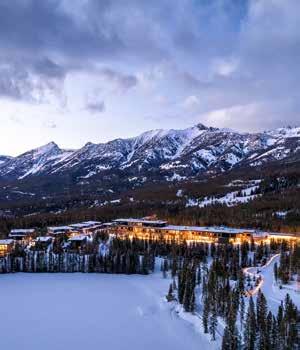

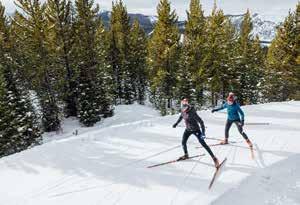 BY BELLA BUTLER
BY BELLA BUTLER
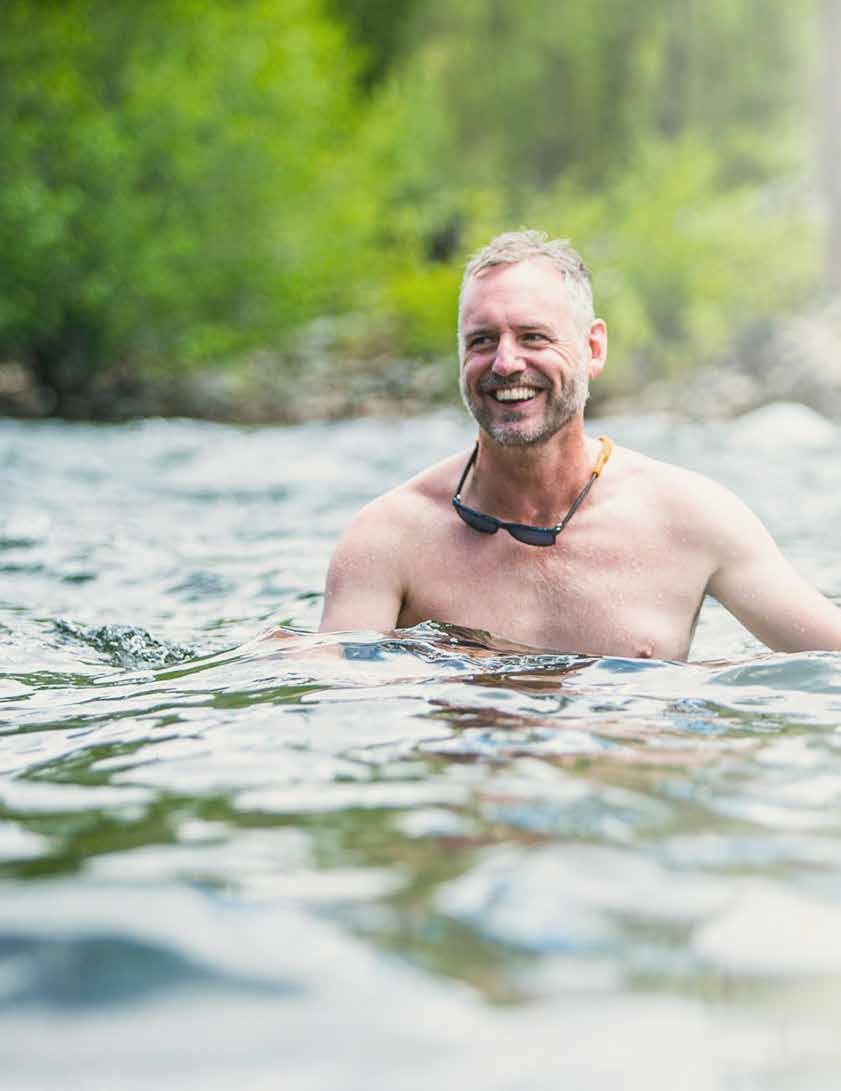
Scott Carney writes from experience to craft stories of impact
140 MOUNTAIN MTOUTLAW.COM
Investigative journalist Scott Carney leads a group in a breathing exercise in the Middle Fork of the Salmon River in July of 2022. PHOTO BY SETH DAHL
Carney’s trick to a good story: begin with the most riveting part. He claims it’s a cheap hack he learned from watching Quentin Tarantino’s Pulp Fiction, and one that he’s deployed in many of his own New York Times best-selling books— plant the climax at the beginning, and let the rest of the story pile on around that.
“I realized that you have to hook people. You have to realize what … people will want,” he said. “And then I feed them the information about why it was important.”
It’s what he did in his 2020 book The Wedge and his 2017 book What Doesn’t Kill Us, both in which he immediately launches into an account of his ascent of Mount Kilimanjaro wearing only a pair of shorts.
It only seems fitting that for a story about Carney himself, we’d start with such an anecdote.
It was June on the Middle Fork of the Salmon River, and the early-season runoff gushed cool, blue and frigid through the remote Frank Church Wilderness of No Return in northern Idaho. It had been four days into the trip before an incident. After gaining a sense of comfort atop a raft rowed by guides through the Class II, III and IV rapids, Carney had taken a seat in the ducky, a single-person inflatable kayak. He had grown confident paddling a few intense sections on his own, and the summer sun cast a sense of ease.
Carney faced upstream, lining up the ducky to try and surf a small wave in the river. Within an instant, his play turned
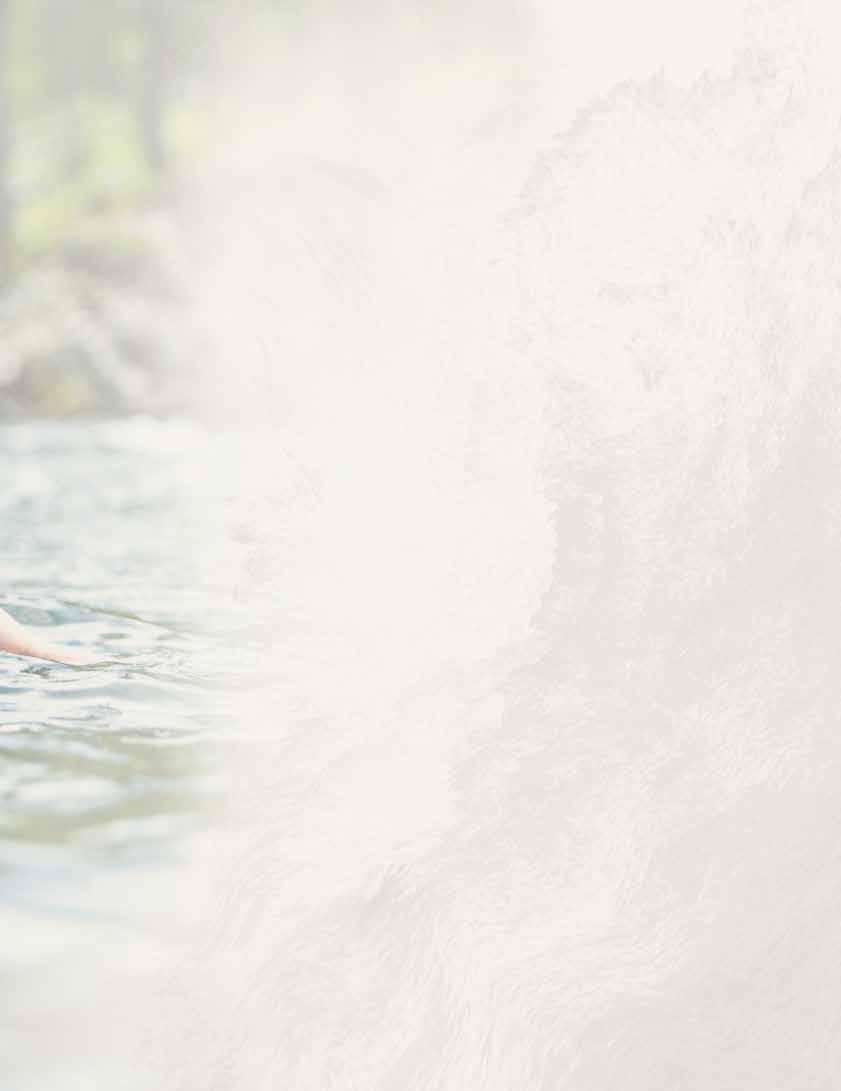
Scott Carney is a brilliant storyteller. Though a writer by trade, even in person he is captivating and animated, calculated in his delivery. His esteemed career shows the power of storytelling, and its ability to influence the way we engage with ourselves and the world.
>> 141 MOUNTAIN MTOUTLAW.COM
into peril as the river dumped him out of the kayak and into a hole of recirculating water. A guide downstream blew a whistle, signaling that someone had fallen in, just as others had already done on the trip. But unlike the other swimmers, Carney didn’t drift to the safety of another boat. Instead, the rest of us watched him tumble in the whirlpool over and over, his red helmet barely resurfacing above the water every several seconds before dipping back under again.
Eli Kretzmann, lead guide on the trip, snapped into rescue mode, launching out of his own raft to run up the
bank toward Carney. After nearly a minute of being churned, the water released Carney back into the flow of the river, and Kretzmann threw him a rope and reeled him into shore.
Carney choked up a few mouthfuls of water before asking the guides to tell his wife, Laura Krantz, who was around the bend in another raft, that he was okay.
Though a terrifying accident, the incident fit squarely into the message that Carney was on the river to share: humans have the capability to be extremely resilient in the face of environmental stress.
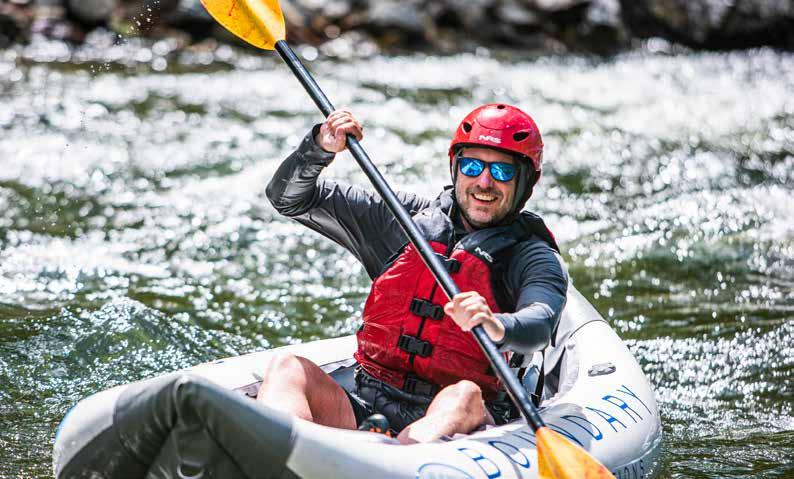
Carney was among a cohort of guests on a Boundary Expeditions rafting voyage down the treasured Middle Fork, on a specially curated trip that combined the backcountry river experience with content centered on human resilience and connection to nature. Having just published two books under a similar umbrella, Carney had been invited to lecture and lead exercises on “environmental training, using the environment to change the way your biology and psychology works ,” or the ability to retrieve our own dormant biology to cultivate resilience in the face of stress.
—Scott Carney
“If you do not expose yourself to things that make you uncomfortable, you are not activating your biology,” Carney said during his first lecture of the trip. With the sound of the river rushing behind him, Carney preached to the group that our bodies are untapped vessels of powers that we’ve muted with buffers of comfort, from air conditioning to remote controls. But we have the capacity to bring them back online, he promised.
In his work as a writer, Carney has
“I’m a perfectly recognizable writer to a lot of people, and a nobody to most people. And I think that’s sort of where I fit into this overall ecosystem. Do I think I’m changing the world? No, but I think I’m changing some people’s lives.”
142 MOUNTAIN MTOUTLAW.COM
Carney paddles an inflatable kayak on the Middle Fork of the Salmon River in July of 2022. PHOTO BY SETH DAHL
become somewhat of an expert on this topic, tracing back to a major inflection point both in his career and his personal life. After his initial start in long-form investigative journalism in the early 2000s, Carney caught somewhat of a break by becoming the first journalist to really put Wim Hof in the spotlight. Though Hof’s name has since become its own alternative wellness brand, as well as the proprietary tie to a widely practiced breathing method, when Carney met him in 2011 he was simply a little-known, arguably masochistic, Dutch man (he remains the latter two, but now has nearly 3 million Instagram followers).
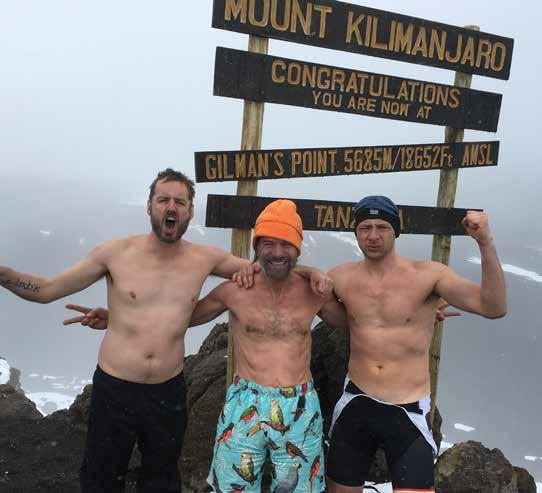
Carney had caught wind of Hof’s claims that he could control parts of his body with his mind. After reporting on the slippery slope of spirituality, so-called enlightenment, and superhuman powers for the entirety of his journalism career, Carney was immediately skeptical. But being a journalist, he figured his duty was to give Hof a fair shake.
On assignment for Playboy, Carney flew to Poland for a training course in which Hof was teaching his methods. Carney was fully intending to emerge from the frosty depths of Poland with a story debunking the looney Dutch man. But he’s a devoted student by nature, and his receptiveness to Hof’s teachings soon converted him into a disciple of sorts. Carney went on to write What Doesn’t Kill Us, which Hof wrote the forward for, and The Wedge, both largely informed by Carney’s own exploration of Hof’s teachings.
Much of Carney’s programming on the Middle Fork was rooted in the concept Carney describes as “the wedge,” defined by the author as “the power that we all have inside us to change the way we react to environmental stress.” His teachings on the river included lectures on evolutionary biology and related topics that were then applied through breathing workouts and other exercises intended to create stress. In theory, Carney explained that these practices were intended to strengthen “the wedge.”
The Middle Fork trip was Carney’s first foray into leading trainings on his practices, but the experience fell entirely
in line with much of his philosophy as a storyteller. A man of many musings, Carney’s process begins with curiosity. He’s learned to follow his nose to the questions he can immerse himself in.
“As a writer, I have two options,” Carney told the group one day on the river. “I can observe, I can come from the outside, look at a situation, and then write about it. That's one great way to get information about the world. The other way is [I] can go in and [I] can try everything. And I am generally a tryer.”
It's perhaps what makes his storytelling resonate and what allows him to deliver readers to a place of understanding and discovery on sometimes unconventional concepts like that of the wedge.
Carney said like many journalists when they first start out, he went into the field visualizing his work like a stone being cast into a lake, creating ripple effects for large-scale change. He doesn’t think that’s necessarily true anymore, but he has learned that he can use his storytelling for the betterment of people’s
lives, he said.
“I'm a perfectly recognizable writer to a lot of people, and a nobody to most people. And I think that's sort of where I fit into this overall ecosystem,” he said. “Do I think I'm changing the world? No, but I think I'm changing some people's lives.”
Shortly after the Middle Fork trip, Carney recounted his whirlpool experience on his YouTube channel, telling it as well as any other story he’d written. “I wasn’t scared,” he said in the video. “Instead, I had the thought that this isn’t the end of my story.”
Whether an intentional trip to Poland or a tumble under the surface of the Middle Fork, Carney’s life is research. Like a throw bag, he tosses his stories to an audience floating down the choppy river of life, reeling them in to his experience, his understanding and his revelation.
Bella Butler is the managing editor of Mountain Outlaw.
143 MOUNTAIN MTOUTLAW.COM
Scott Carney embracing the chill on the peak of Mt. Kilimanjaro. PHOTO COURTESY OF SCOTT CARNEY

Wilderness
Book Now Summer 2023 & 2024 boundaryexpeditions.com
DisconnectReconnect
the
Premier
Rafting Trips
to
Middle Fork of
Salmon River, Idaho
We’ll help you find a home to fit your lifestyle. We’re here. Today. Tomorrow. For you. For life.

Find your Forever Agent at bhhsmt.com ®

At Big Sky Medical Center, we’re here for all your health needs. Emergency Department 24/7/365

From primary care and pharmacy needs to imaging and emergency care, we’re here to help give you comfort and peace of mind. Making sure you feel confident in your health and well-being. Providing care that goes well beyond.

For Life
Explore more at BigSkyMedicalCenter.org

#1 in MT
WELL BEYOND YOUR HOMETOWN HEALTHCARE.
In Your Community

Delivering a Bright Future





As a company, we’re committed to providing reliable and affordable energy to our customers. As your neighbors, friends and family, we’re passionate about giving back to the communities where we live and work. Each year, we contribute millions of dollars in charitable donations, sponsorships, scholarships and economic development opportunities. We also donate our time to strengthen the organizations and projects providing meaningful and important services to our communities. It’s by working together that we’re able to deliver a bright future.

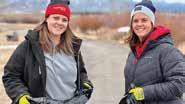

Scan this QR code with your phone’s camera to read about our latest community contributions.
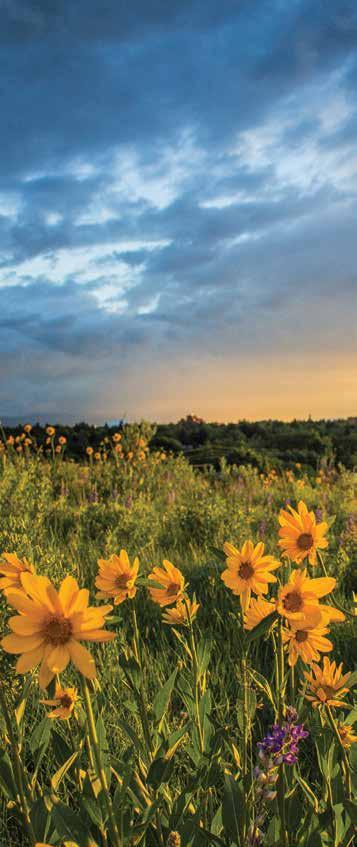
OURBANK.com /// 406.585.3800 $10 is only for online account openings, a free gift will be given for in branch openings. $10 will be deposited into new account within 1-2 business days of completion. Bank rules and regulations apply.
Power through Partnership


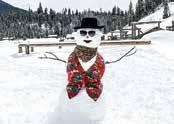

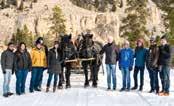
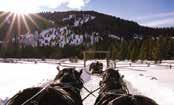
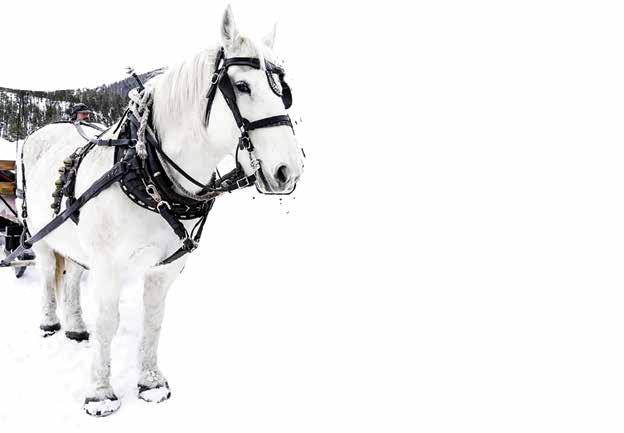

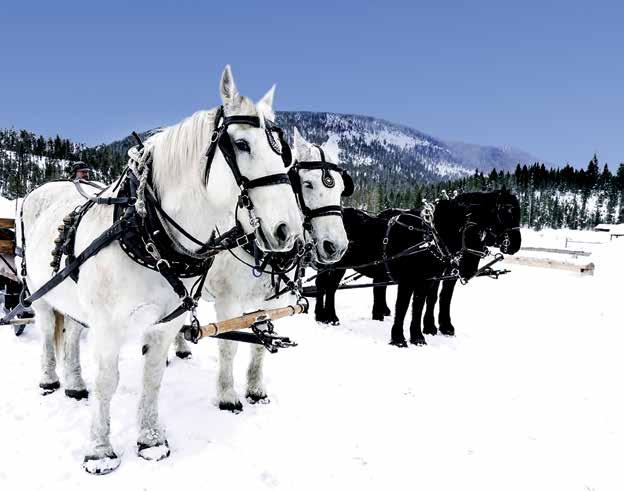
Your home is more than bricks and mortar. It’s full of memories and you’re reflected in every detail. So if you experience a claim, you’ll want more than a check from your insurer. You’ll want your life back, and to rebuild without hassles, headaches, or delay.

Robert Kerdasha understands what makes your home special, whether it’s a condominium or a custom-built house. We know it took care and effort to turn your house into a home. And we want to make sure you always feel at home, even if something happens and you need to repair, replace, or rebuild.


(406) 640-0375 robert.kerdasha@assuredpartners.com
ELKHORN RANCH
On a sunny summer day in 2018, Kadie Neuharth waited in a transplant house in Arizona. Thousands of miles from home, the 31-year-old woman was confronting the consequences of a rare heart disease that threatened to kill her, while clinging to hope that a new heart would find her.
On that same night, Beatriz Lazcano was facing a devastating reality of her own. Just hours before, her teenage daughter, Breanna Diaz, was killed suddenly. Now, the heart that had pulsed in Breanna that very day was en route to give life to a stranger.
That stranger was Kadie Neuharth.
Through her donation, Lazcano saved Neuharth’s life and inspired the young woman to pay the gift forward by living her life in service to those with parallel struggles. The story of these two women, entirely independent yet intimately intertwined, is proof that we all have the capacity to change the lives of people we don't even know, and may never meet.
Years later and with her illness behind her, Neuharth still vividly recalls the moment she found out that, at just 27 years old, her heart was rapidly approaching its expiration date.
Growing up in Mitchell, South Dakota, Neuharth was a dancer. She made it through childhood and into her 20s living what she described as an active and healthy lifestyle. Normal.
After years of seeing doctors about her constant headaches and lightheadedness, she found herself at Minnesota’s Mayo Clinic where she finally got an answer.
Neuharth was diagnosed with restrictive idiopathic cardiomyopathy, a rare heart disorder with an unknown cause and no known cure.
The disorder is most commonly diagnosed during childhood, and the survival rate beyond two years from the diagnosis is less than 50 percent. Its most common presentation is congestive heart failure, and for many patients a heart transplant is necessary.
Growing up, Neuharth had dreams of living a life of adventure and travel. Her family says she never lost the courage and spunk that comes with youth, calling her “a spitfire all her life.” No one was prepared to hear that the brown-eyed girl
with the wide smile was living with a broken heart. “It was like the pit in the stomach we were hoping it wasn't,” Kadie said. Her original plan was to hold out for a cure. But the cure never came, and her condition only worsened.
Her heart went in and out of arrhythmia where it beat abnormally, necessitating five cardioversions — essentially, getting her heart shocked back into rhythm. Neuharth also underwent multiple ablation procedures, where surgeons cauterized tissue in her heart. The ablations were supposed to stop her arrhythmia, but they were just a Band-Aid. Time ticked on. Three years into her diagnosis, at the age of 31,Neuharth’s life didn’t look like that of the active, spunky girl she had once been. Her lips were always blue from lack of oxygen and she required a medicine pump. But she kept holding on. It wasn't until she got a kidney infection that things took a turn for the worse. Neuharth’s body grew extremely weak as it started to show more intense signs of heart failure, she said, something her earlier procedures couldn’t prevent.
At the end of June of 2018, Neuharth was accepted onto the heart transplant list. Her doctors advised her to transfer to the Mayo Clinic in Scottsdale, Arizona, which often had shorter wait times, averaging eight to 10 months. But even making the list was not an easy feat. Neuharth described the process as having to be sick enough to need a heart, but healthy enough physically, emotionally and mentally, to accept one. Doctors had to evaluate every aspect of her life before giving Neuharth the OK.
Neuharth was in Scottsdale four weeks before she got the call that would change her life — and eventually the lives of so many others. She underwent the transplant the very next day, on August 15, 2018.
Neuharth said she was scared, but she didn’t let that stop her. When she awakened from the transplant, Neuharth couldn't believe the change. It was as if years of hardship and illness had been instantaneously reversed.
“I was like, ‘Oh my God, I can breathe,’” Neuharth recalled. “I think that heart failure was so slow and spaced out, I didn't realize how bad I had felt. You don't realize how bad
148 MOUNTAIN MTOUTLAW.COM 148 MOUNTAIN MTOUTLAW.COM
you're actually feeling until you feel good again. It felt like I had something pushed on my chest for so long, and then all of a sudden it was light and airy—I felt good.”
“She was back to Kadie,” her grandmother said.
After what Neuharth described as an “amazing recovery,” requiring less than a week in the hospital, she started the road back to normal with a heart that worked the way it was supposed to. At the time, she didn’t know anything about her donor, Breanna or “Bree,” who died at just 19.
It wasn't until a year after the surgery that Bree’s mother, Beatriz, received a letter Neuharth had written while she was in the hospital. All transplant patients have this option, but only some write the letters.
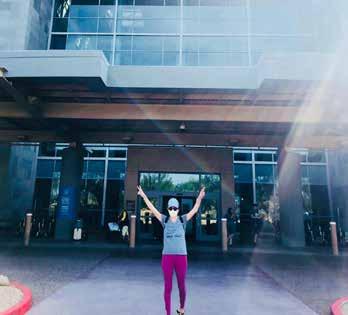
Lazcano wrote back, and she and Neuharth began talking. Because of the pandemic, it wasn't until February of 2022 that they met in person—almost four years after the transplant.

“I don't have words to describe it,” Neuharth said, tearing up. “I had kind of been staying on my side of the lineup until then, but once I met her everything became real. That’s when all the emotion hits and you just have this huge sense of gratitude in life.”
Lazcano said though Neuharth was a complete stranger, she felt comfort knowing that her daughter’s heart impacted the young woman’s life so intensely, something she never had imagined was possible.
“She’s an amazing soul, Kadie,” Lazcano said. “She tells me how well she takes care of her heart. She reminds me a lot of my daughter. She’s strong; she’s a strong person—and that’s how my daughter was.”
Lazcano said she misses her daughter every single day. She described Bree as someone who never failed to make anyone smile; who was strong, stubborn and resilient; and who was beautiful inside and out. And though the pain of her daughter’s absence will never fade, she said meeting Neuharth was a gift.
“It’s something I can't really explain, but when I met her I felt like something inside rested a little bit—it brought a little bit of peace,” Lazcano said. “I will never forget my little girl
and her big smile. I know she is continuing to live in Kadie. I am grateful to be a part of Kadie's life and get to see her live her life to the fullest as I would’ve for Bree.”
Now, Neuharth uses her story to do what Bree’s heart has done for her—offer the gift of hope to complete strangers. Neuharth speaks with people who have gone through or are going through similar health battles. She hopes to bring more awareness to and educate people about organ donation and the importance of advocating for your own health.
“Organ donation is the greatest gift you can ever even think of giving,” Neuharth said. “It opens your eyes to all the things that before this would stress you out, make you sad or mad. It kind of opens your eyes to how little some things are in the grand scheme of life.”
Though she still has good and bad days, Neuharth said she will forever be grateful for the life she now lives, which for a while, didn't seem possible.
“It’s a huge gift because every day I think of how lucky I am and appreciative and grateful for all those small things,” she said. “To be able to appreciate just to breathe and talk and go outside and walk around and just feel good.”
Clarise Larson is a writer and photographer based in Juneau, Alaska. Originally from Minnesota, she earned a journalism degree at the University of Montana and fell in love with the people and culture of the West.
 Kadie Neuharth smiles during her speech at the American Heart Association’s Go Red luncheon in February 2019. She attended the same event just two years prior when she was still pre-transplant and struggling with her heart.
PHOTO COURTESY OF KADIE NEUHARTH
Kadie Neuharth and Beatriz Lazcano hug after meeting for the first time in February 2022. Neuharth was the recipient of Lazcano's daughter's heart, and three years after the transplant, the pair met in Palm Springs, California to meet in person for the first time. PHOTO COURTESY OF KADIE NEUHARTH
Kadie Neuharth smiles after being discharged from the hospital after her successful heart transplants at the Mayo Clinic in Scottsdale, Arizona.
Kadie Neuharth smiles during her speech at the American Heart Association’s Go Red luncheon in February 2019. She attended the same event just two years prior when she was still pre-transplant and struggling with her heart.
PHOTO COURTESY OF KADIE NEUHARTH
Kadie Neuharth and Beatriz Lazcano hug after meeting for the first time in February 2022. Neuharth was the recipient of Lazcano's daughter's heart, and three years after the transplant, the pair met in Palm Springs, California to meet in person for the first time. PHOTO COURTESY OF KADIE NEUHARTH
Kadie Neuharth smiles after being discharged from the hospital after her successful heart transplants at the Mayo Clinic in Scottsdale, Arizona.
149 MOUNTAIN MTOUTLAW.COM 149 MOUNTAIN MTOUTLAW.COM
PHOTO COURTESY OF KADIE NEUHARTH
The way a person dresses impacts the way they carry themselves, the way they think about themselves, and the way they interact with others. I love what I do because I get to help each person show up as their best version through their customized style.
“ ” scan for events
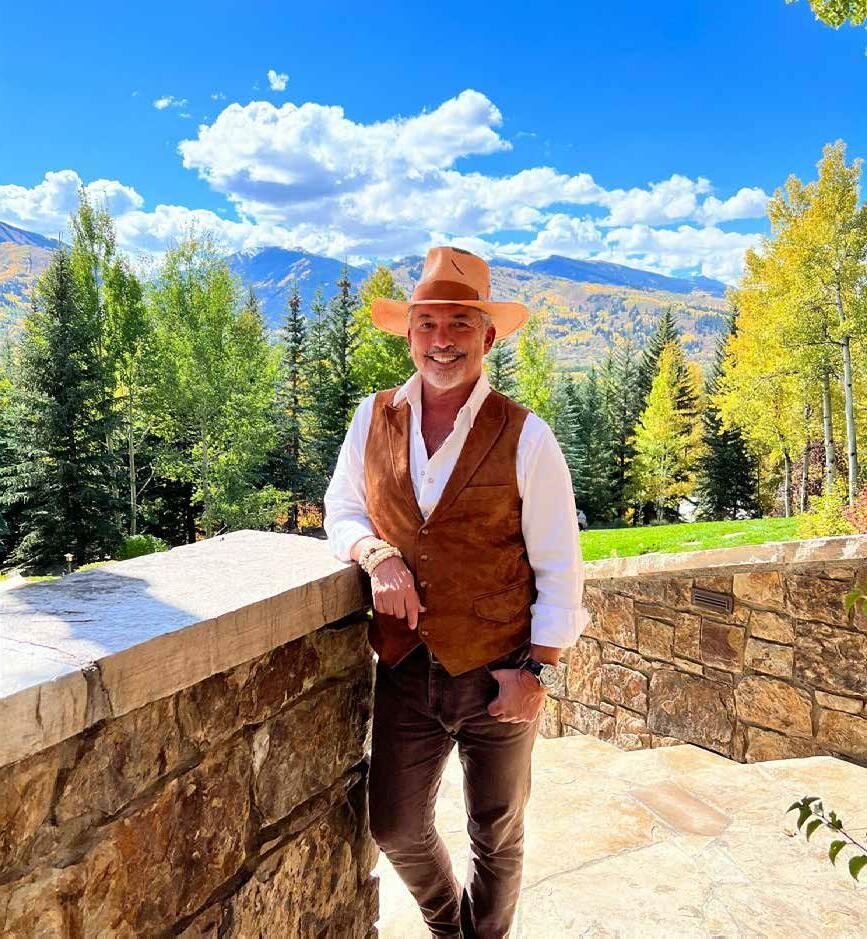
www.eleveebyrickey.com CUSTOM DESIGNED CLOTHING MADE WITH PASSION
970-471-1667 rickey@elevee.com


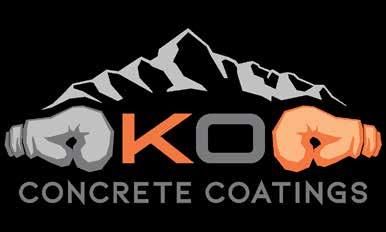
“WE’LL KNOCK OUT YOUR FLOORS IN 1 DAY” koconcretecoatings.com SCAN HERE FOR MORE INFO
Unconditional
Advice. +1 406.556.8200 | bitterrootcapital.com | 118 E Main Street, Bozeman, MT 59715
Fly Fishing in Montana can be a rugged, sometimes-tiring adventure—that’s why Madison Double R will be a welcome respite at the end of each day.


Located on the world-renowned Madison River south of Ennis, Madison Double R offers first-quality accommodations, outstanding cuisine, expert guides, and a fly fishing lodge experience second to none. Contact us today to book your stay at the West’s premier year-round destination lodges.



MADISONRR.COM •
406-682-5555 • office@madisonrr.com
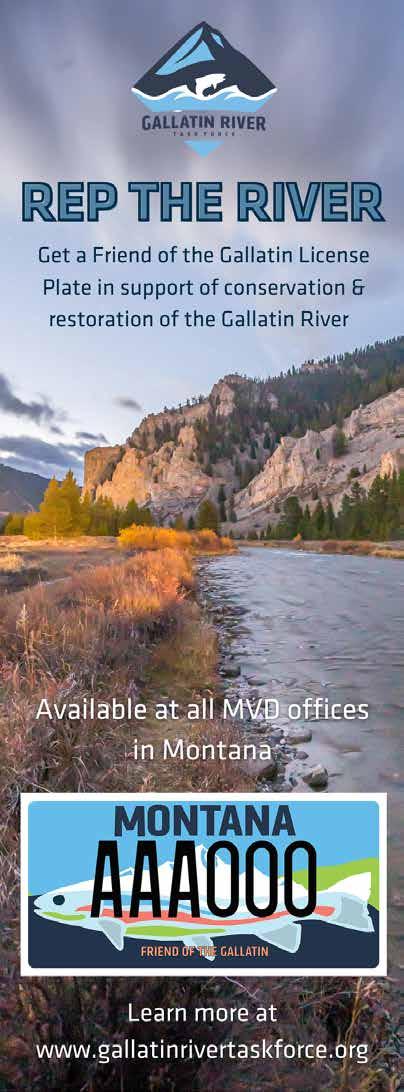


Their story Their story begins with yours... begins with yours... Investment products and services are offered through Wells Fargo Advisors Financial Network, LLC (WFAFN), Member SIPC, a registered broker-dealer and non-bank affiliate of Wells Fargo & Company WFAFN uses the trade name Wells Fargo Advisors Any other referenced entity is a separate entity from WFAFN Paid AD Let us help you write Let us help you write a good one a good one Life comes with a series of planned and unplanned events. Each life moment affects your finances and we're here for our clients through it all. Visit us online to learn more Shoretosummitwm.com
FEATURED OUTLAW
Tom Skerritt reflects on a lifetime relationship with free-flowing waters
By Brian Ladd
156 MOUNTAIN / MTOUTLAW.COM
MTOUTLAW.COM
 PHOTO BY STEVE KORN
MOUNTAIN MTOUTLAW.COM
PHOTO BY STEVE KORN
MOUNTAIN MTOUTLAW.COM
The crisp Pacific Northwest air was illuminated by the morning-angled sun; gold, amber and purple hues reflected in the oak and maple leaves outside. I’m sitting with Tom Skerritt at the stately Seattle Tennis Club overlooking Lake Washington. We’re a long way from Montana, but when the renowned 89-year-old actor starts waxing poetic about rivers, I feel like I’m sitting with him on the banks of the Gallatin River, our feet dangling in its cool, free-flowing waters as he describes the rhythm of the current.
Reality blurred as I looked at who I knew as Reverend Maclean, the Scottish-American Presbyterian minister and father in Norman Maclean’s renowned novella A River Runs Through It, played by Skerritt in the film adaptation of the book. Perhaps to some Skerritt may appear as Top Gun’s Commander Mike “Viper” Metcalf, or to a more obscure bunch he might be known as Duke Forrest from 1970’s M.A.S.H. But I suppose in reality, he’s just Tom; a father, grandfather and conservationist with a lifelong deep love for rivers.
The distorted reality warped further as what I intended to be a linear conversation about river conservation shattered into a two-hour artistic smattering of Skerritt’s deepest musings. Skerritt wove a melodic interplay between the past and the future, reality and aspiration, with a trajectory converting mundane to import. It was only later with reflection on our interaction that my understanding of his words grew.
Though the way he discussed rivers with me remained mostly abstract and whimsical, his impact on them has been
anything but. Skerritt served for nine years on the board of directors for American Rivers, one of the most well-known river conservation organizations in the nation. His tenure notably included the historic removal of the Elwha and Gline dams on Washington’s Elwha River in 2011, a monumental
win for proponents of free-flowing rivers—Skerritt attended the removal and emceed the ceremony.
On the American Rivers board, Skerritt says he was always surrounded by incredible scientists and experts and always made a point to listen rather than to interject, but he brings something altogether different and perhaps equally impactful to this conversation: passion. You see, when Skerritt talks about rivers, he uses the language of emotion.
More recently, Skerritt’s been especially active in advocating for rivers in southwest Montana, where so long ago he first dipped his toes into waters of the Gallatin as Reverand Maclean.
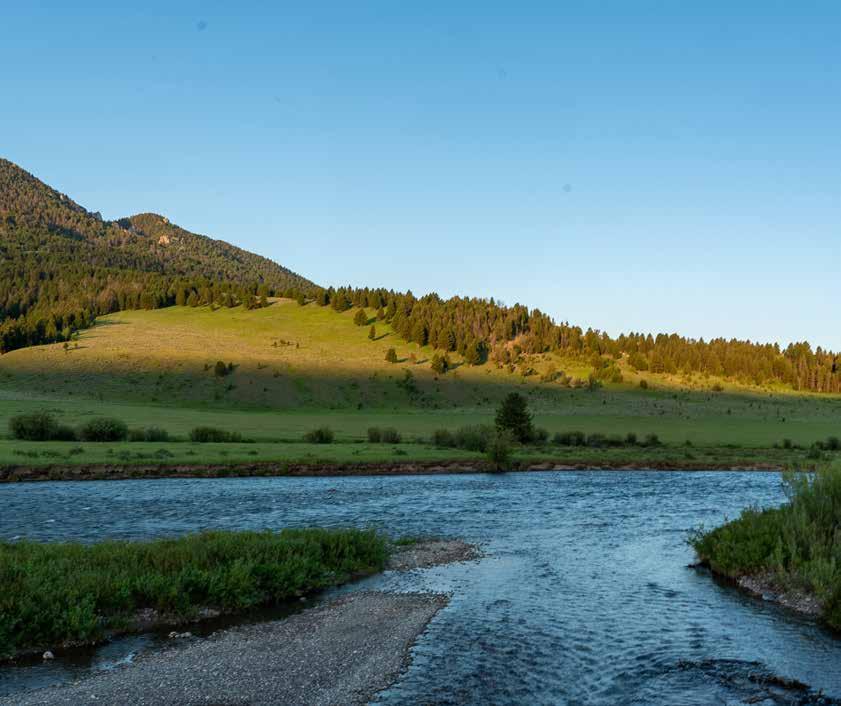
[In] life the best of what we have is that which we feel.
– Tom Skerritt
The Gallatin River flows near Big Sky, Montana, with Levinsky Ridge in the background.
158 MOUNTAIN MTOUTLAW.COM
PHOTO BY MICAH ROBIN
“Filming A River Runs Through It was a transformative experience,” he posted on Twitter this year for the film’s 30th anniversary. “The beauty of the Gallatin River has remained with me all these years. But now, due to industrialization, it’s under threat.” He compelled his audience to follow the Gallatin River Task Force, a Big Sky-based conservation nonprofit working in the Gallatin River watershed, and a region with which Skerritt is becoming increasingly involved
Late in his life now, Skerritt sees rivers as a force that can illuminate our interconnectedness. Decades after playing the role of Reverand Maclean, he says now more than ever he understands Maclean’s famous words: “Eventually, all things
Mountain Outlaw met with Skerritt in November of 2022 to discuss his relationship with rivers, their significance and our role in protecting them.

Mountain Outlaw: When and where did your love and passion for rivers begin?
Tom Skerritt: Why don't I just flashback to when I was a kid and my father or my brother … taking me to go fishing, and I remember most putting my feet in cold water rushing by and the feeling of that. They're out there busy fishing and getting caught in the trees and all of that bad casting—of which there was quite a great deal of it—and I’d watch them and the rhythm of it.
Also at the same time at home, I had an older brother who would babysit me when my folks weren't around and he would put music on to keep himself from being bored and it was music that could be jazz [like] Charlie Parker, Ella Fitzgerald, somebody like that ... or Puccini's opera! He was 16 years old, I don't know where he got that good taste, and I didn't know what I was listening to. But the rhythms of that were suddenly what I felt. Looking back on it and understanding the rhythms of life, what I was feeling rushing by [on the river] was that same feeling of coming to know that which you had no idea what it was. I mean, putting your feet in cold water rushing by and listening to Billie Holiday singing the tune ... there's something about it that you are moved by internally, and it's not something that's explicable. It's something you just feel. [In] life the best of what we have is that which we feel.
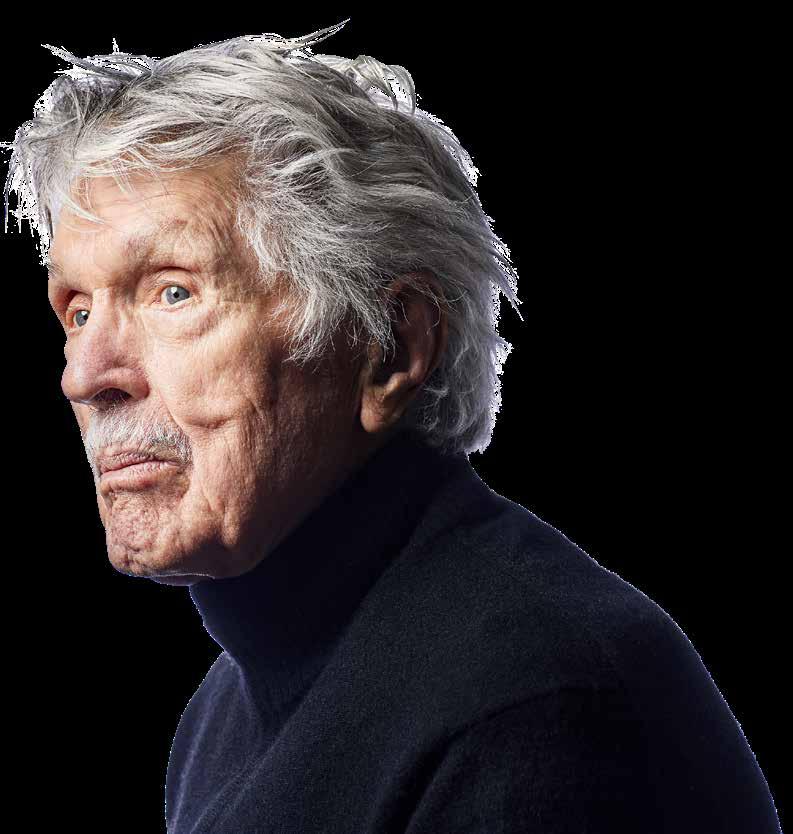
159 MOUNTAIN MTOUTLAW.COM
MO: That’s a beautiful account of your early history with rivers. How do rivers continue to contribute to your story today?

TS:
I have five kids … They've all come back here and I think they're watching me grow old. They're just wonderful people. And [I have] five granddaughters all gorgeous and whatnot. And I just had my first great-granddaughter. So all of that, it's quite moving, because you're gonna look back and we're talking about the same thing: history, our histories, what we are, who we are and everything where we grow up. And this country, this land, it's the best piece of real estate. This is United States. There's nothing like it anywhere. Having traveled a lot and been in other countries, [there's] nothing like this. So that's where we start is just first of all appreciating where we are ... I have five kids, five granddaughters, a great-granddaughter recently and the honor of that, experiencing that, and the importance of it is undeniable. But I wish I could take them to the rivers.
Left: Tom Skerritt who plays Reverend Maclean, casts his fly rod during the shooting of A River Runs Through It in 1991. PHOTO BY JOHN KELLY/GETTY IMAGES
Right Top: Tom Skerritt with director Robert Redford. PHOTO COURTESY OF TOM SKERRITT
Right Bottom: Vann Gravage, Tom Skerritt, Joseph Gordon-Levitt, A River Runs Through It , 1992. PHOTO BY AJ PICS / ALAMY STOCK PHOTO
160 MOUNTAIN MTOUTLAW.COM
But how do we take care of the river that serves all of us? Without this river we don't exist. - Tom Skerritt
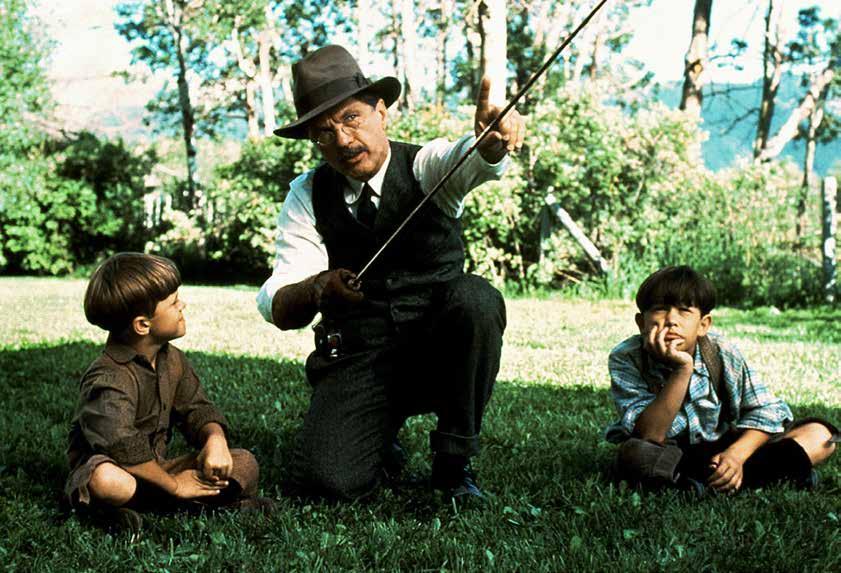

161 MOUNTAIN MTOUTLAW.COM
At sunrise everything is luminous but not clear. - Norman MacLean
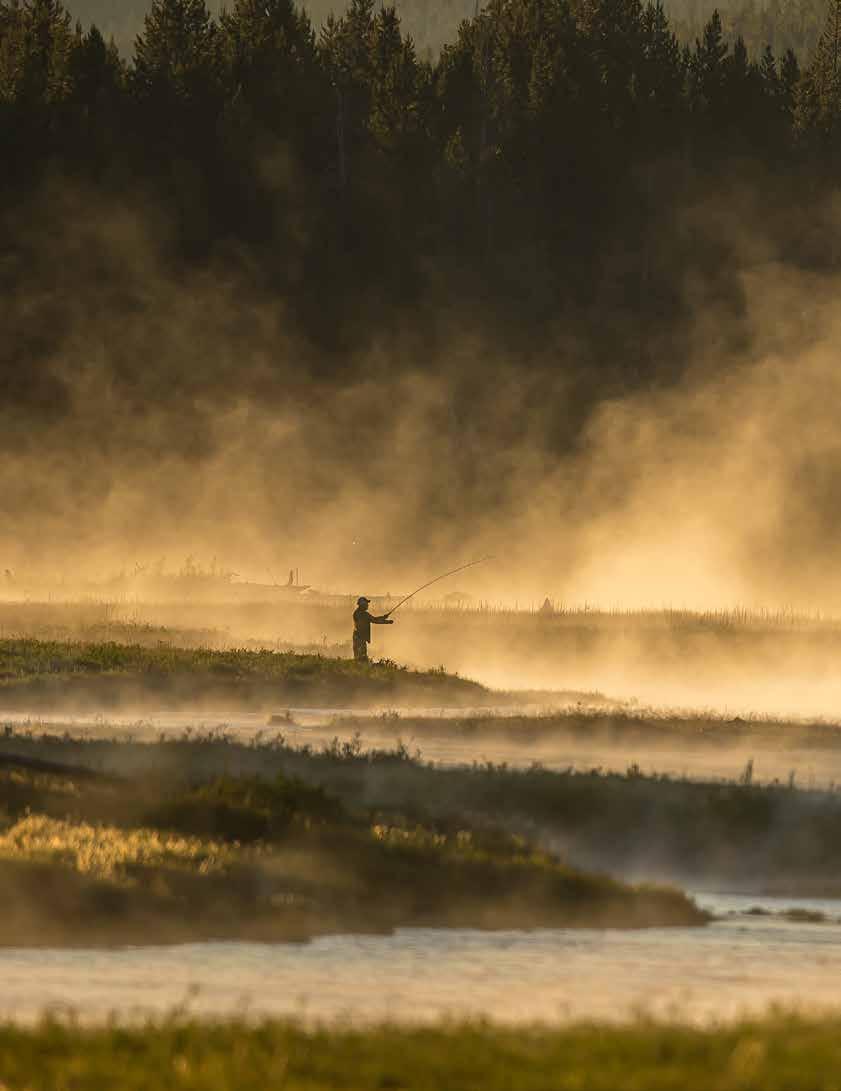 Fly fishing on the Gallatin River. PHOTO BY DAVE PECUNIES
Fly fishing on the Gallatin River. PHOTO BY DAVE PECUNIES
162 MOUNTAIN MTOUTLAW.COM
MO: What do we have to learn from rivers? What do they mean to us?
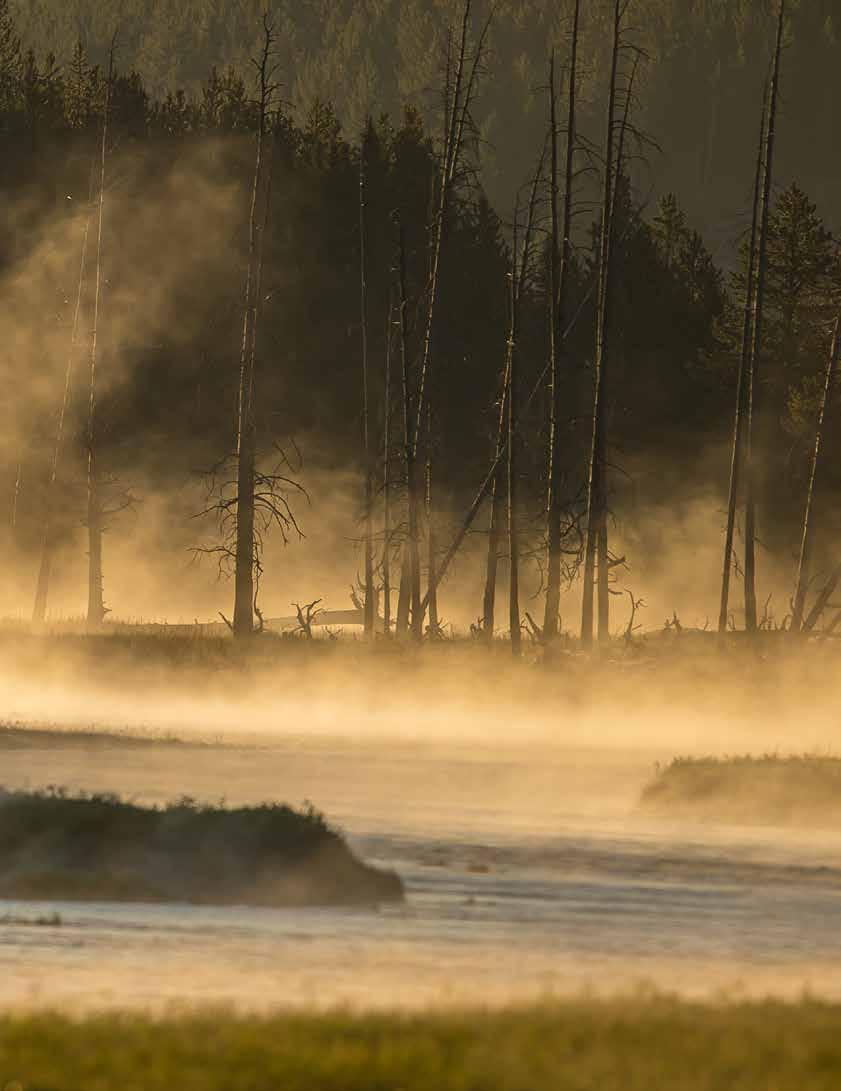
TS:
I remember too, as a kid, watching the rivers flowing, and you know, you dangle your hands in them and you think, 'Wow, where does it start and where does it go?' And as I grew up, it stayed with me as a kid. I think [about] all that music that my brother gave me [and] the rhythms of it and the feeling. The feeling of it was here in the water. In jazz you didn't know what was coming up next. And you really don't know about the rivers, the way they ripple, the way they kind of wash along the edge, and you know, there's one big [trout] over there by that rock, just behind that rock. And [there’s] all of these questions you have, but it’s just water flowing. Where does it start? I used to wonder ‘where does it start? Where does this end?’ It’s like a train, or listening to the longer distance of a train—the sound of it: (Skerritt hums, his vibrating pitch rising and falling). You know, the horn, the sounds of it, one way or another, the whistles, all that kind of stuff as a kid.
I think da Vinci once wrote ‘you put your hand into water and feel the rush go by through your fingers, and you feel the past, the present and the future.’ And that one I remember as a kid reading that and I thought ‘what does that mean?’ But it stuck with me somehow, there in the imagination. It’s one of those remote things. Leonardo da Vinci, he’s a painter, right? There’s nothing he couldn’t do, I mean he was a timeless genius. But it’s so true. It's so easily that you understand that: you put your hand in the water and [it’s] the past, present and future rushing through your fingers. You can’t explain that. You have to know what it feels like to do that … You know, you dangle your hand out there, maybe you’re gonna wash off some of the oil from a fish, or whatever it is.
All of that stuff was what I got as a kid and I never knew quite how to utilize it but I was informed because I had a very active imagination apparently when I was quite young and I know that was activated by being in school … they had these creative programs in grade school which I guess they don’t have anymore and I think it’s part of a crisis we’re facing is we seem to lack a really truly informed imagination. So that’s what I feel I had was an informed imagination … It goes on and on, the wonder of it … the rivers always seemed to me that kind of thing that goes on and on and on. Where’s it coming from? Where’s it going to? And what’s this life in here and how do these fish know that there’s a certain bug that comes out at a certain time of year and they know what part of the river it goes to? Is that not something to respect? Is that not a degree of intelligence of that life compared to ours? In a lot of ways, I don’t know really the difference when you sit there with your legs in the water wondering that sort of thing.
I’m not trying to be romantic about it but the practicality
of what we’re trying to do by making more money or helping companies do better. Let’s modify our lives. And it's not condemning anything, it just said, look in the mirror. Are you a little bit older? What do you look like? Laugh at yourself ... and say 'You crazy old man.' And that's what I say to myself. A male ego has taken over. A male ego is just one who wants to rule over others. American males have started wars for centuries. What are we suggesting here? There's something at once very feminine, very male about the river. ... The edge of it is beautiful. That's the female; the water soaks in there [and] grows the cottonwood trees. All of this is the connection. We're not alone.
MO: What are the issues we face as a society in terms of the ways we engage with rivers, and the ways in which we seek to protect them?
TS: It really has to do with what's happened to the waters. That's the heart of what we're talking about … I was on the American Rivers board for nine years. I listened rather than try to [interject] anything in conversation, particularly with the professionals and science and some very, very significant people on that board. They were worth listening to. … I really have always appreciated the information and vast intelligence of this group of people. But I'm missing [where the] heart [is in all of this]. We talk about what we can do here and there, but what? What can we do about enjoying? How do we really enjoy this?... I was trying to say that if you want people to donate—which is a lot of what they were talking about—to American Rivers, I just feel we've got to get more [at] the heart of it …
But how do we learn to be better if we don't make mistakes? … How can we turn this around? What's happening with the rivers? We've known this for a long time, which is one reason American Rivers started in the early ‘70s was to make sure that the Wild and Scenic Rivers Act was enforced and acted upon by the government as was expected because that stuff tends to wander away. All good intentions are spoken over the microphone, and then they go off and play golf or whatever it is. They don't get it done. And the American Rivers was there to say 'please, I'm here. I'm paying attention. I'd like to help you. Let's work together.' … We have to be stronger about this, we really have to …
I feel I've got to find the right words, as we all must, to be able to say what we really feel about things, and the rivers really are us—they're the blood of the system, the vessels that go from the heart, which is the snow melting … But how do we take care of the river that serves all of us? Without this river we don't exist. That's a big one. And I don't take that lightly and that's why I'm very emotional about this.
>> 163 MOUNTAIN MTOUTLAW.COM
MO: An objectively huge moment in your tenure with American Rivers was when you attended and spoke at the largest dam removal in history on the Elwha River in Washington. How do you reflect on that significant moment in your journey as a conservationist?
TS:
That's an interesting throwback. I remember that. First of all, prior to the dam going down, a group of us for the American Rivers went up to look at and visit two dams … I had walked out on that dam, and I looked down at the pools that were there. And in each one of them were some salmon swimming. I said that can be only generations from over 100 years ago, still spawning somehow, and knowing that they want to go upstream just circling, waiting for the water to come down so they can fight it up there. And you start processing … I didn't know how to find the right words to say what I felt. And I remember looking at that [and] thinking ‘wow, those guys [have been] hanging around waiting for [the dam] to come down, 100 years of this of one generation after another waiting for it and they knew what was going to happen. I make believe, obviously, but that never left me. And then [they] tore that down.
This is a river that had all five salmon [that] used to swim all the way up the top. And they were the biggest salmon ever. Because it was the struggle of getting up that river, the struggle of going out solo [to] the ocean; [it was] always a struggle. And I've lived my life that way. So I could relate to it. It's all a struggle; the more you struggle, the more you get up that stream. And you get up to the top where the pebbles are, the gravel is. [It’s] a long ass haul in that way of getting there. And one of our failings as humans is we're always looking for more comfortable ways of getting things that make life easier. Life was meant to be a challenge … And this, all these efforts to try to overcome what we don't know by getting to know them. The wonderful imagination, pursuit of imagination, itself is really key to all of this ... what's going on right now is just the lack of imagination. I think we all agree to that. And you can't really be a good fisherman without having an imagination ... I don't care if I catch the fish anymore, I just want to get [a feeling].
MO: Did the dam removal at the Elwha River give you hope that we can do this on a bigger scale with the Snake River and in other rivers?
TS:
As long as we have a healthy river, we have hope. If we don't have a healthy river, we don't have hope. Open and shut. And now [the Elwha is] a real river that it once was. And it's a hydrant to climb up and we're going to get some of those big long fish that used to be 3 feet long. The Natives told me about their grandmother walking from the tail and taking three steps to the head of the fish. I don't think they come any bigger. But it's from the workout. It's from the trial and error.
MO: You’re at this point in your career where you’ve got this pulpit. What is the honest message people need to hear from you about conservation?
TS:
I think my concern really is that we're doing everything now for our own good. And not just [with] the river. But what it really means is our life. Where does it start? Where does it go? The train goes by the whistle. Where'd it come from? Where is it going? I always want to know … That's really what we're talking about with salmon going upstream. It doesn't kill them. It just makes them stronger. And that's really what we have to know that we can only become stronger individually by how much we've tried to overcome difficulty. Because at one point, you have to have difficulty. You cannot have the computer make your life easier.
MO: How do we change?
TS:
Einstein said, "Imagination is more important than knowledge" because it feeds it. Dammit. Feed it good things. Give them the river to fish. Give them the river to enjoy. Give them the river to feel as I did as a 5-year-old kid putting my legs in the river, feeling the water rush by. Put our feet in the river. Let's react to it in a way that makes us feel … That's what A River Runs Through It is about. All this other stuff that I'm talking about is how the river gets together. Our lives at the end—and I'm finding at my age—it all just becomes one … it's all about what we feel, and we’ve got to begin to feel again … We'll never really know how to verbalize that. Because in the end, most of this stuff is really about what we feel … I understand that “eventually all things merge into one and the river runs through it.”
Bella Butler and Cameron Scott contributed writing and reporting to this article.
Brian Ladd is a father and real estate agent in Bend, Oregon. At Ladd’s wedding more than 20 years ago, his brother, Eric, showed a clip of A River Runs Through It, and the circle was completed when Ladd had the opportunity to sit down with Tom Skerritt for this issue’s feature article.

164 MOUNTAIN MTOUTLAW.COM
Julie Tokashiki Skerritt and Tom Skerritt. PHOTO BY STEVE KORN
As long as we have a healthy river, we have hope. If we don't have a healthy river we don't have hope.
- Tom Skerritt
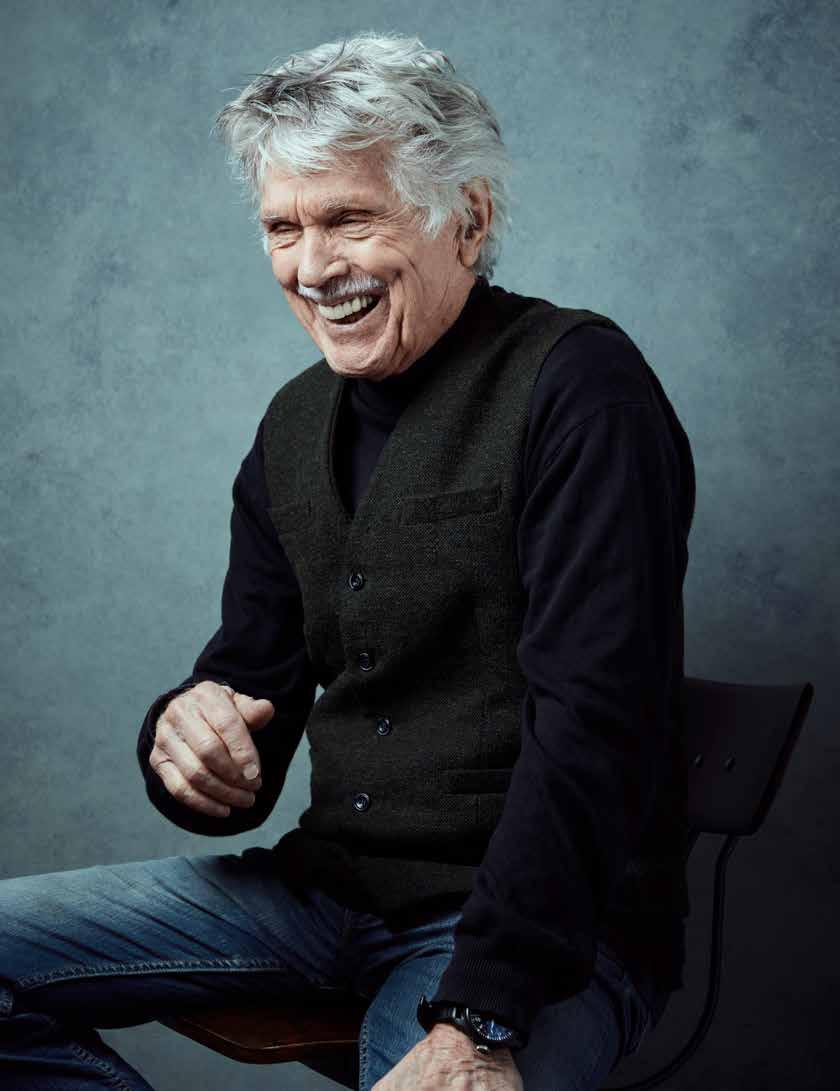
165 MOUNTAIN MTOUTLAW.COM
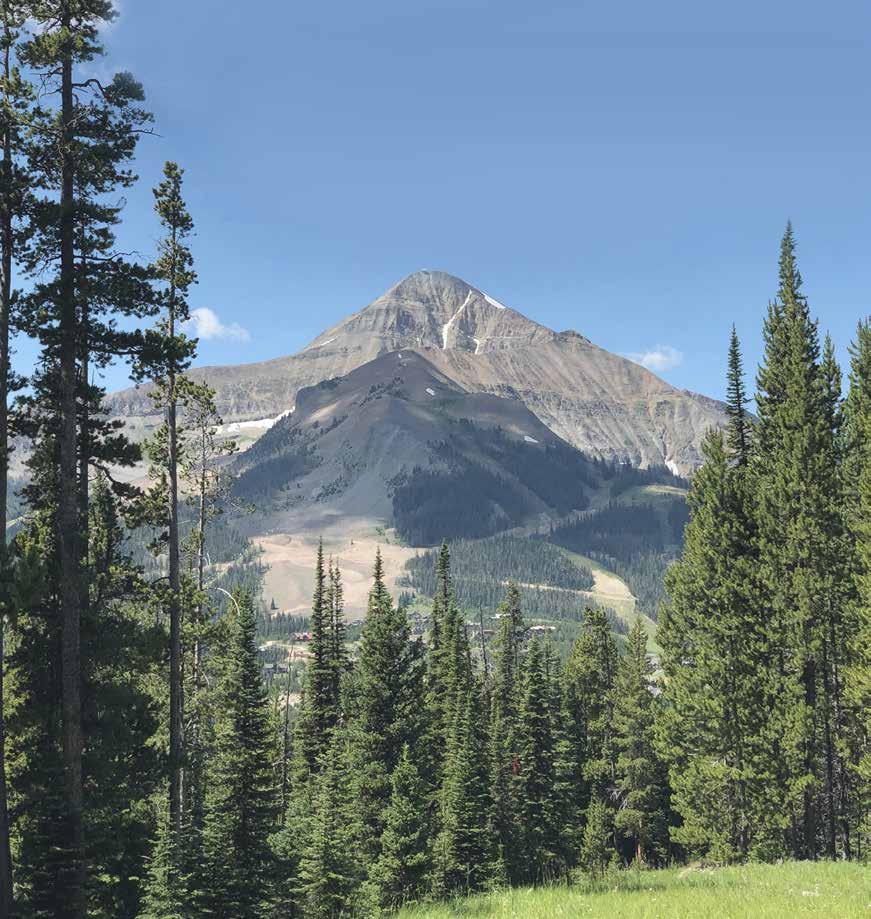
Share the experience of life in the mountains. PARK CITY | BRECKENRIDGE | BIG SKY | SUN VALLEY | TAOS | MAMMOTH LAKES | LAKE TAHOE THE HOME YOU LOVE. The Company You Trust. We offer travelers an incomparable guest journey—from seamless browsing and booking to easy check-in and the transcendent experience of a luxury vacation in the mountains. We offer homeowners peace of mind with exemplary home care. Whether you’re looking to maximize revenue from season to season or elevate the level of maintenance and attention your home receives in our challenging alpine environment, we are here for you.
Let’s do this together. Reach out to Tim Drain for your complimentary rental projection T.Drain@naturalretreats.com | Call: 406-209-2782 | NaturalRetreats.com

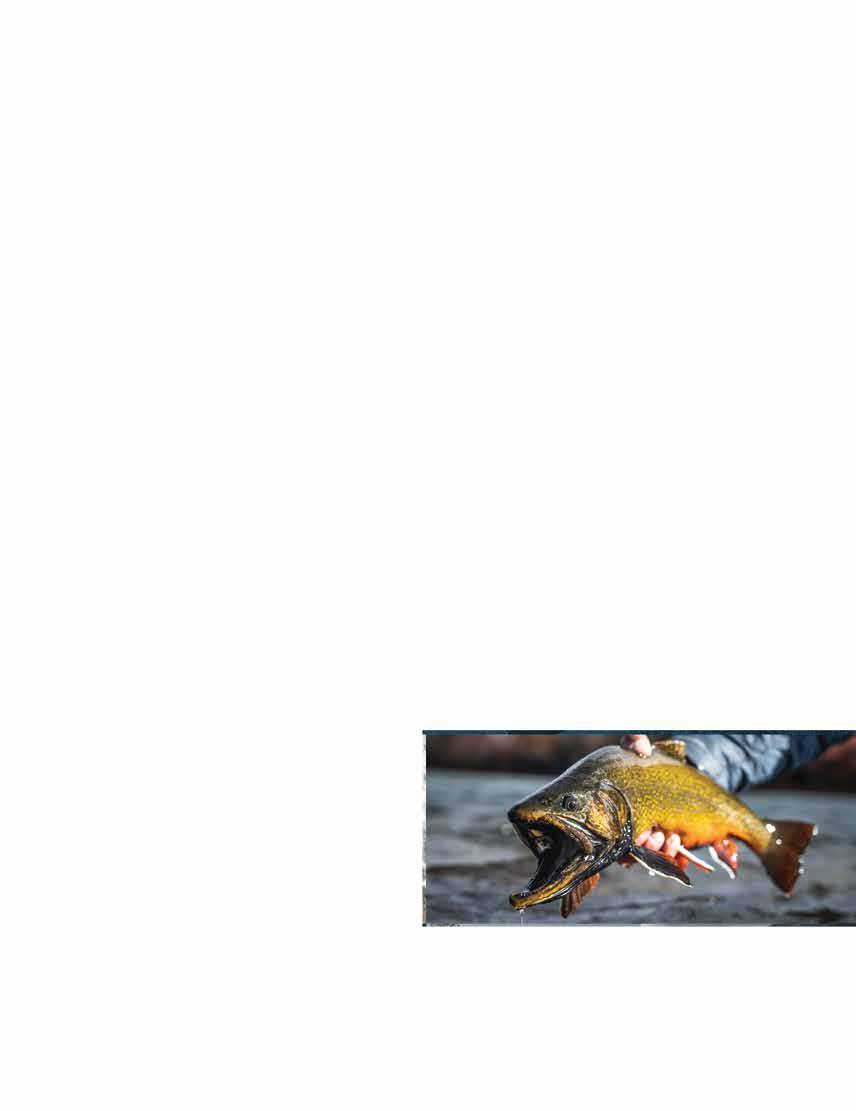
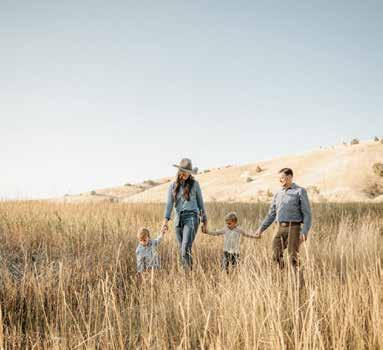

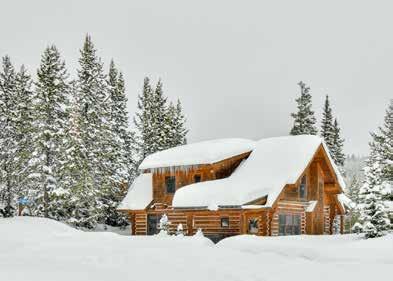
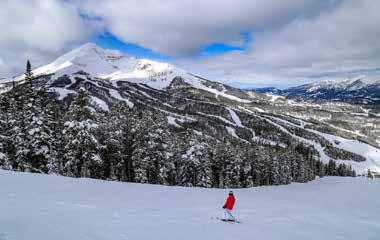
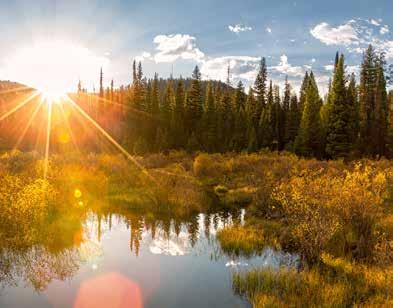
BOZEMAN | BIG SKY | LIVINGSTON | ENNIS | BUTTE © 2019 Engel & Völkers. All rights reserved. Each brokerage is independently owned and operated. All information provided is deemed reliable but is not guaranteed and should be independently verified. Engel & Völkers and its independent License Partners are Equal Opportunity Employers and fully support the principles of the Fair Housing Act. www.montana406.com www.evranchland.com Feel like you’re coming home, again. VIEW OUR EXCLUSIVE LISTINGS HERE
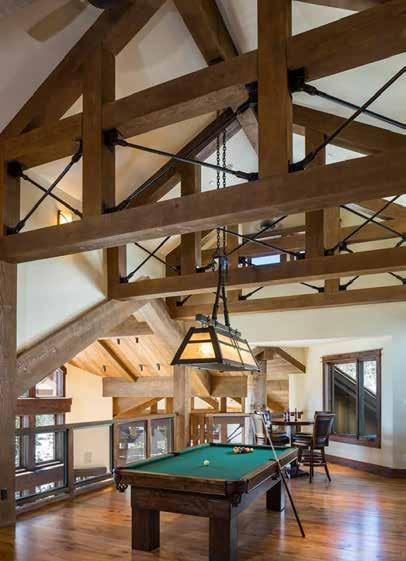



ARTISAN STRUCTURAL LOG AND TIMBER FRAMING whEre fĦRm mEEtS fĨnCTIĦn 75 Center Lane | Big Sky, MT michaelangelosbigsky.com or call (406) 995-7373 to make a reservation Authentic Northern Italian Cuisine • Extensive Wine List • Take Out Private Dining Available • Curbside Pick Up
LAST LIGHT
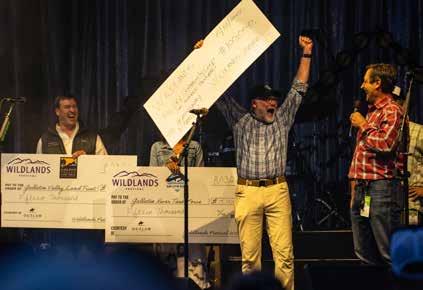

170 MOUNTAIN MTOUTLAW.COM
Wildlands Festival in Big Sky, Montana is rooted in creating a big impact for wild and scenic spaces through world-class music and community, including Grammy-winning artist, Brandi Carlile. The 2022 event raised over $145,000 for local charities devoted to conservation efforts. Inset: Eric Ladd, Chairman of Outlaw Partners presenting the check to Whitney Montgomery, CEO of Big Sky Community Organization. PHOTOS BY TOM ATTWATER

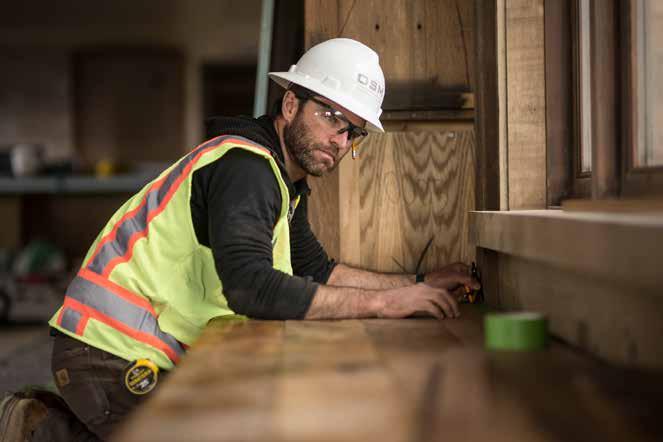

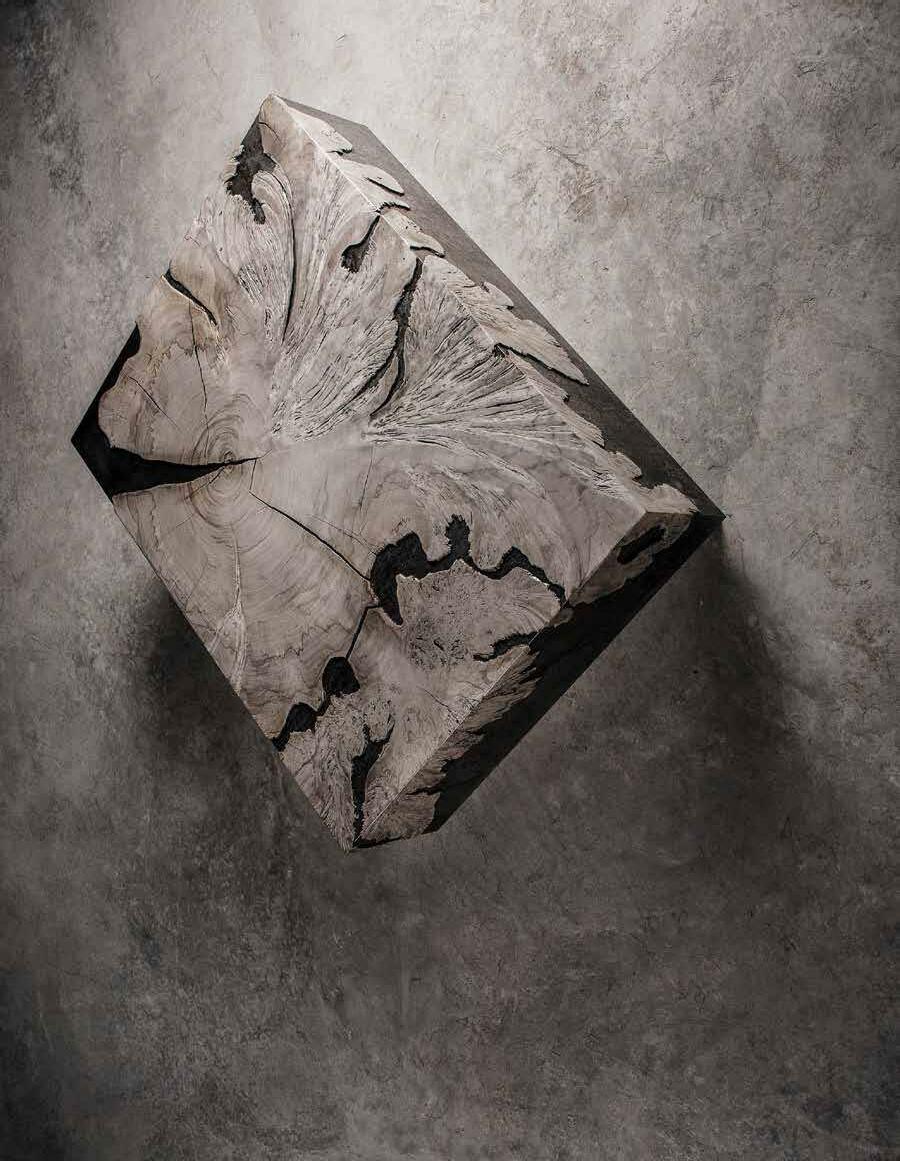
923 N. 7TH AVE BOZEMAN, MT | 406.587.5423 | GV.FURNITURE
















 The Milky Way shines over Big Sky’s Lone Mountain.
The Milky Way shines over Big Sky’s Lone Mountain.
























 Big Sky local Holden Samuels flies over the cornice on Dictator Chutes at Big Sky Resort. PHOTO BY ETHAN SCHUMACHER
Big Sky local Holden Samuels flies over the cornice on Dictator Chutes at Big Sky Resort. PHOTO BY ETHAN SCHUMACHER




































 Left/Cover: All smiles for Warren Miller while filming in Montana.
Top: Miller with extreme skiing pioneer Dan Egan. Middle: Pro skier Scot Schmidt, Miller and GoPro founder Nick Woodman at the Yellowstone Club. PHOTO COURTESY OF SCOT SCHMIDT
Left/Cover: All smiles for Warren Miller while filming in Montana.
Top: Miller with extreme skiing pioneer Dan Egan. Middle: Pro skier Scot Schmidt, Miller and GoPro founder Nick Woodman at the Yellowstone Club. PHOTO COURTESY OF SCOT SCHMIDT
 Above: Photographer Travis Anderson poses with Miller in Miller’s Big Sky home.
Above: Photographer Travis Anderson poses with Miller in Miller’s Big Sky home.
































 Matt, a former lawyer from Chicago, first got attached to the idea of ranching bison while focusing on Yellowstone’s bison as an employee for the Natural Resources Defense Council.
Matt, a former lawyer from Chicago, first got attached to the idea of ranching bison while focusing on Yellowstone’s bison as an employee for the Natural Resources Defense Council.

 The Skoglund’s herd consists of approximately 150 head of bison.
The Skoglund’s herd consists of approximately 150 head of bison.













 BY MIRA BRODY PHOTOS BY DANIEL J. COX
Polar Bears are one species who’s habitat is greatly impacted by a changing climate.
BY MIRA BRODY PHOTOS BY DANIEL J. COX
Polar Bears are one species who’s habitat is greatly impacted by a changing climate.


 Steven Amstrup captures a Polar Bear.
A ship takes a trip through scattered ice in the Arctic.
Steven Amstrup captures a Polar Bear.
A ship takes a trip through scattered ice in the Arctic.




 Jonathan Marquis draws Vulture Glacier in Glacier National Park. "Every time I put a pencil to paper, it's always a discovery. That's my style. I don't know what I'm doing, let me try," said Marquis.
Jonathan Marquis draws Vulture Glacier in Glacier National Park. "Every time I put a pencil to paper, it's always a discovery. That's my style. I don't know what I'm doing, let me try," said Marquis.
 BY RICHARD FORBES
BY RICHARD FORBES



















 PHOTO COURTESY OF RARE
PHOTO COURTESY OF RARE






 BY GABRIELLE GASSER
BY GABRIELLE GASSER

















 David Wallace, co-founder of CODA Farm Technologies, shows how the FarmHQ app allows farmers to control farm infrastructure like sprinklers.
David Wallace, co-founder of CODA Farm Technologies, shows how the FarmHQ app allows farmers to control farm infrastructure like sprinklers.










 BY MIRA BRODY
Bode Miller, the most successful male ski racer of all time, has taken on a new endeavor in Bozeman, Montana—a ski engineered for everyday fun on the mountain. PHOTO COURTESY OF PEAK SKI COMPANY
BY MIRA BRODY
Bode Miller, the most successful male ski racer of all time, has taken on a new endeavor in Bozeman, Montana—a ski engineered for everyday fun on the mountain. PHOTO COURTESY OF PEAK SKI COMPANY


 PHOTO
PHOTO




















 The Montana State Bobcats face off against the Drake Bulldogs in an NCAA college football game at Bobcat Stadium in Bozeman in September 2021. PHOTO BY ADRIAN SANCHEZ-GONZALEZ
The Montana State Bobcats face off against the Drake Bulldogs in an NCAA college football game at Bobcat Stadium in Bozeman in September 2021. PHOTO BY ADRIAN SANCHEZ-GONZALEZ







 - LEON COSTELLO
- LEON COSTELLO






































 Governor Doug Burgum. PHOTO COURTESY OF DOUG BURGUM
Governor Doug Burgum. PHOTO COURTESY OF DOUG BURGUM






























 BY BELLA BUTLER
BY BELLA BUTLER
































 Kadie Neuharth smiles during her speech at the American Heart Association’s Go Red luncheon in February 2019. She attended the same event just two years prior when she was still pre-transplant and struggling with her heart.
PHOTO COURTESY OF KADIE NEUHARTH
Kadie Neuharth and Beatriz Lazcano hug after meeting for the first time in February 2022. Neuharth was the recipient of Lazcano's daughter's heart, and three years after the transplant, the pair met in Palm Springs, California to meet in person for the first time. PHOTO COURTESY OF KADIE NEUHARTH
Kadie Neuharth smiles after being discharged from the hospital after her successful heart transplants at the Mayo Clinic in Scottsdale, Arizona.
Kadie Neuharth smiles during her speech at the American Heart Association’s Go Red luncheon in February 2019. She attended the same event just two years prior when she was still pre-transplant and struggling with her heart.
PHOTO COURTESY OF KADIE NEUHARTH
Kadie Neuharth and Beatriz Lazcano hug after meeting for the first time in February 2022. Neuharth was the recipient of Lazcano's daughter's heart, and three years after the transplant, the pair met in Palm Springs, California to meet in person for the first time. PHOTO COURTESY OF KADIE NEUHARTH
Kadie Neuharth smiles after being discharged from the hospital after her successful heart transplants at the Mayo Clinic in Scottsdale, Arizona.












 PHOTO BY STEVE KORN
MOUNTAIN MTOUTLAW.COM
PHOTO BY STEVE KORN
MOUNTAIN MTOUTLAW.COM






 Fly fishing on the Gallatin River. PHOTO BY DAVE PECUNIES
Fly fishing on the Gallatin River. PHOTO BY DAVE PECUNIES




















